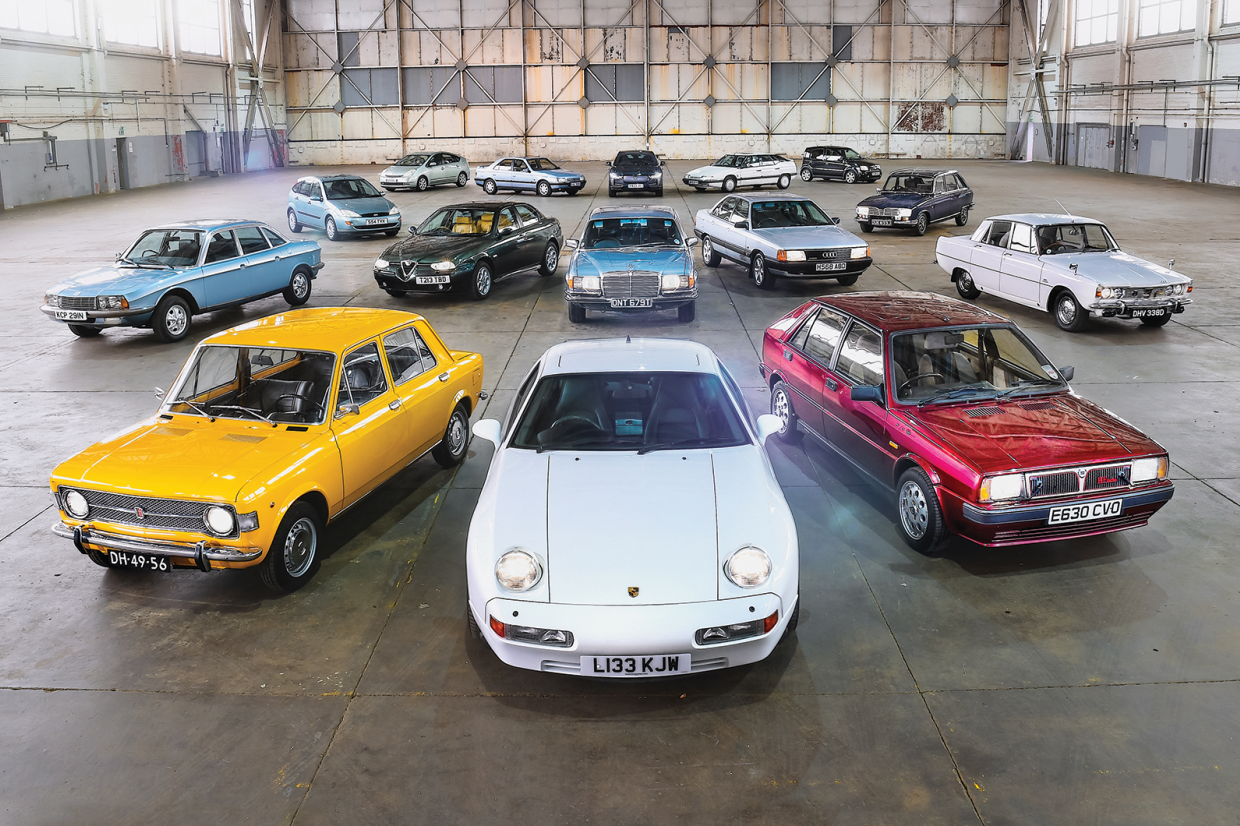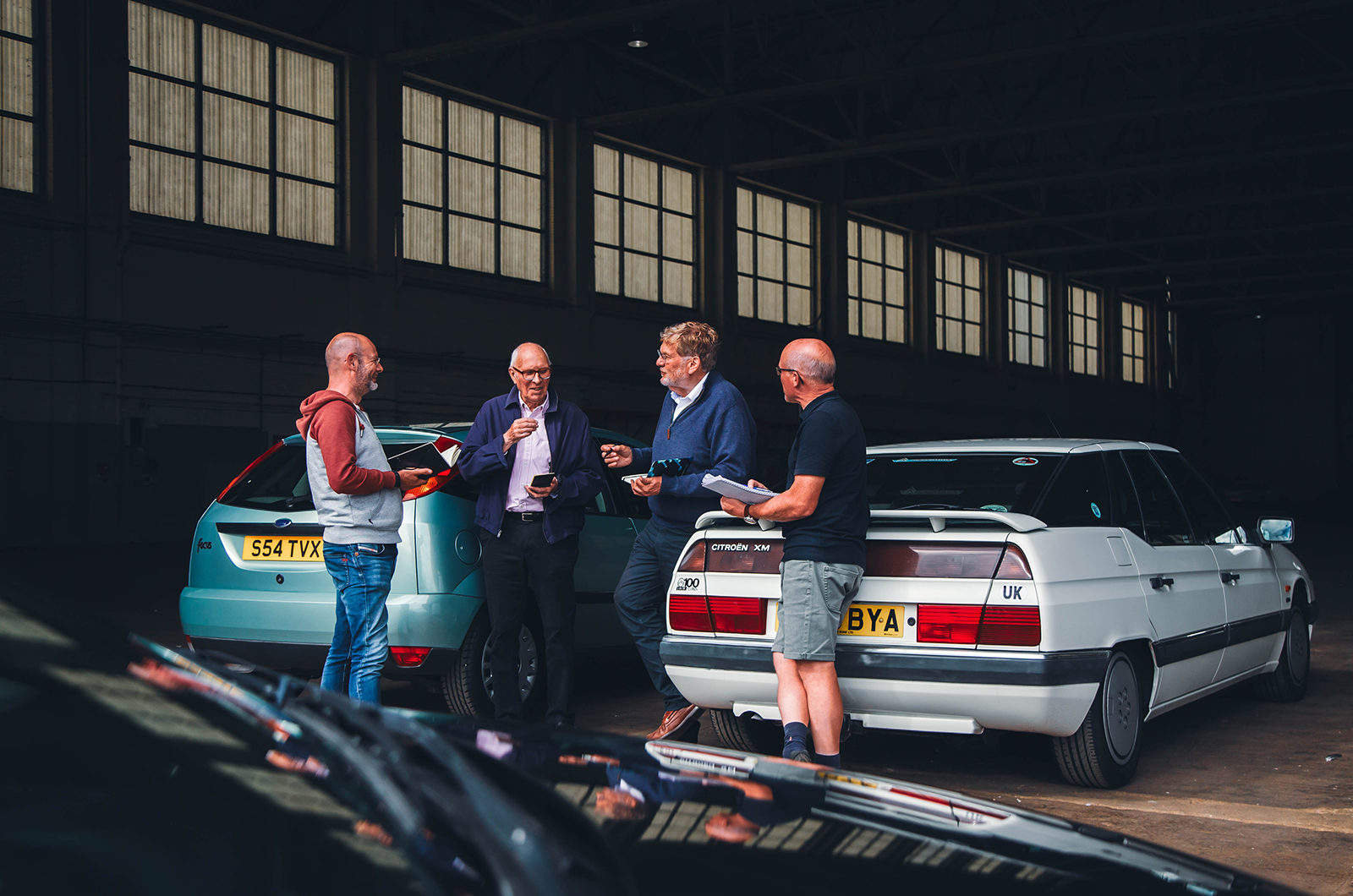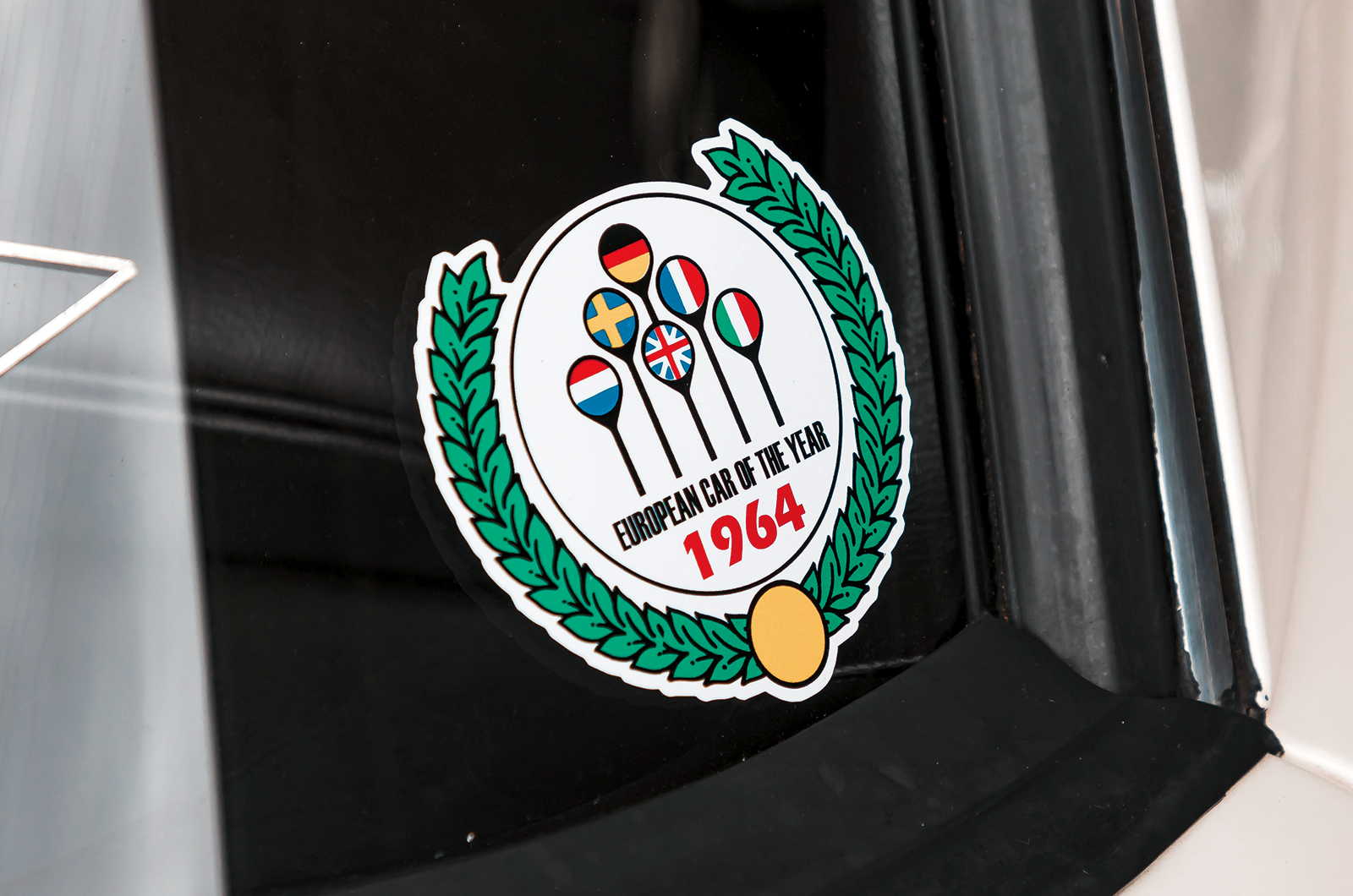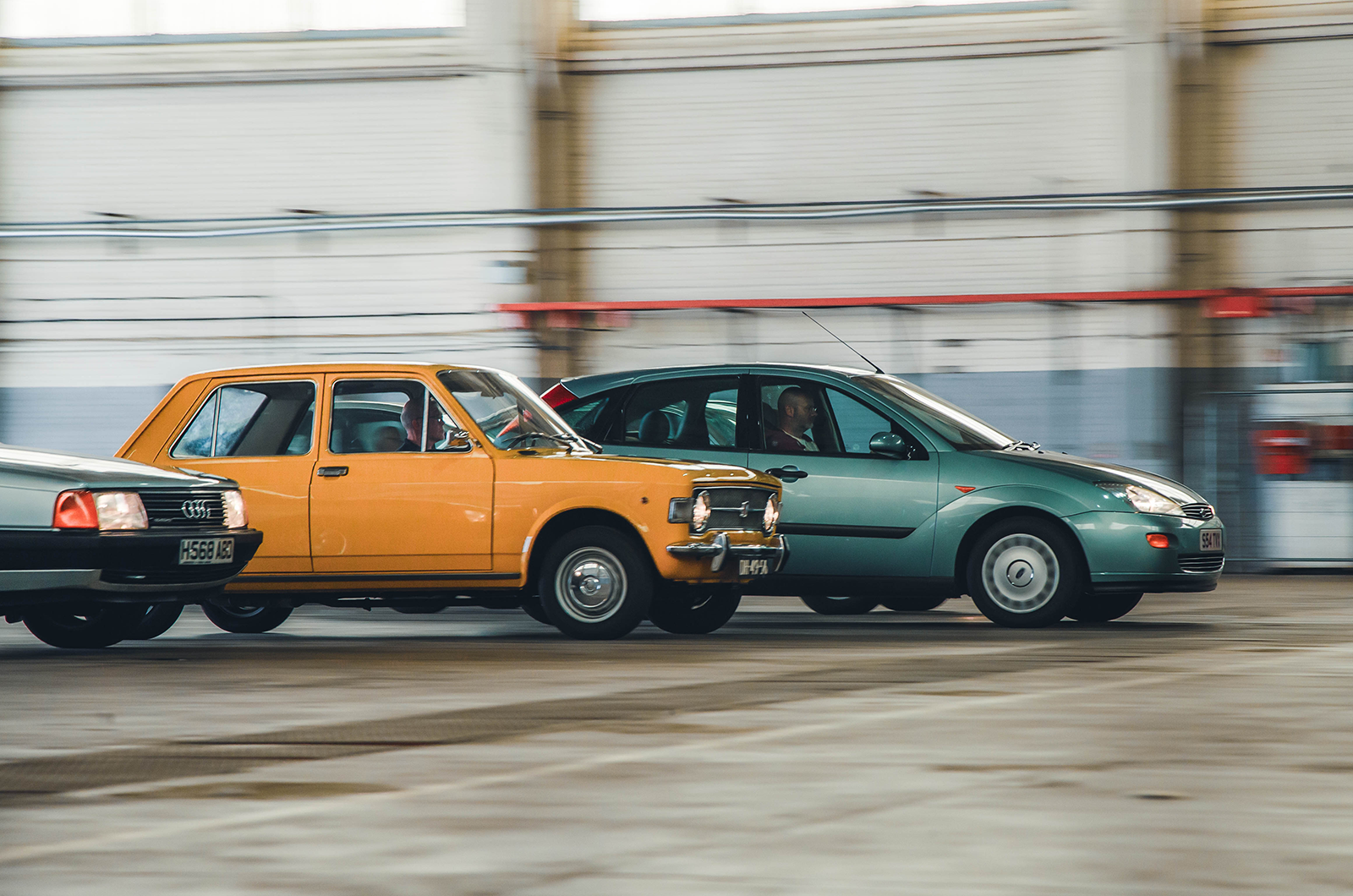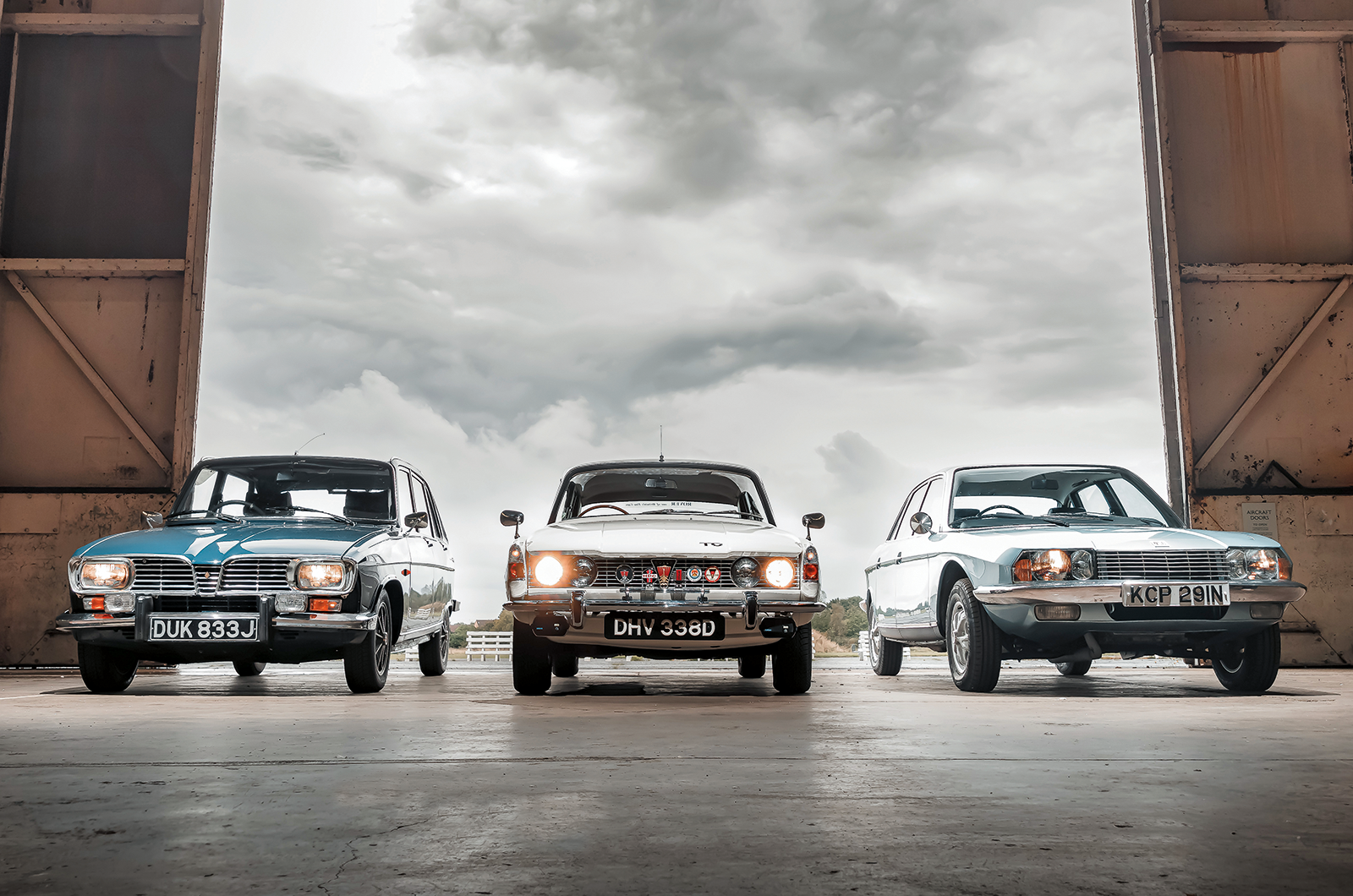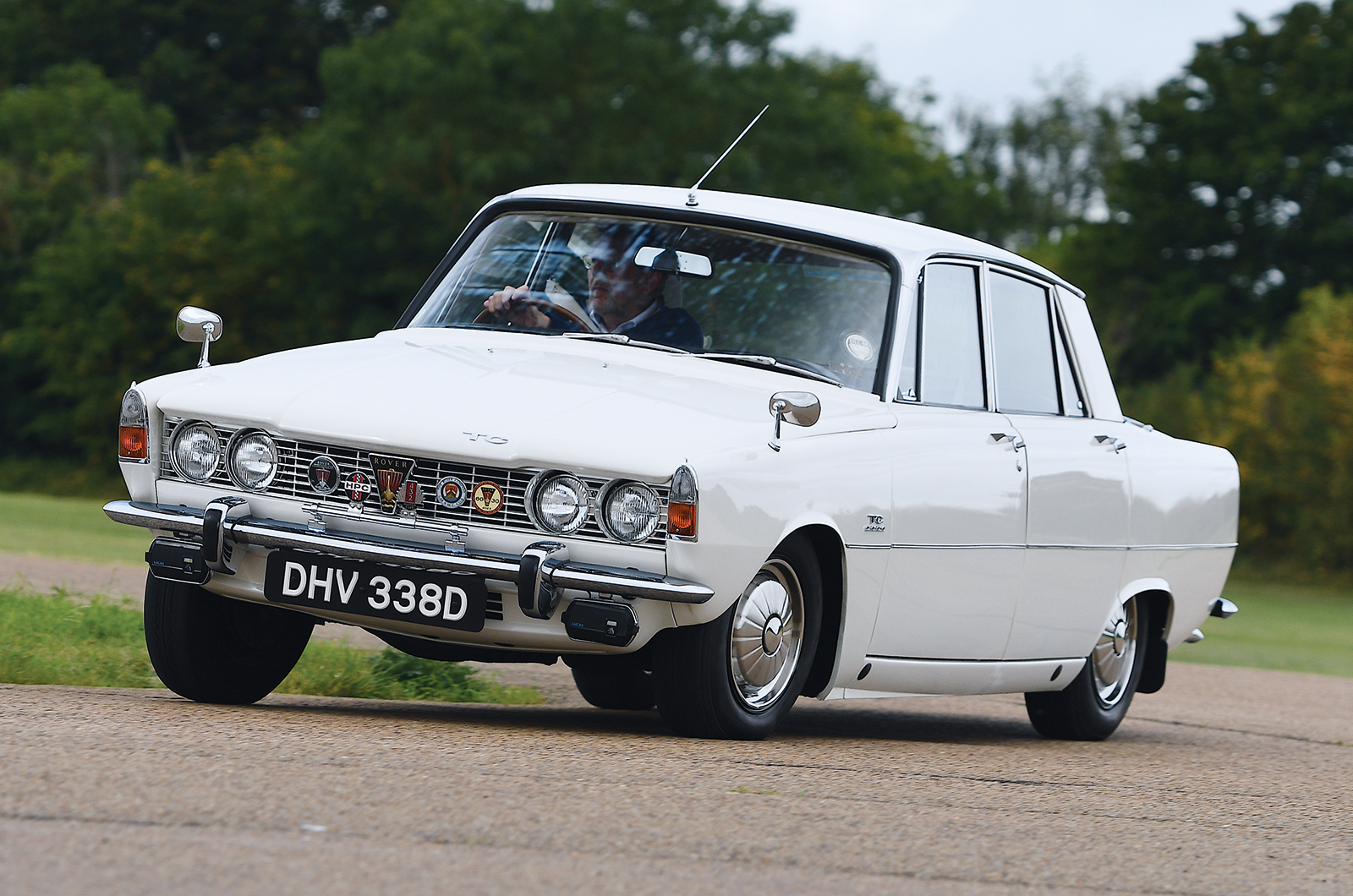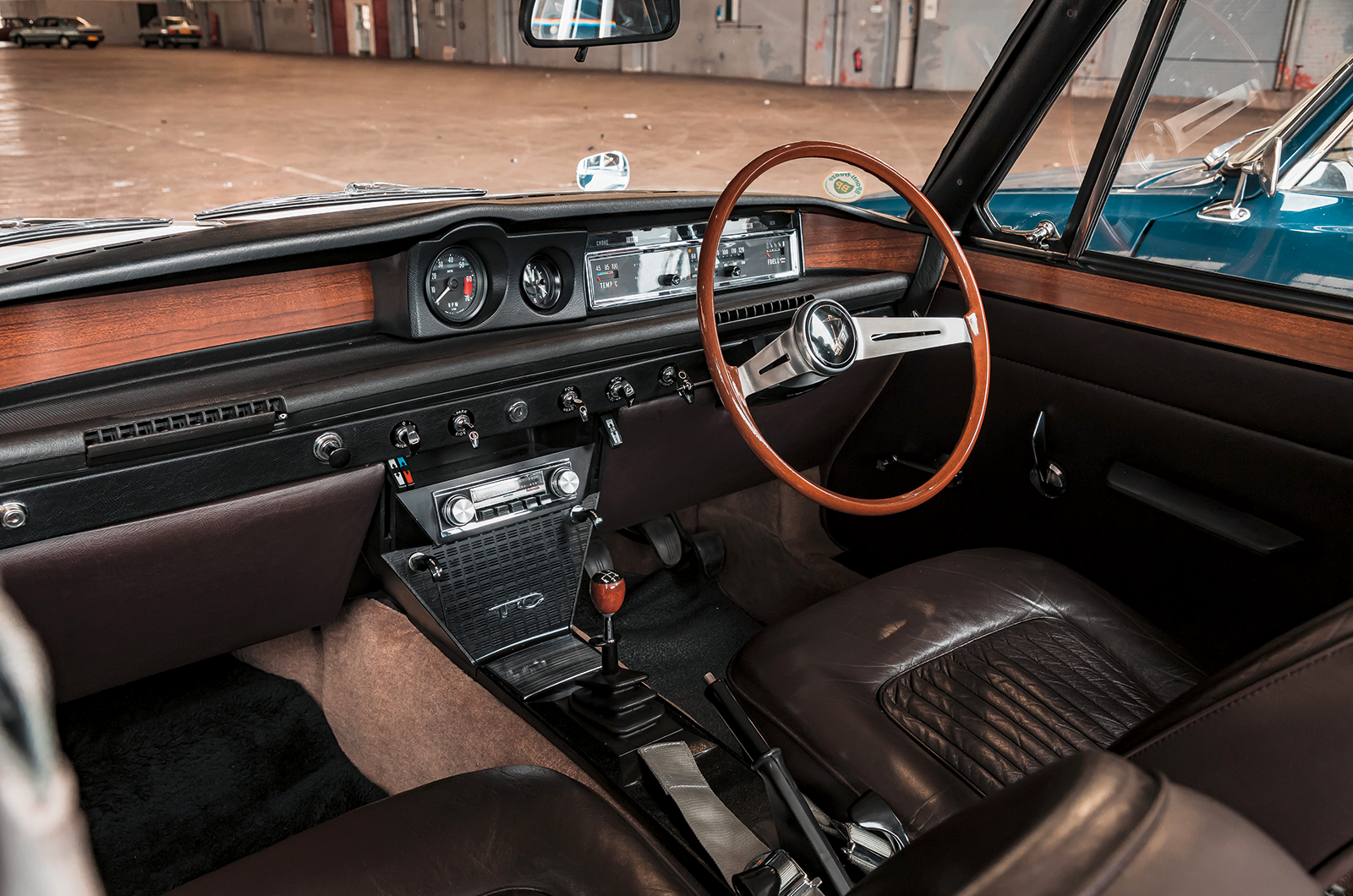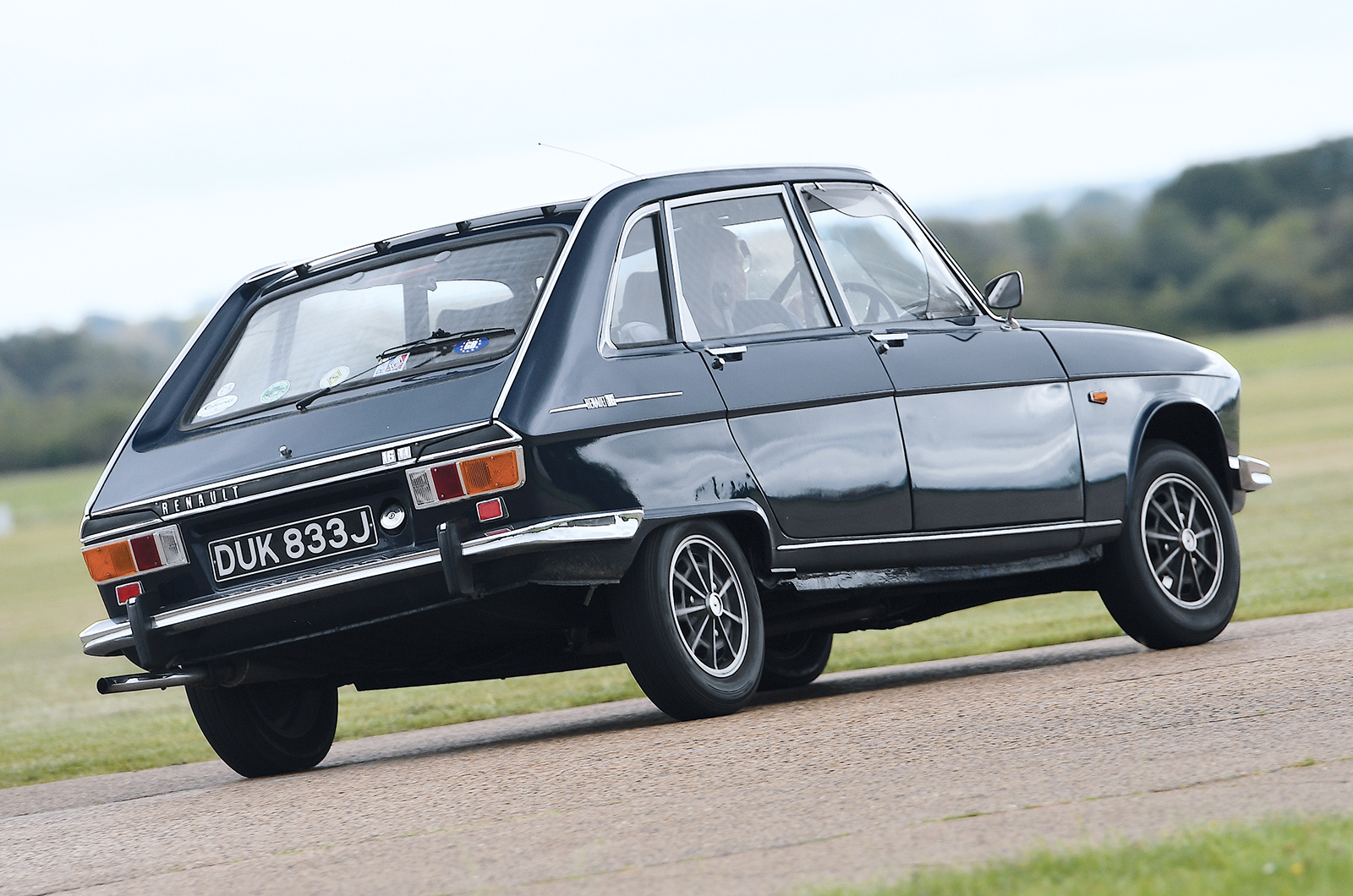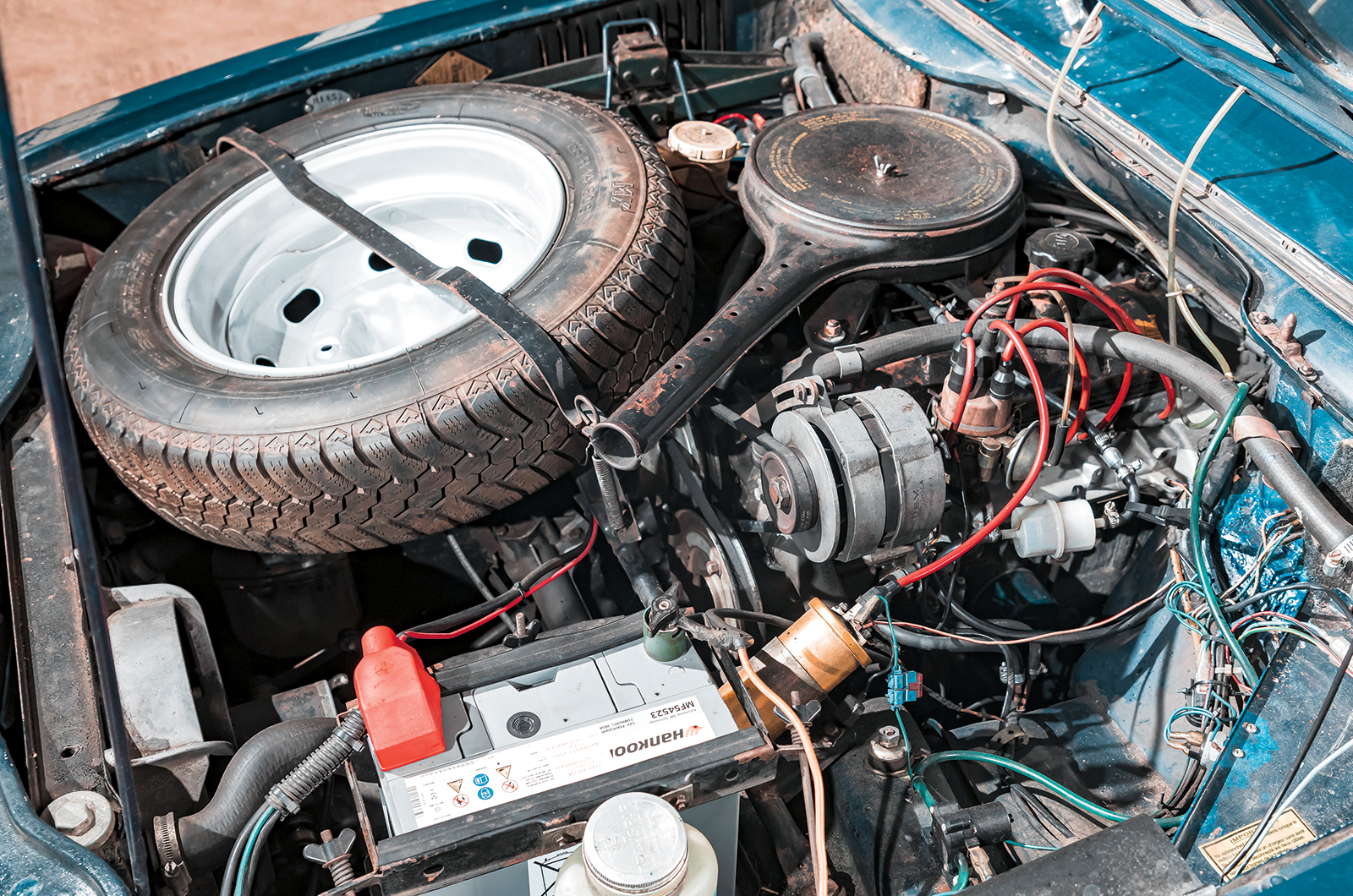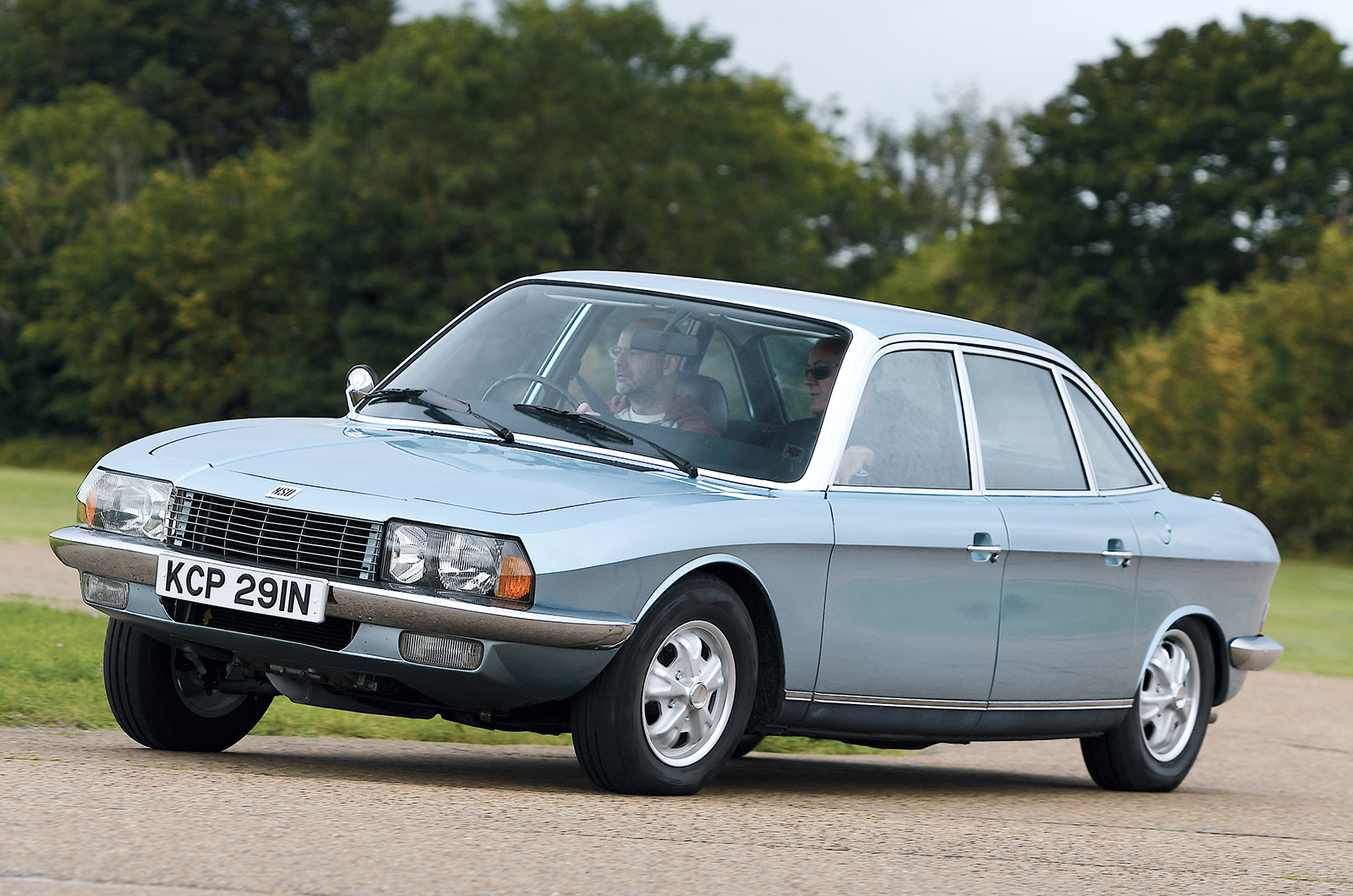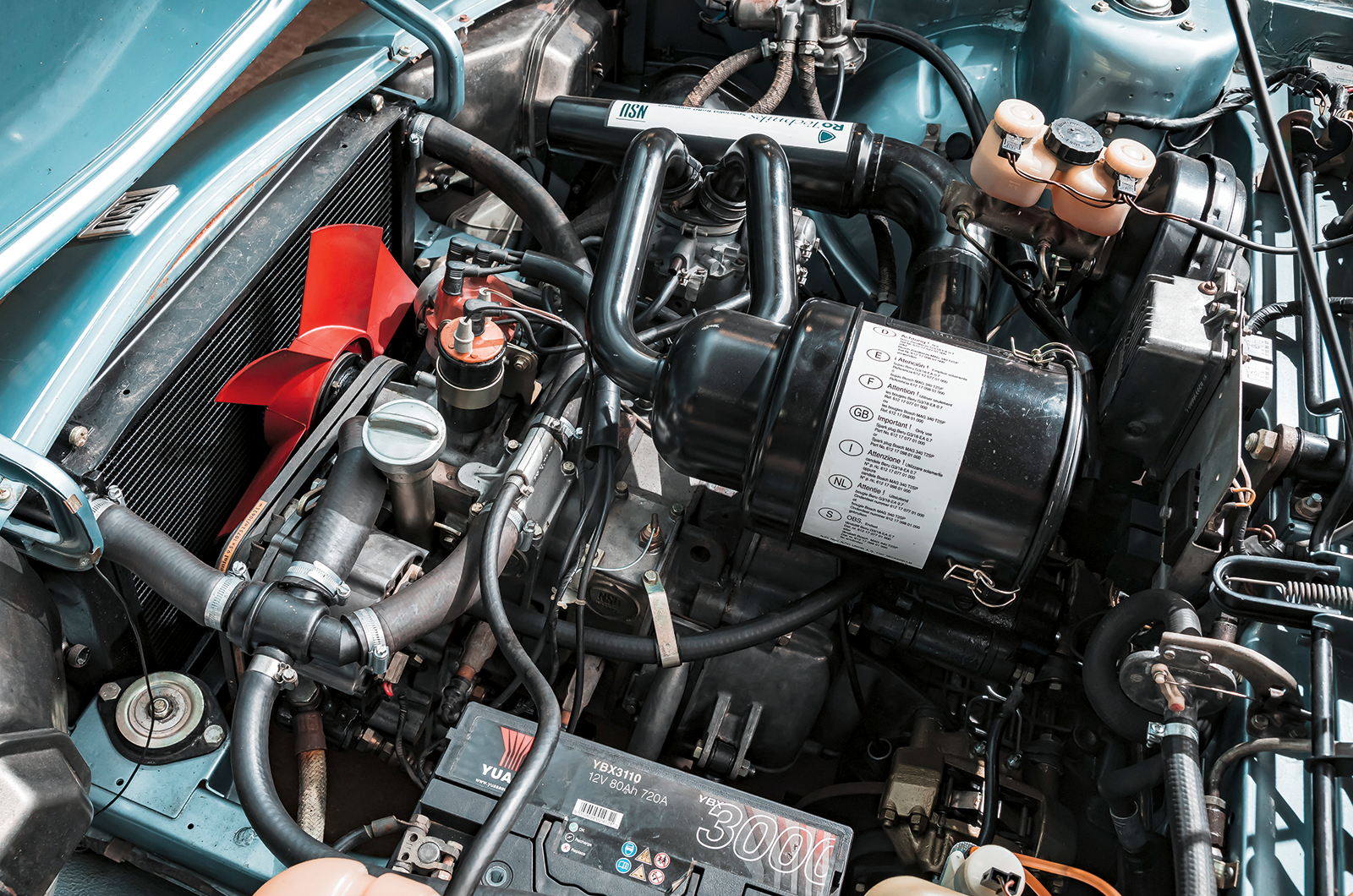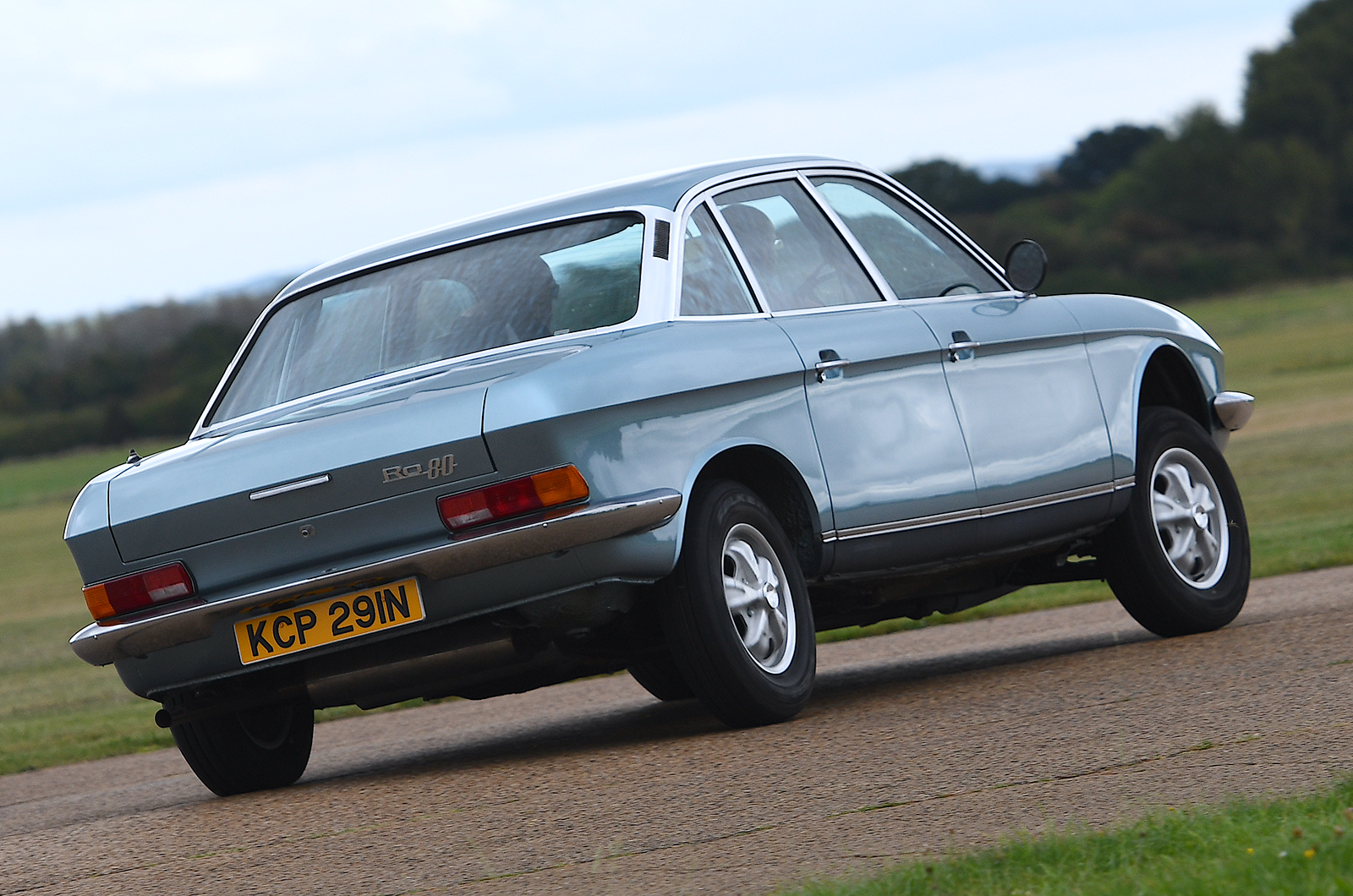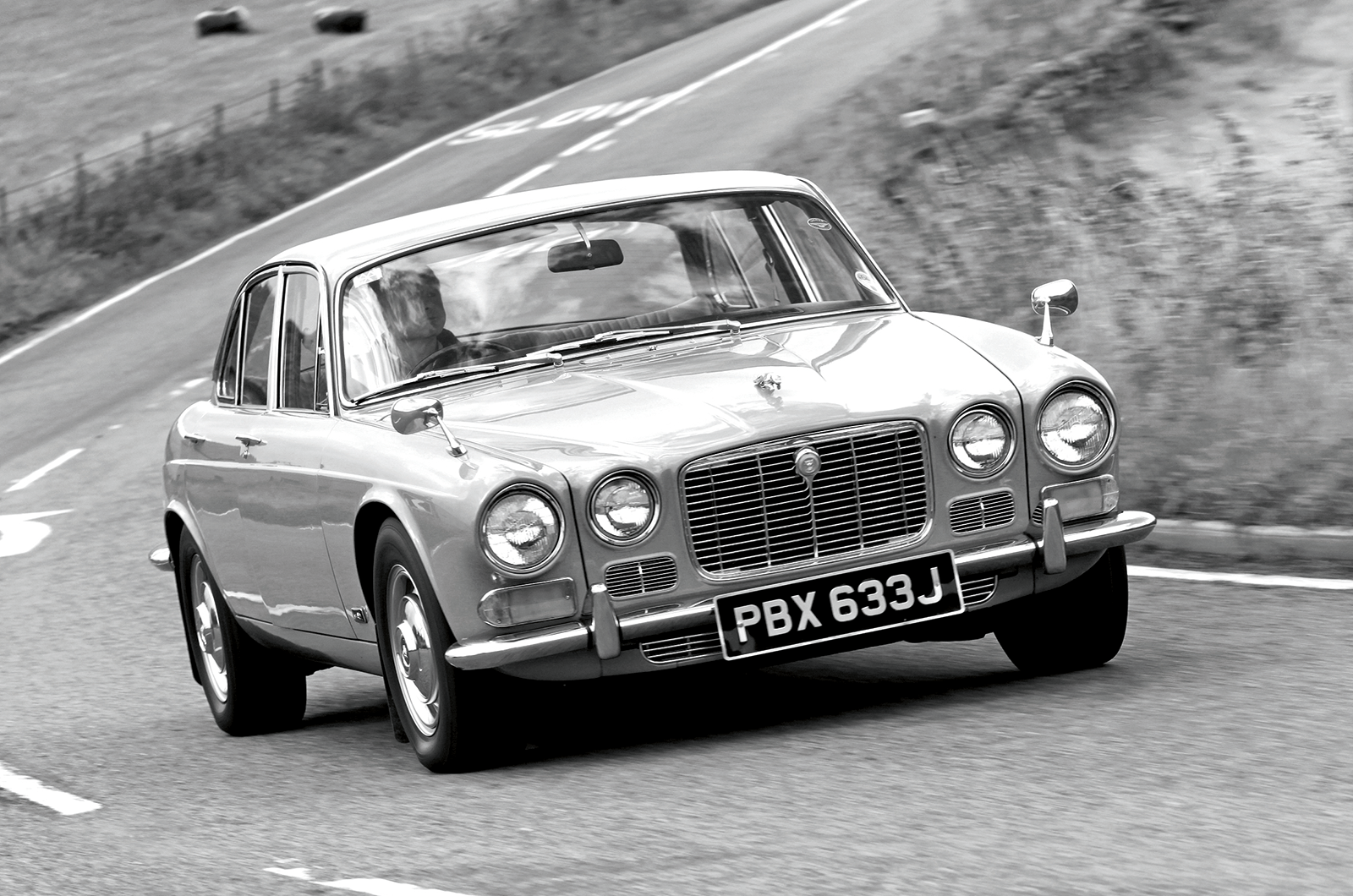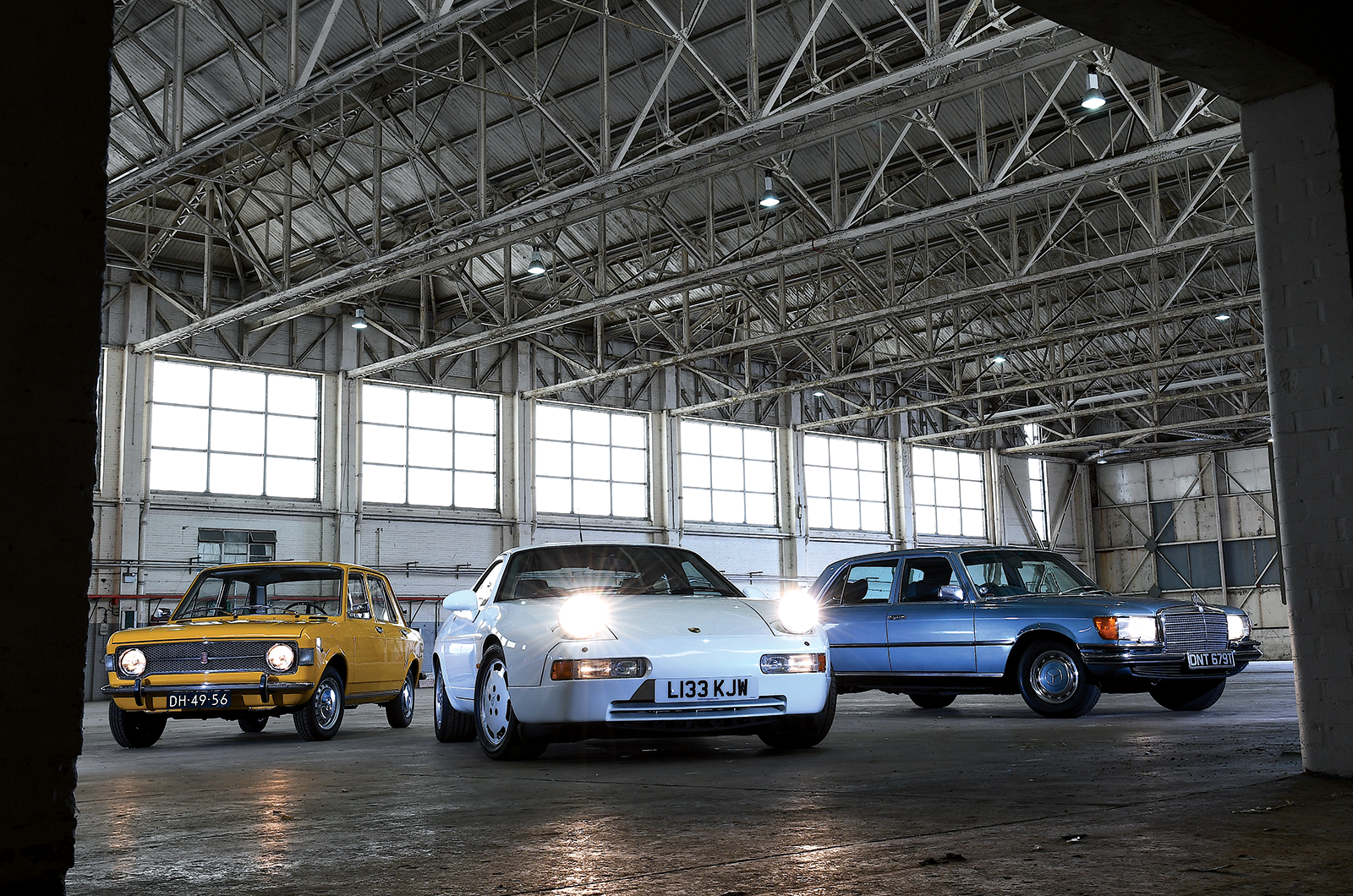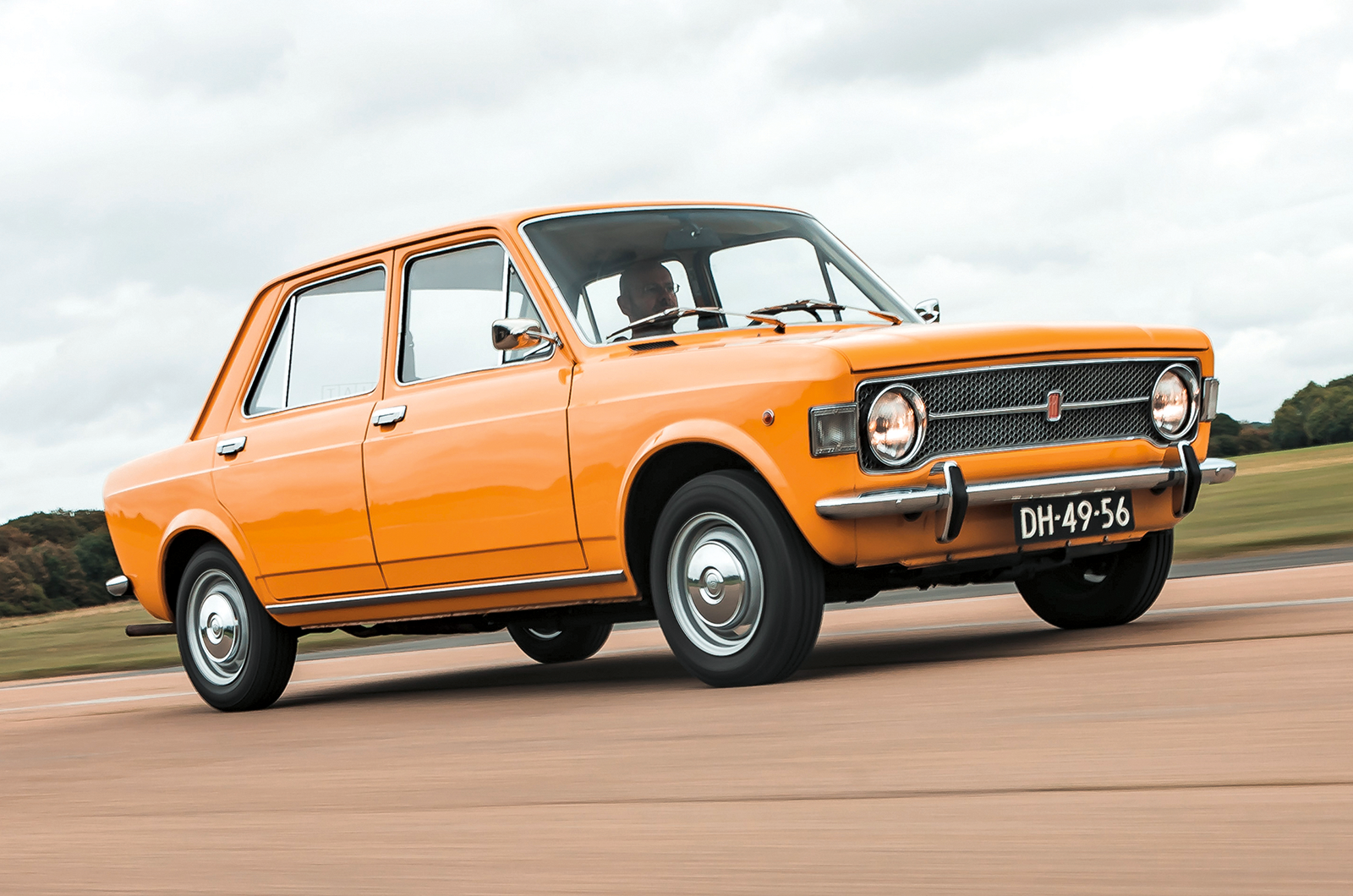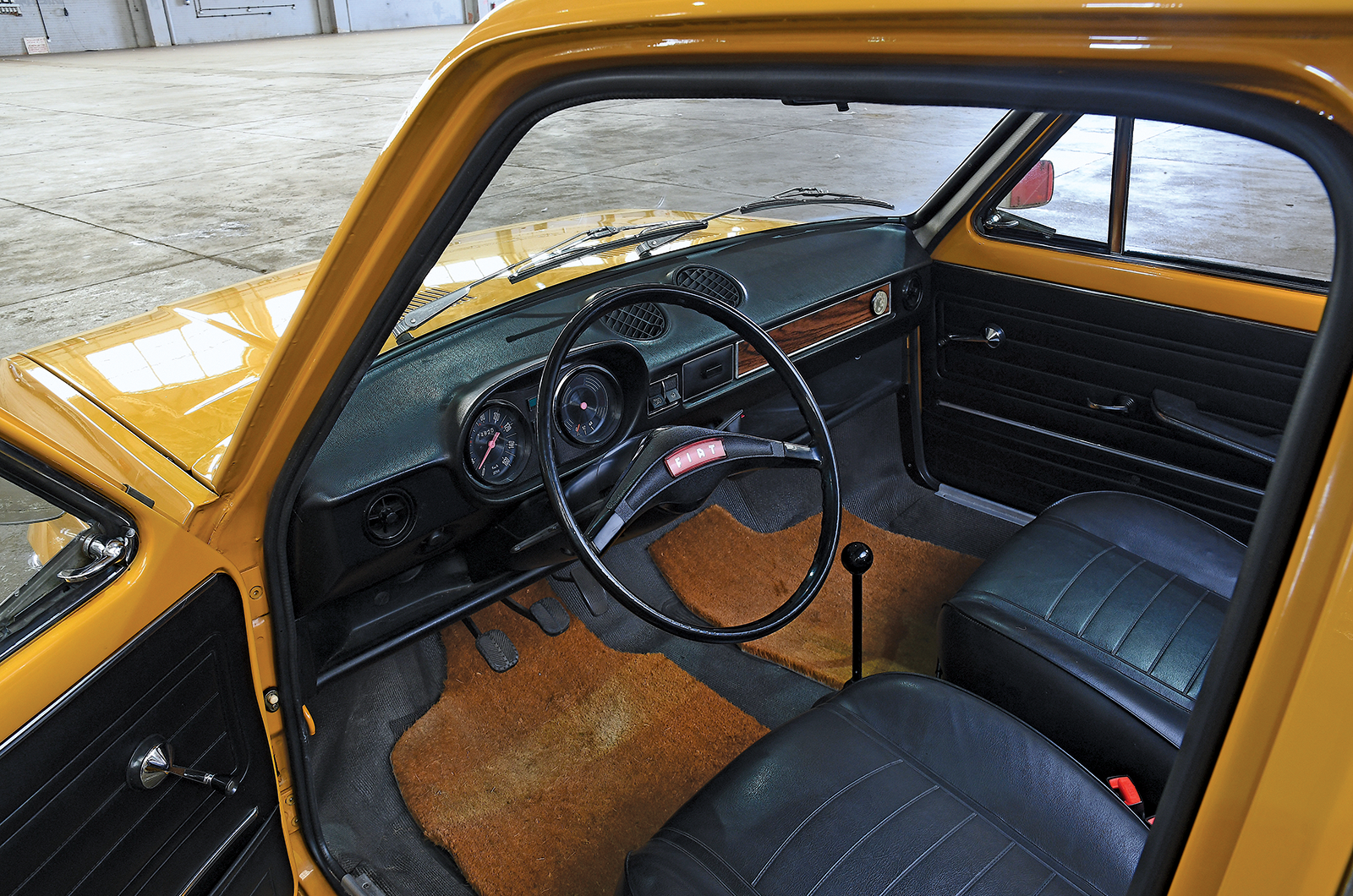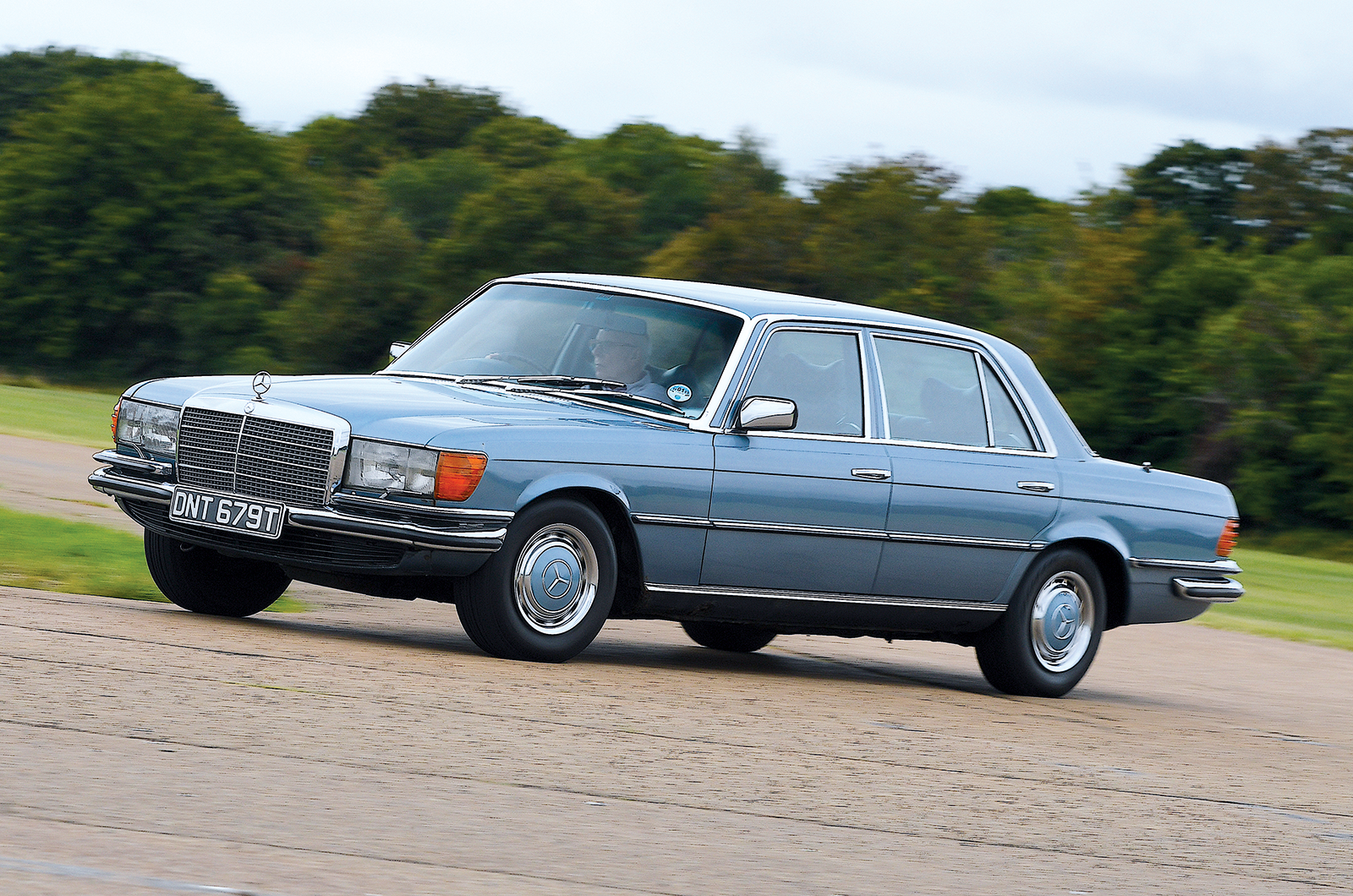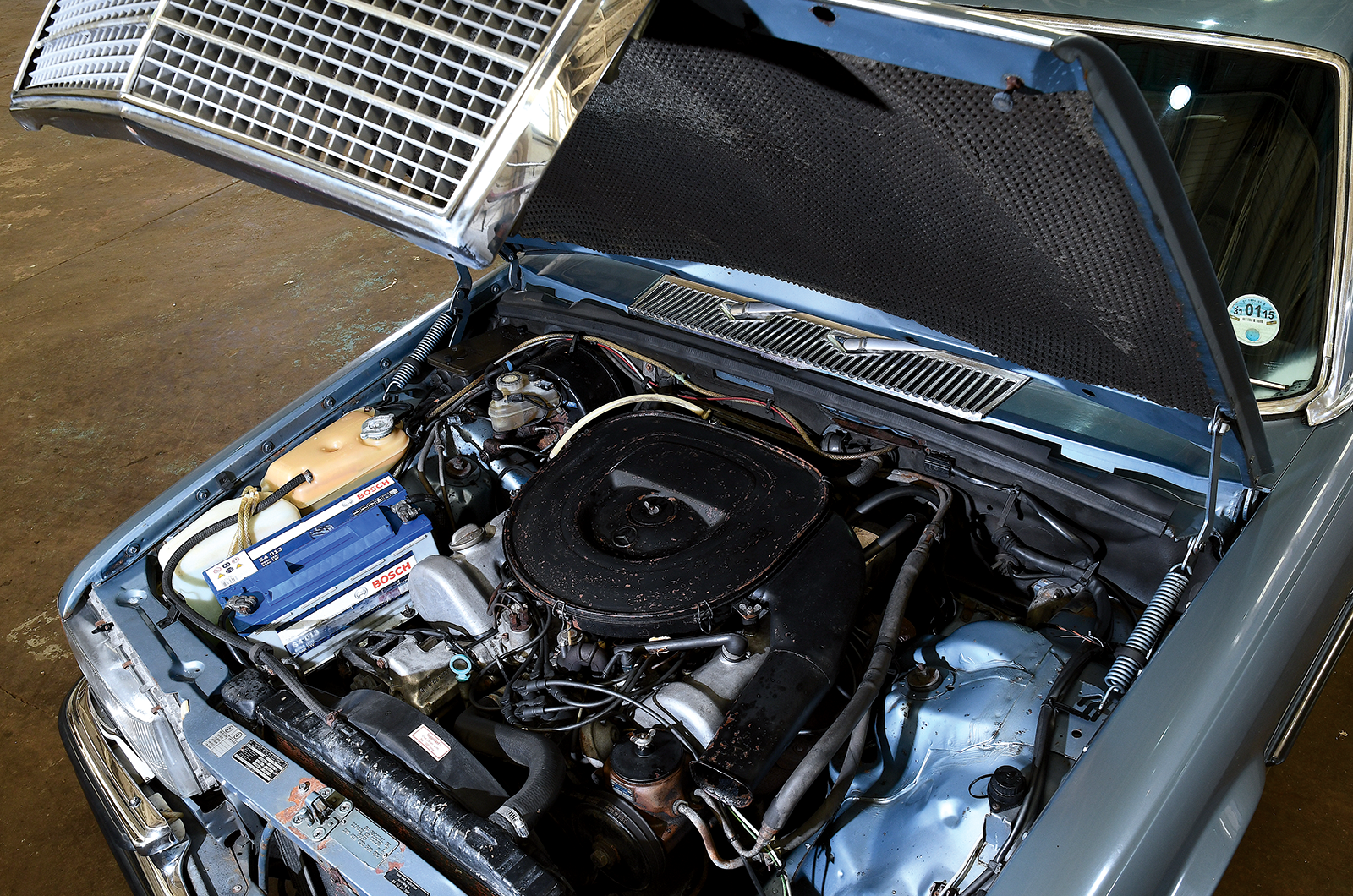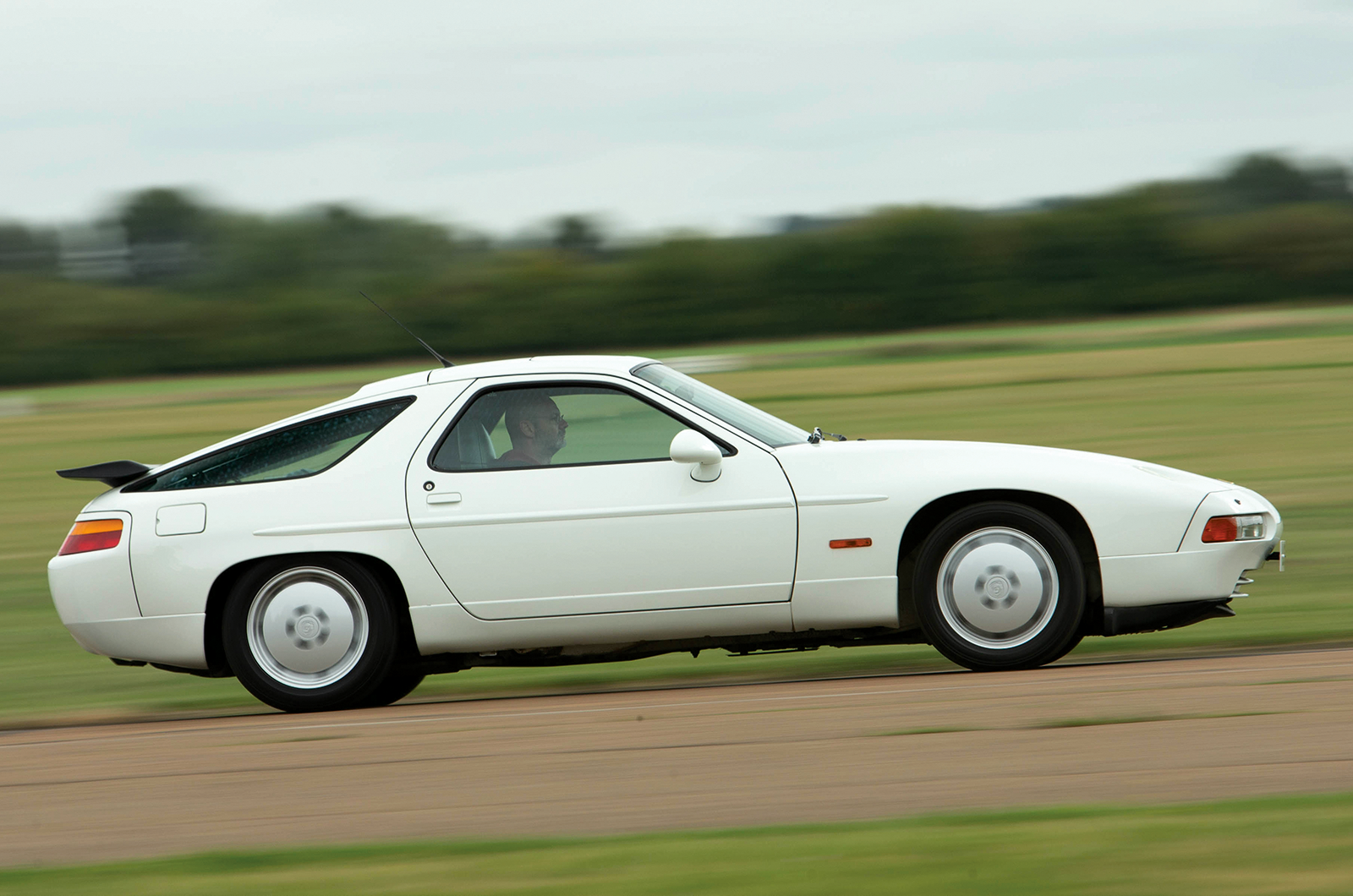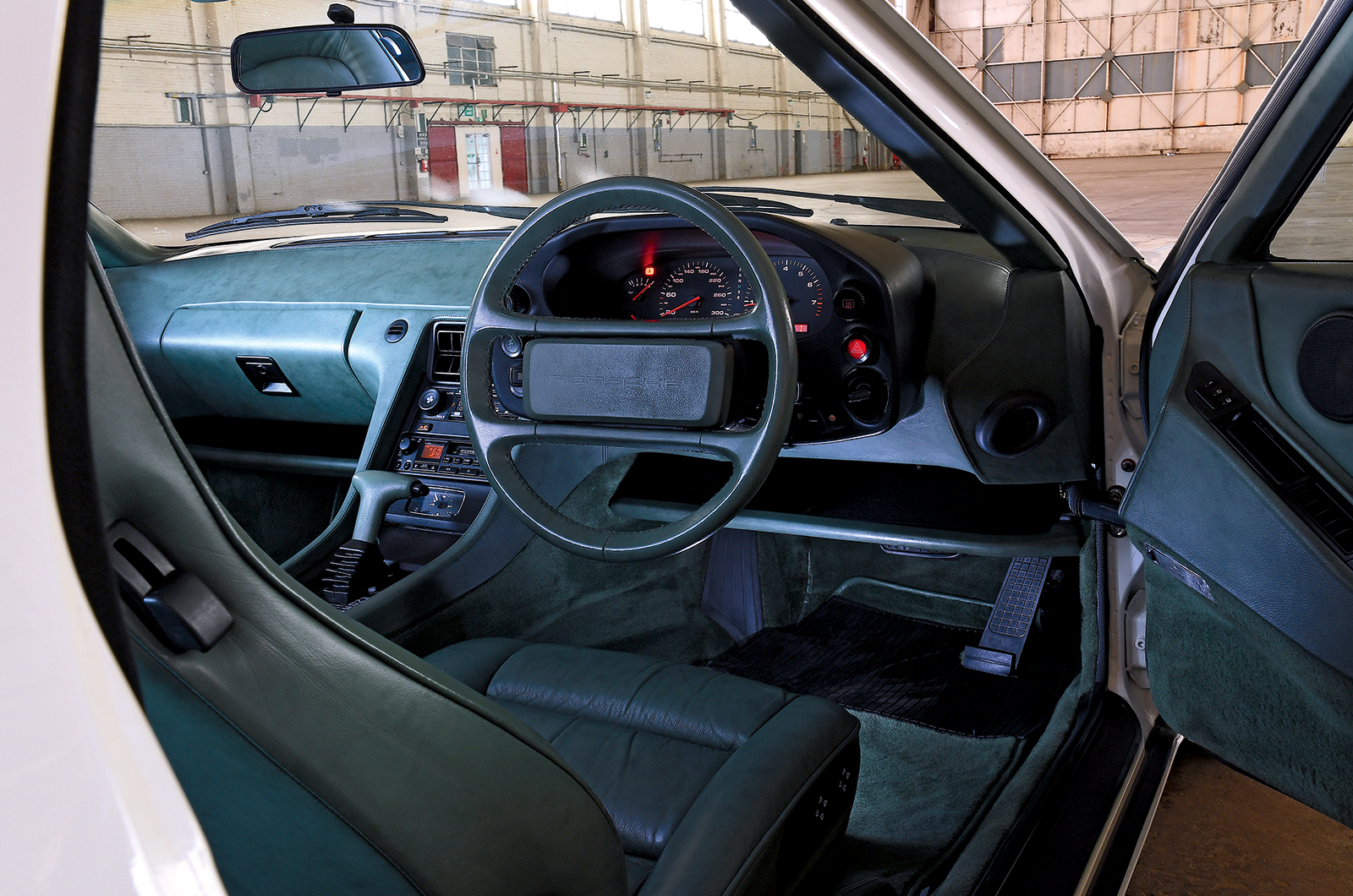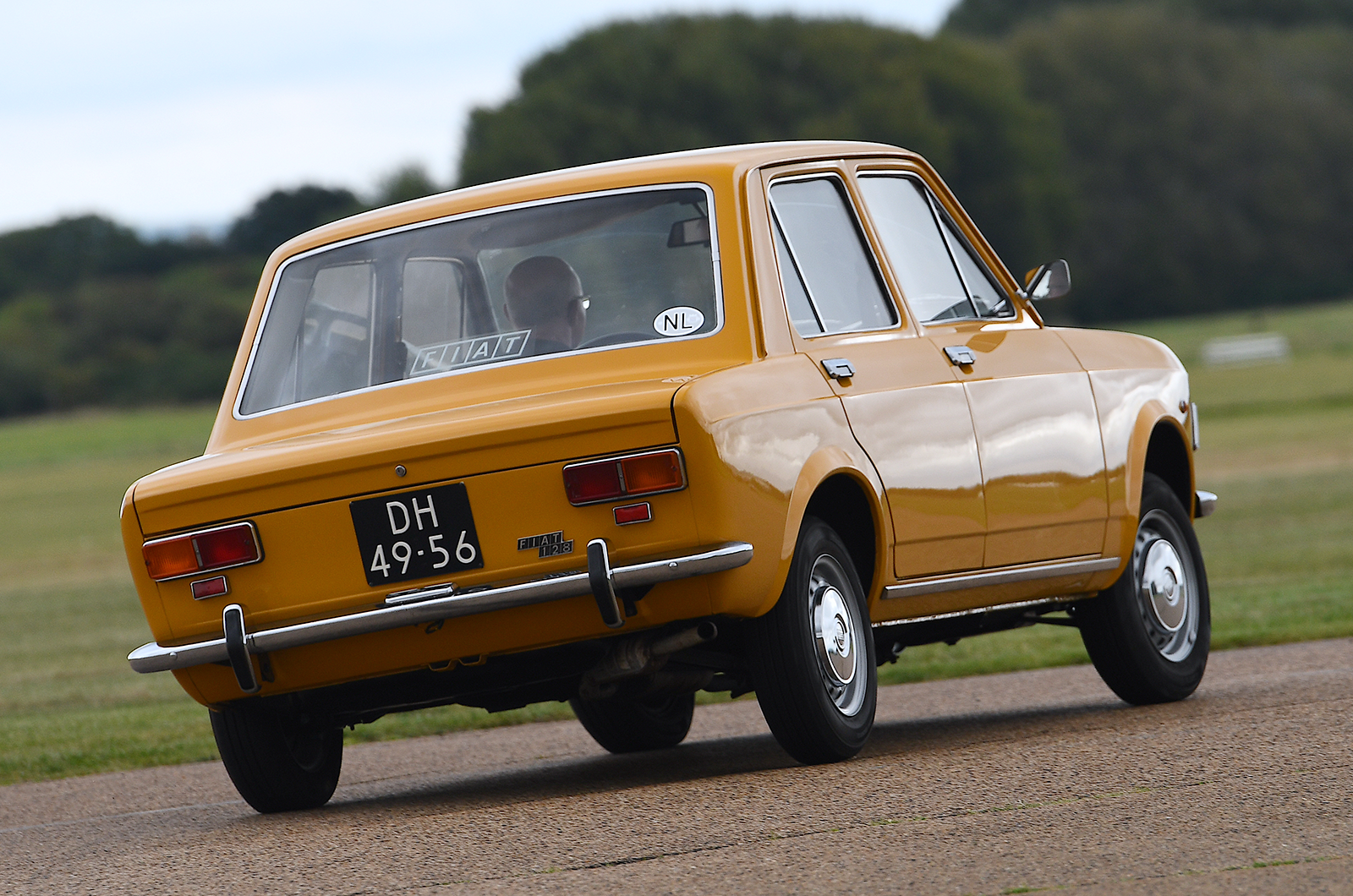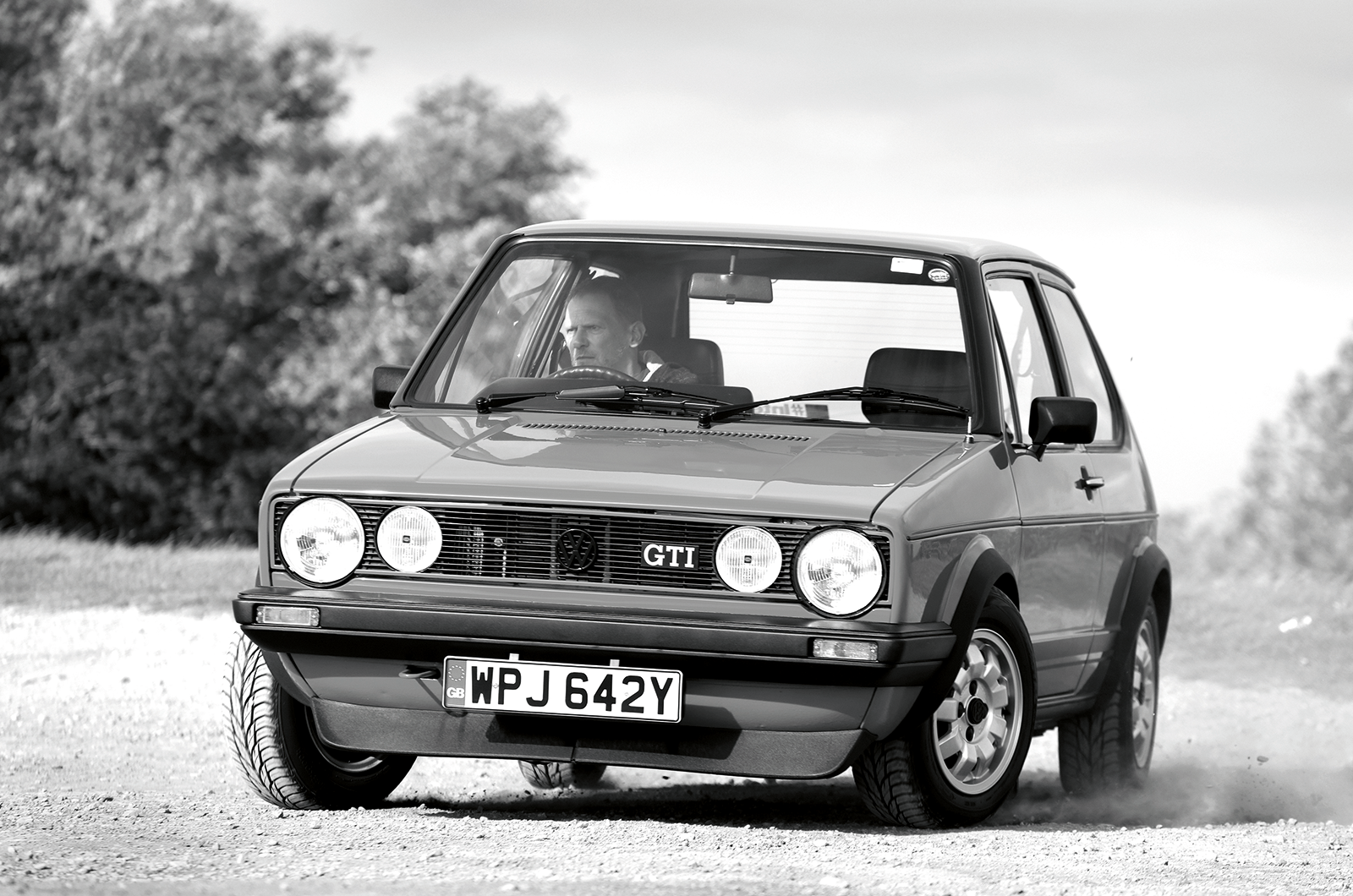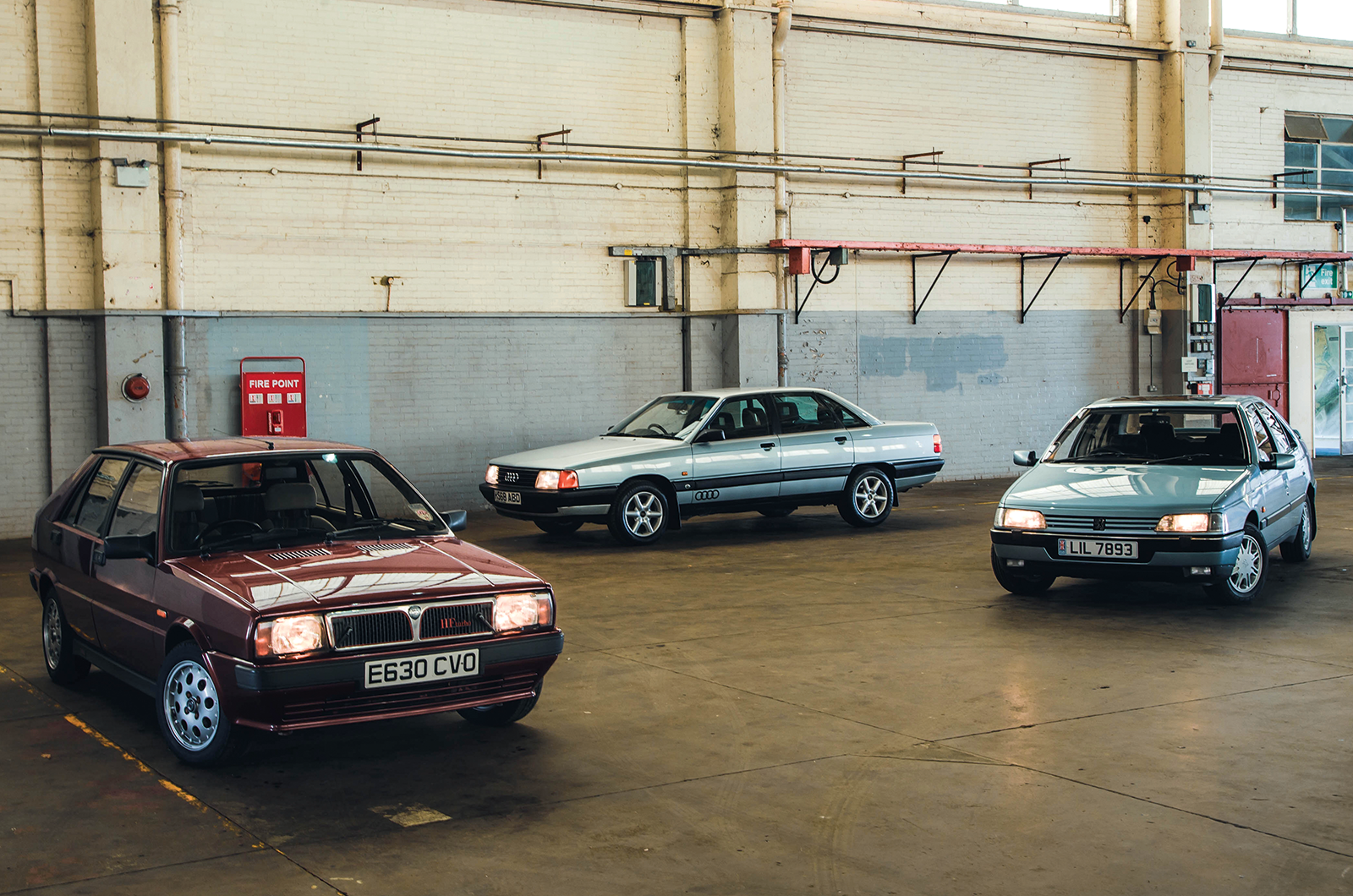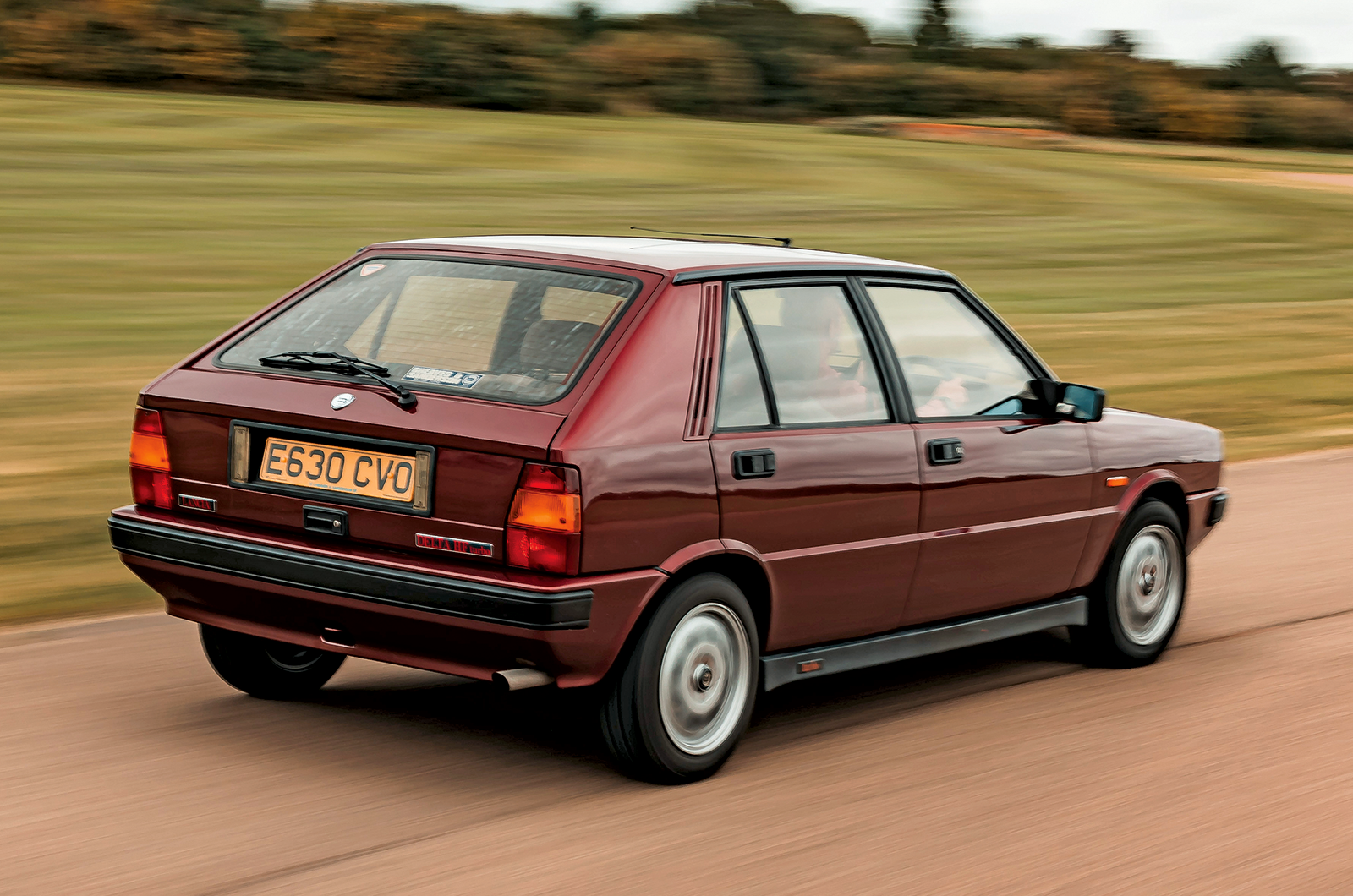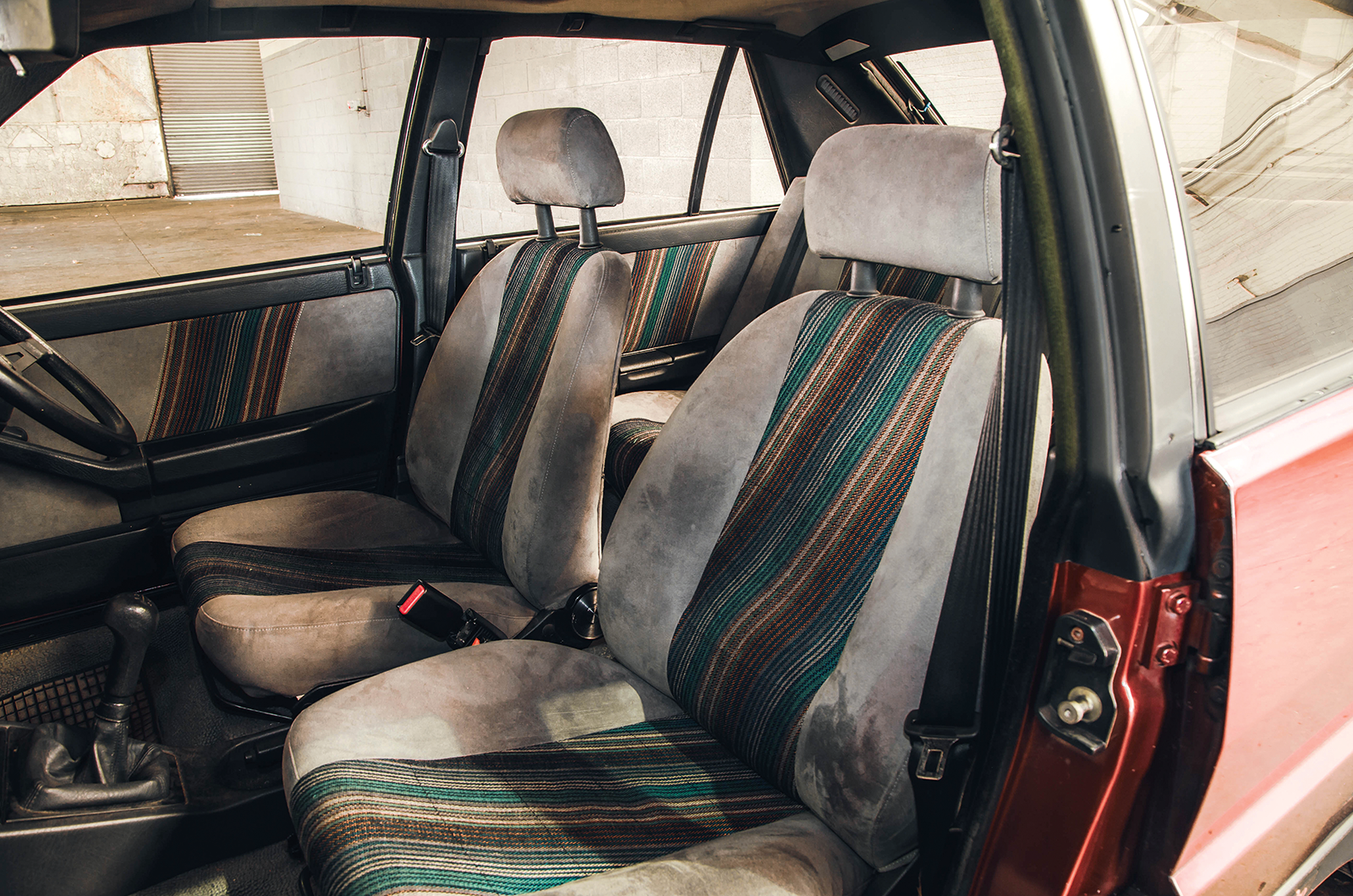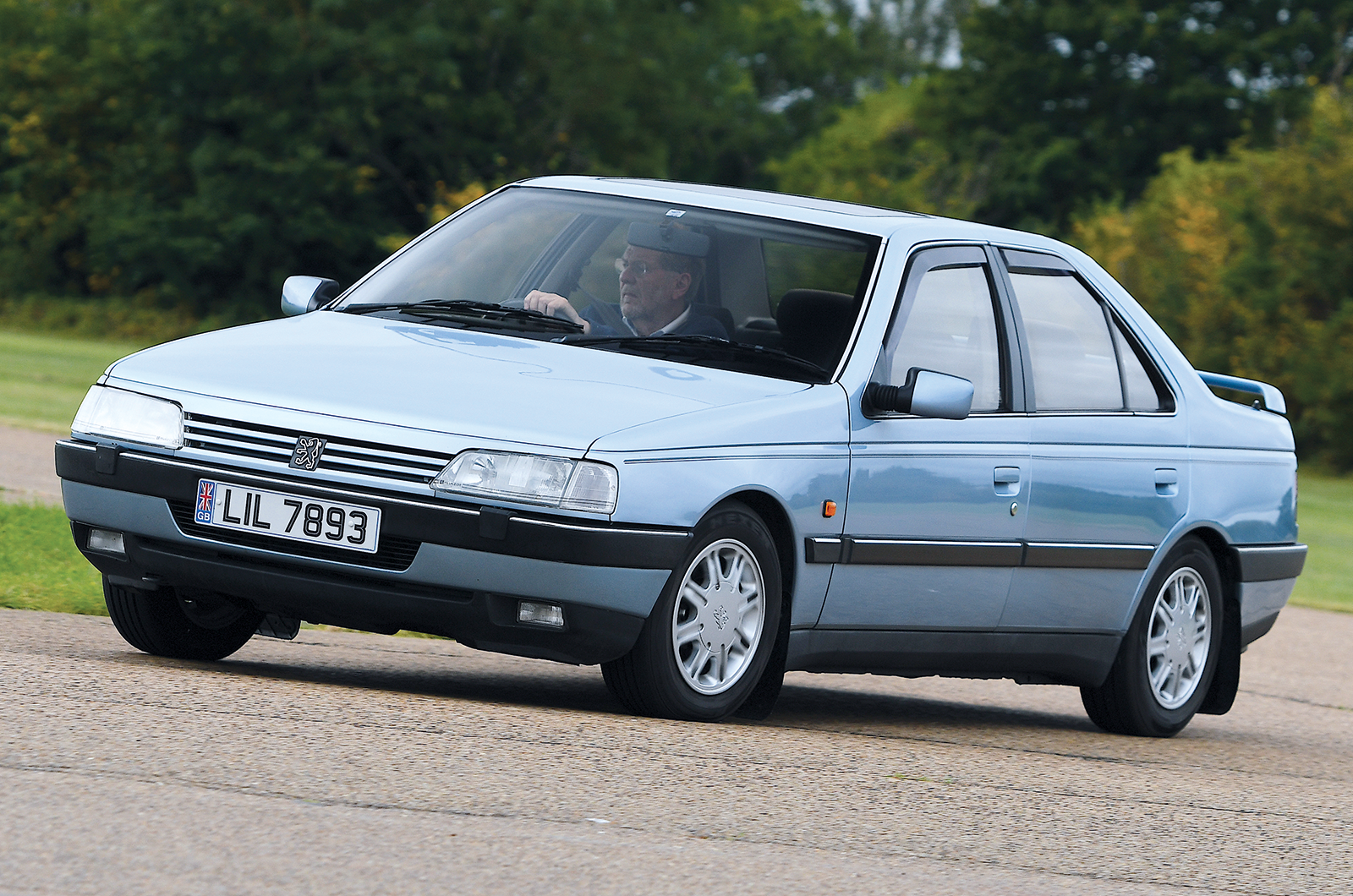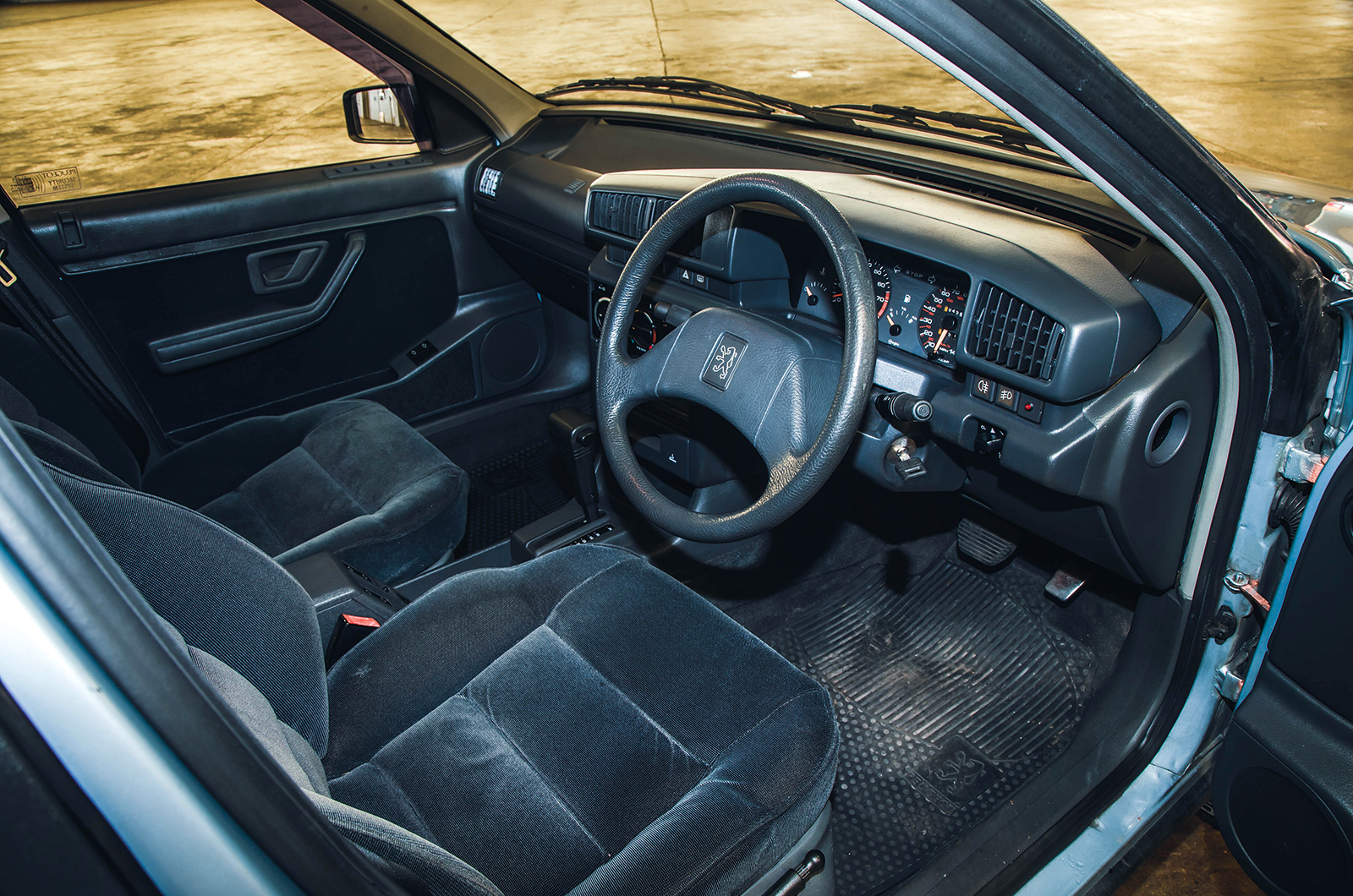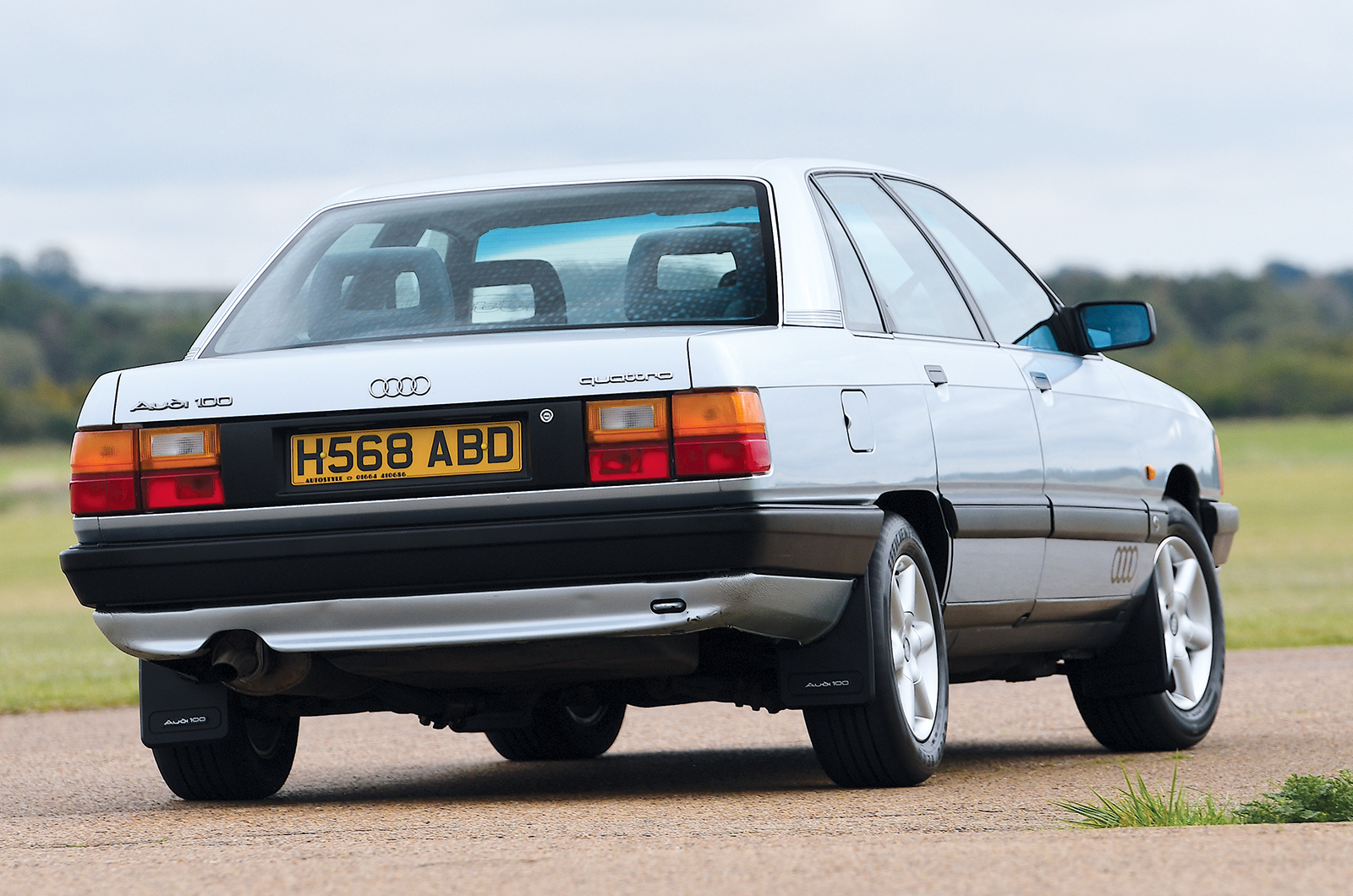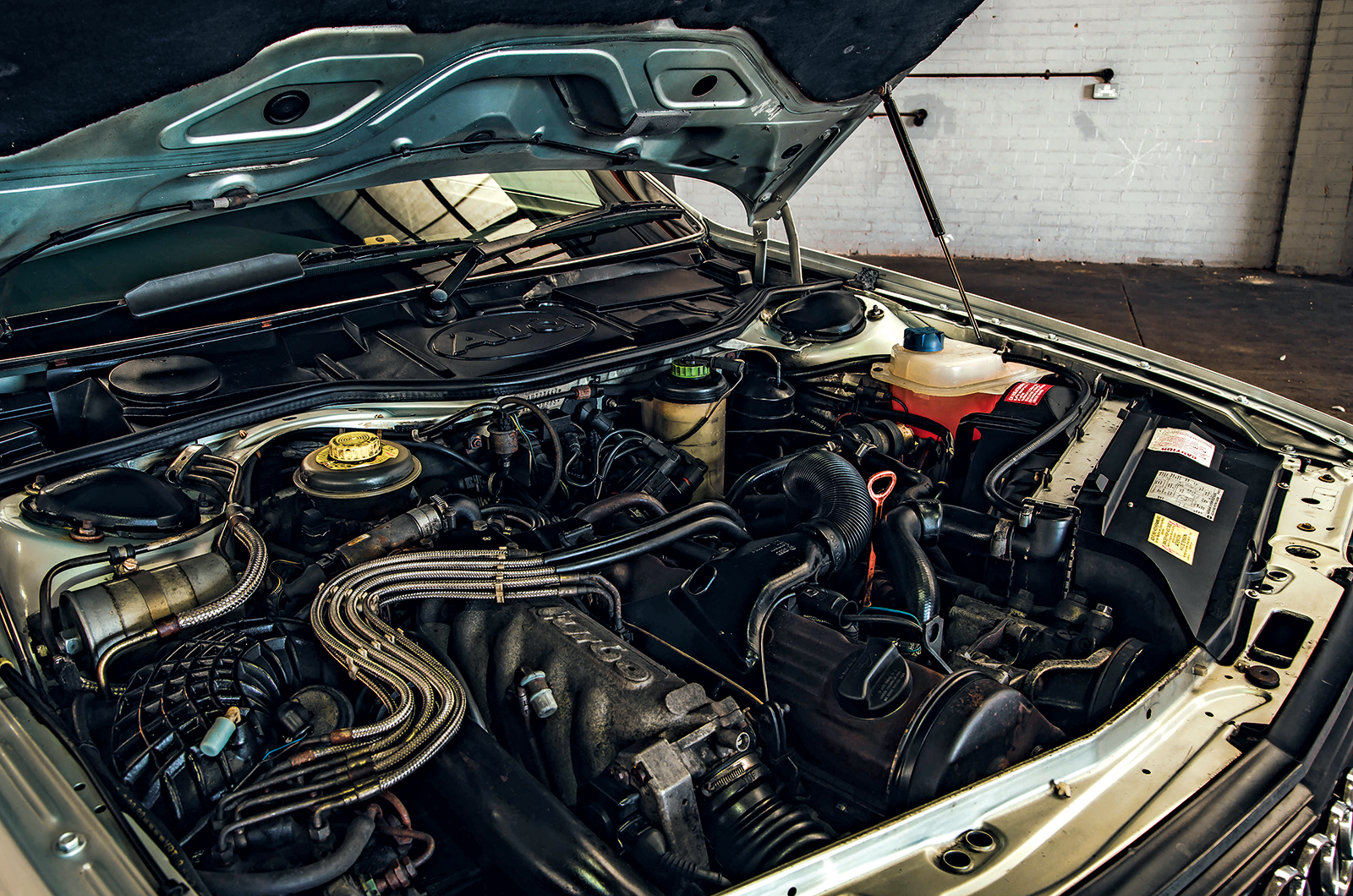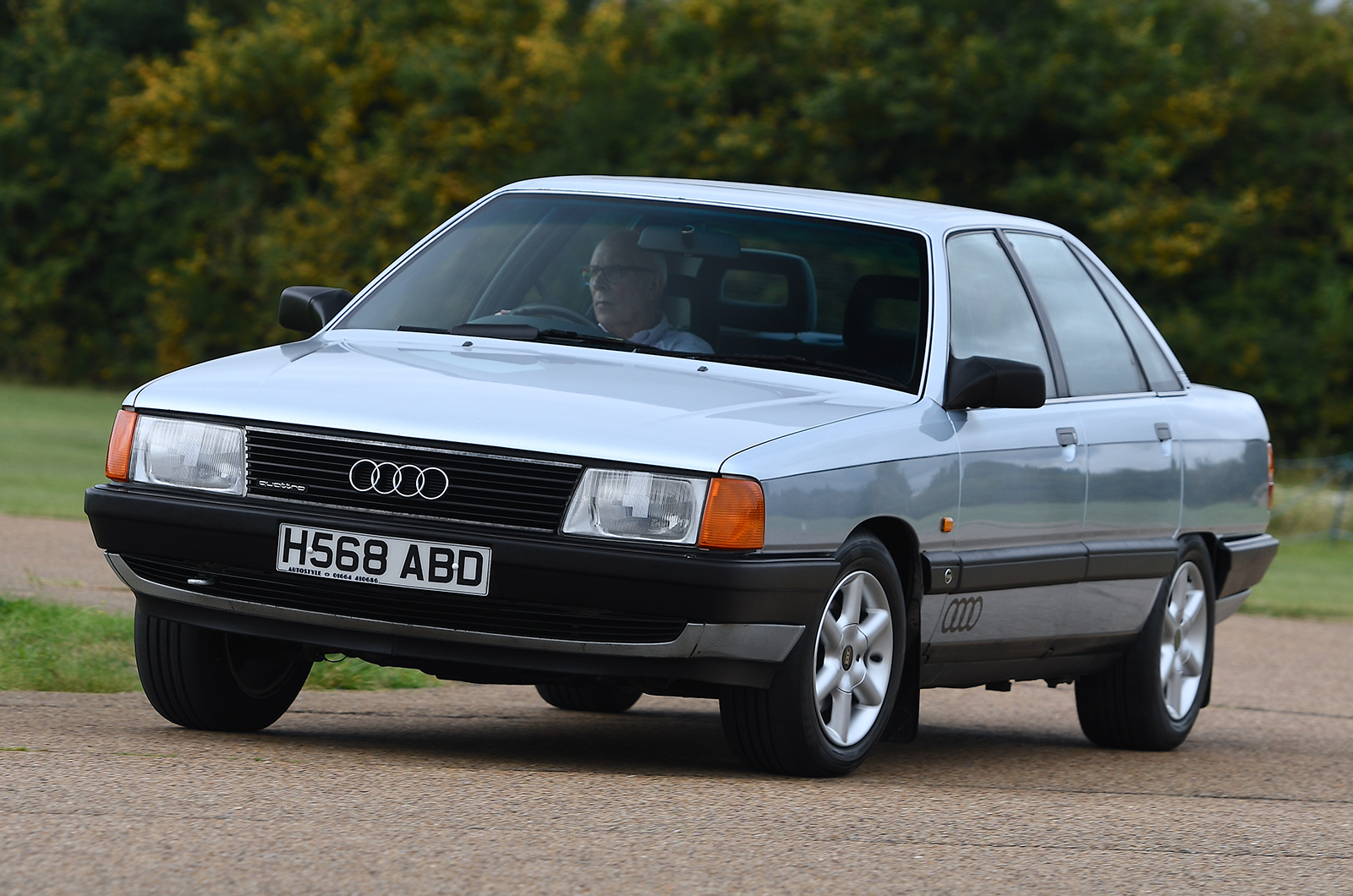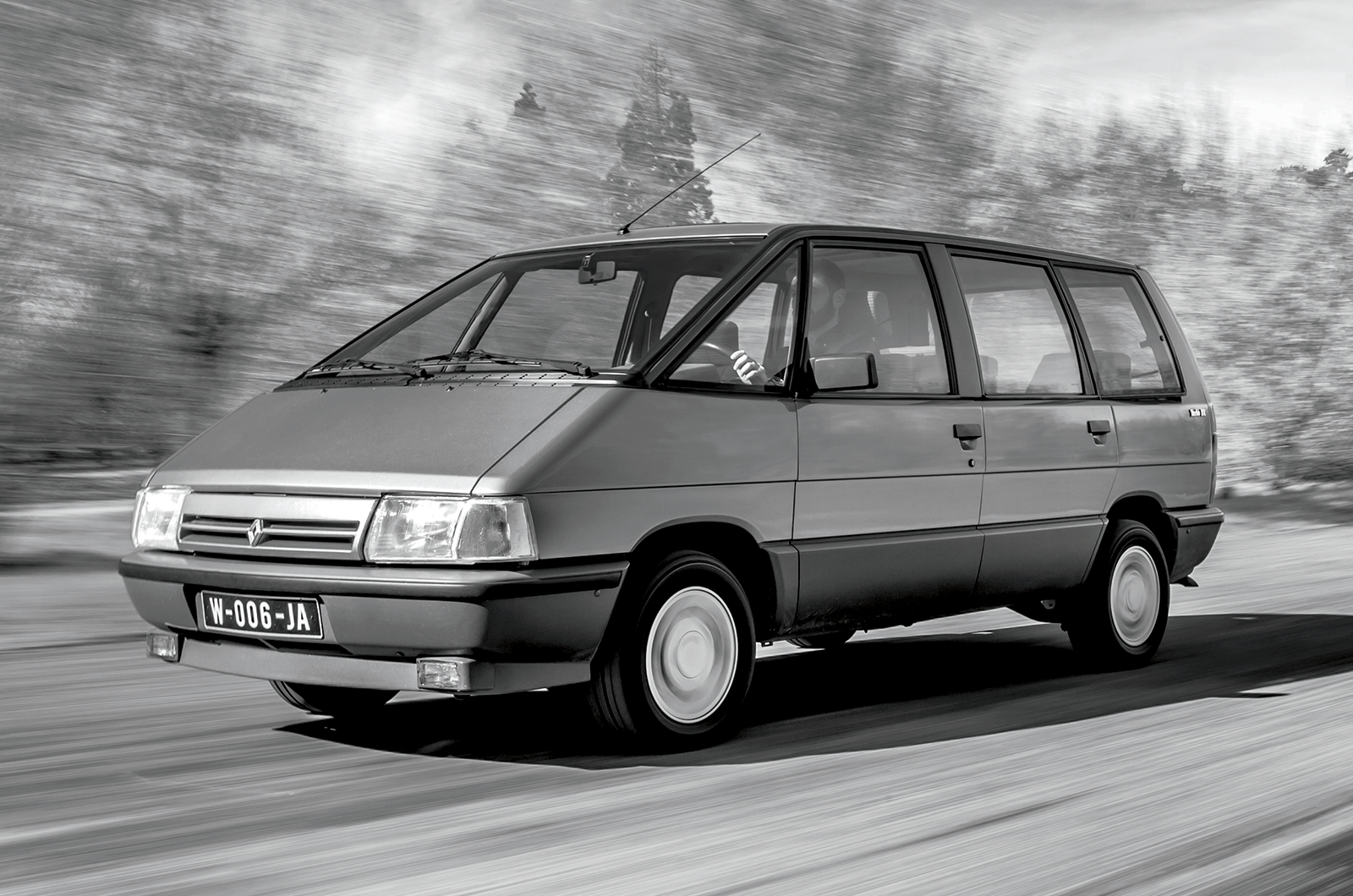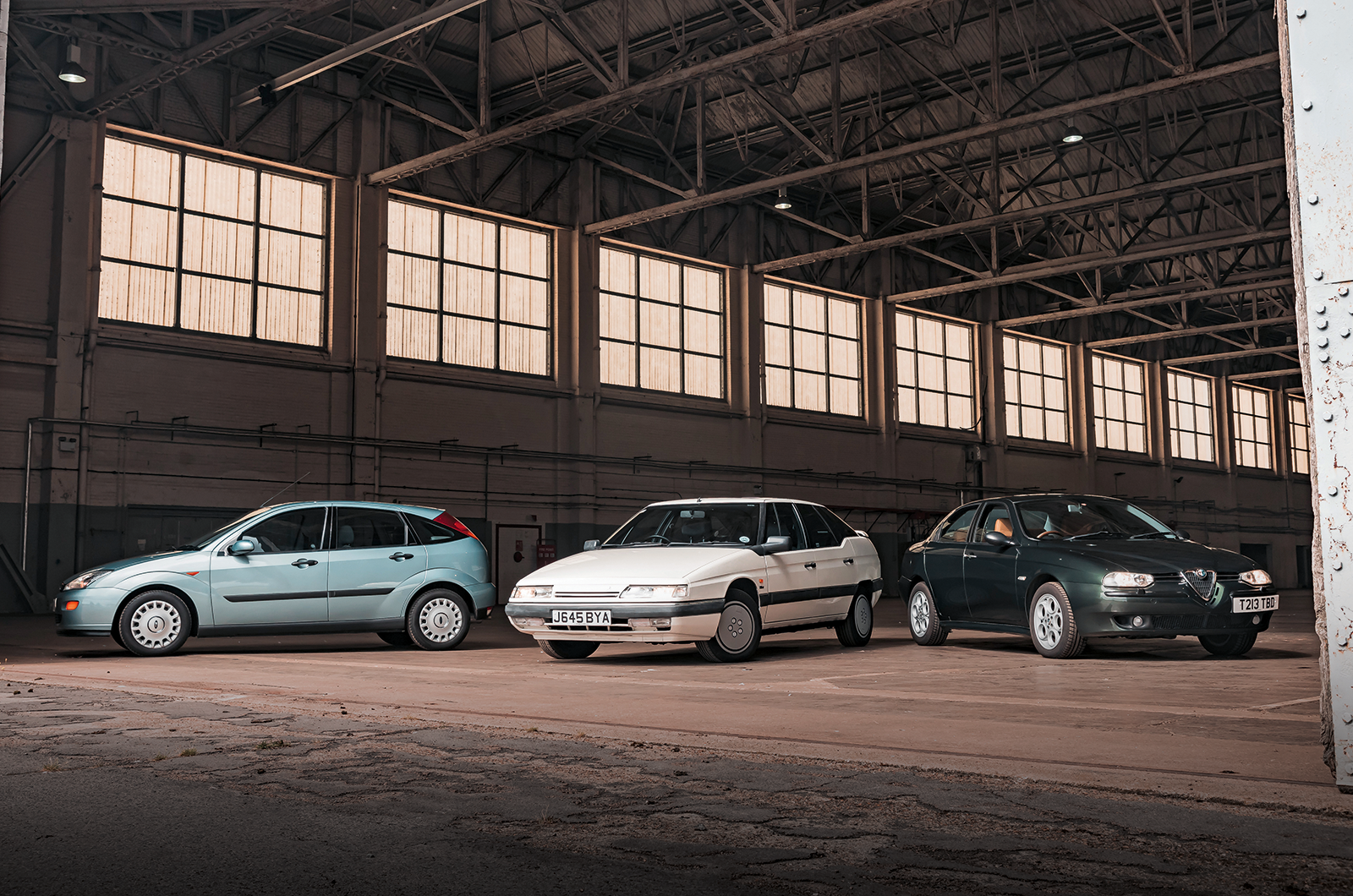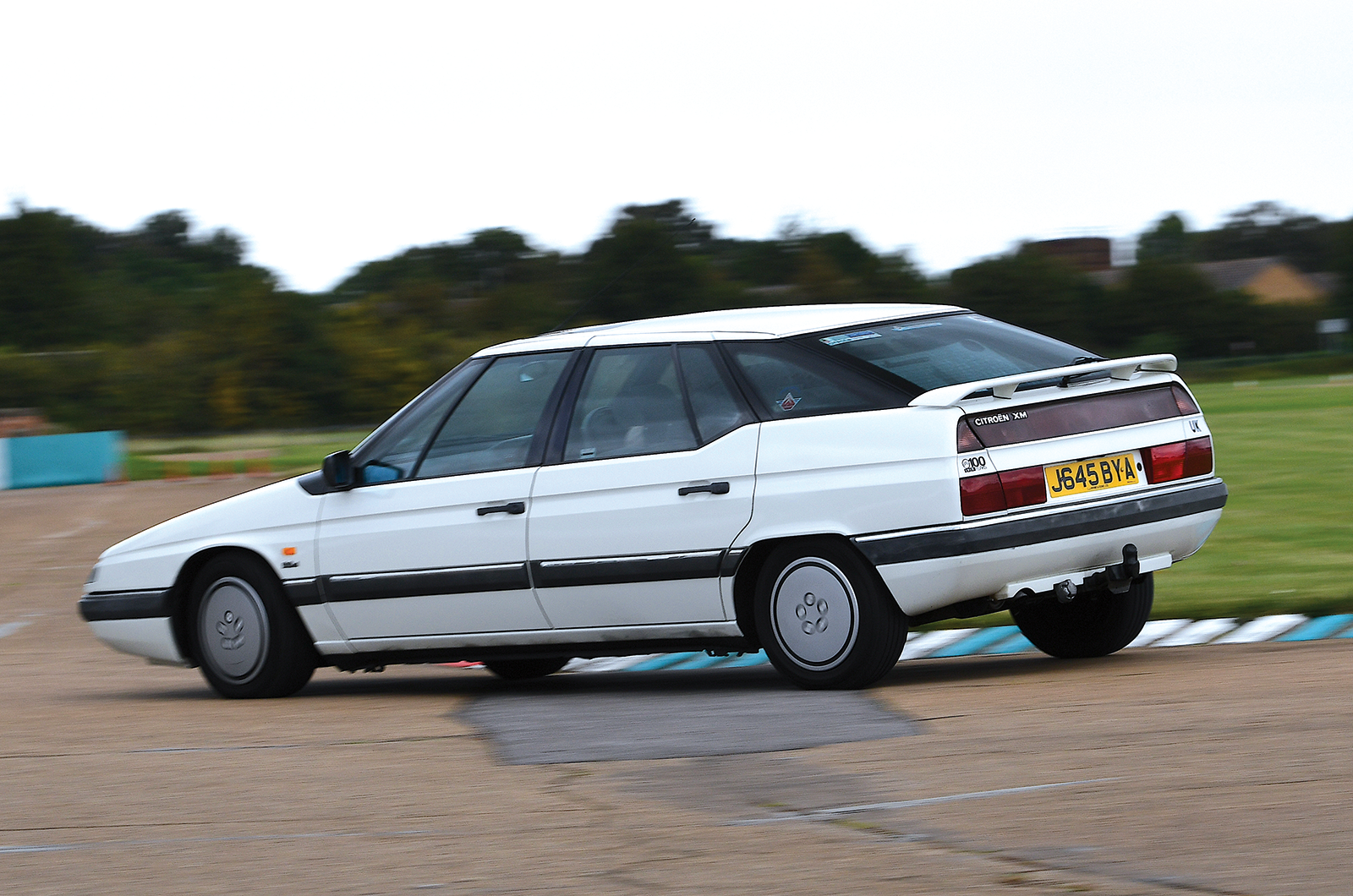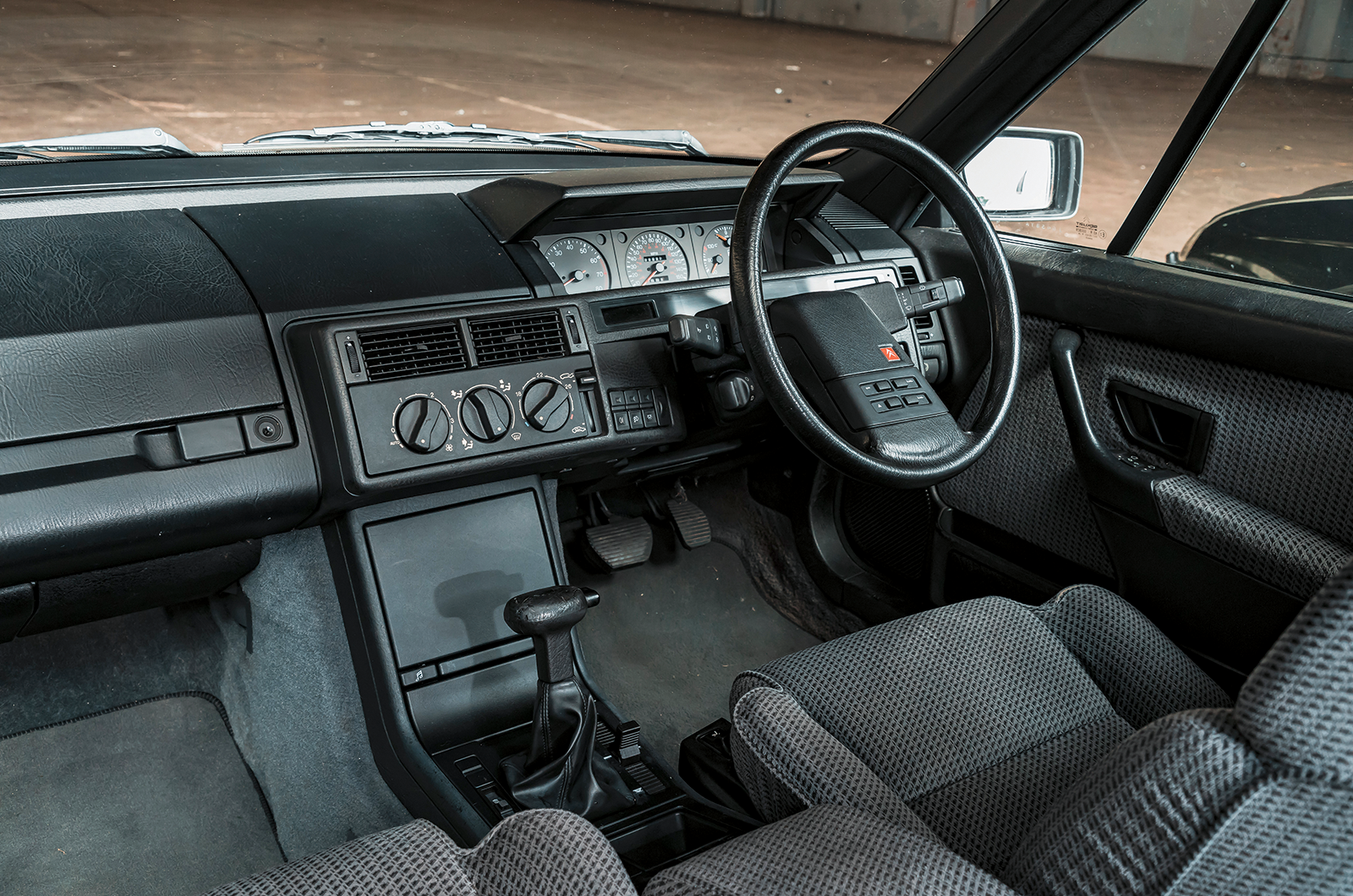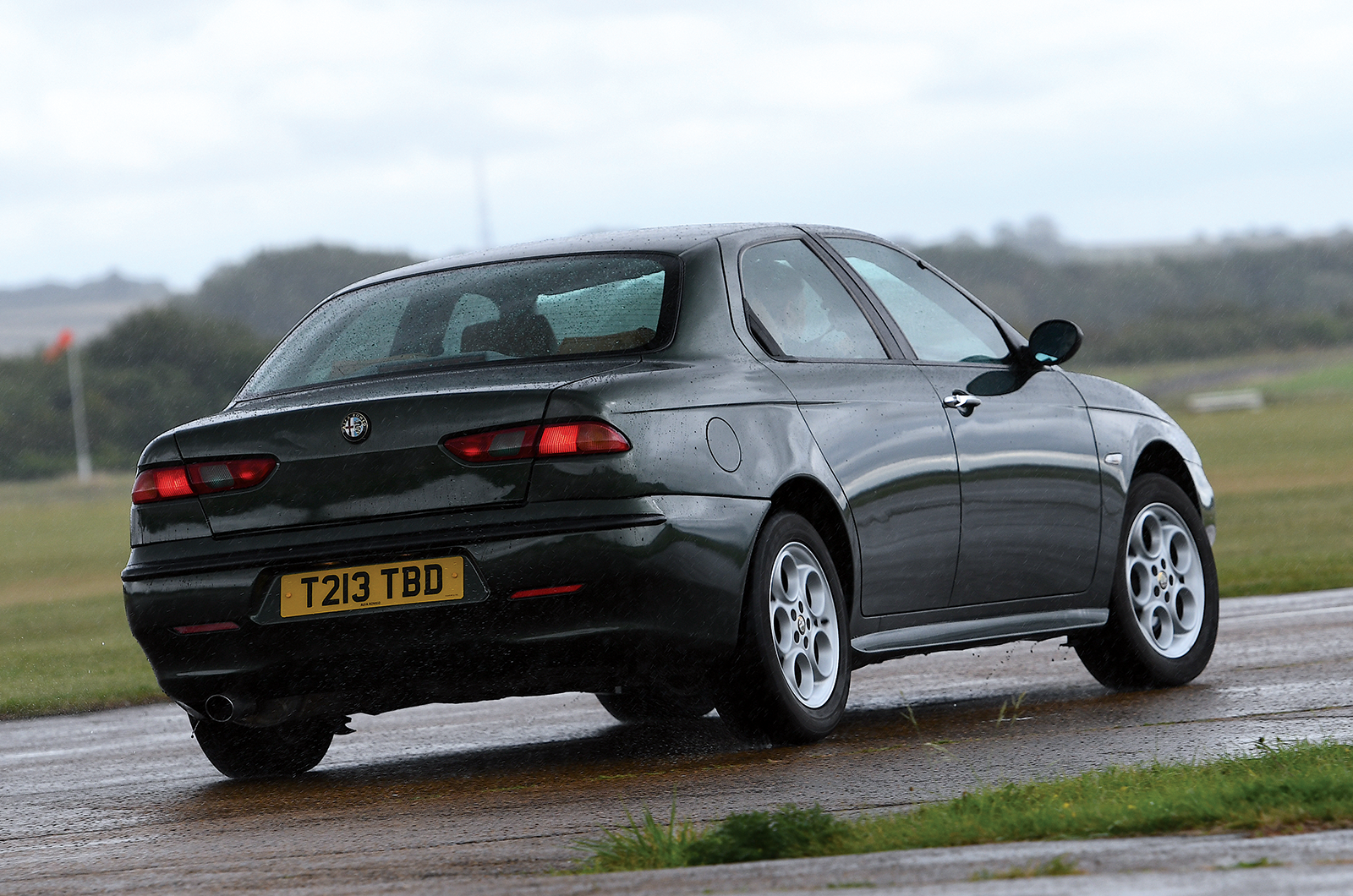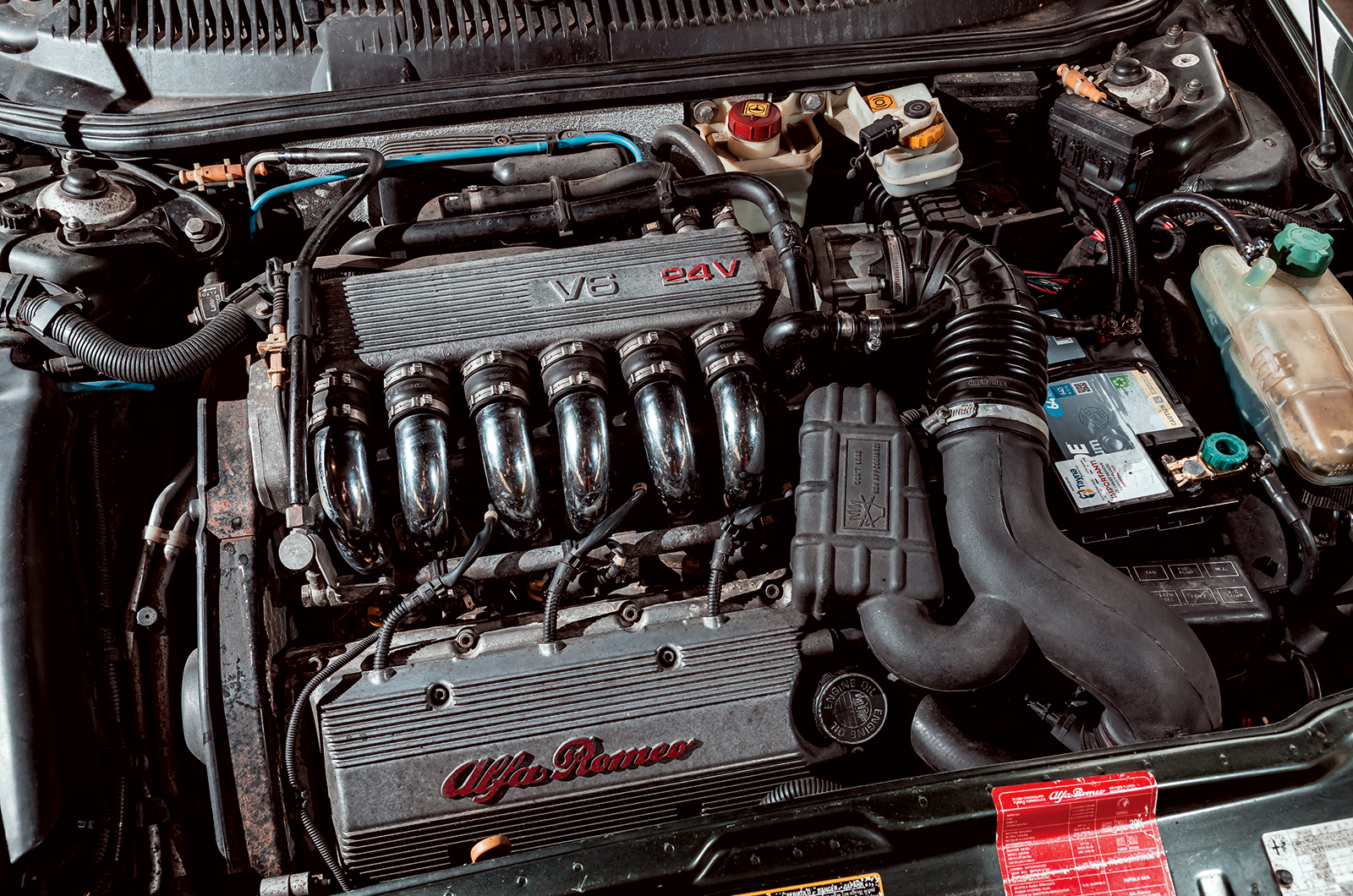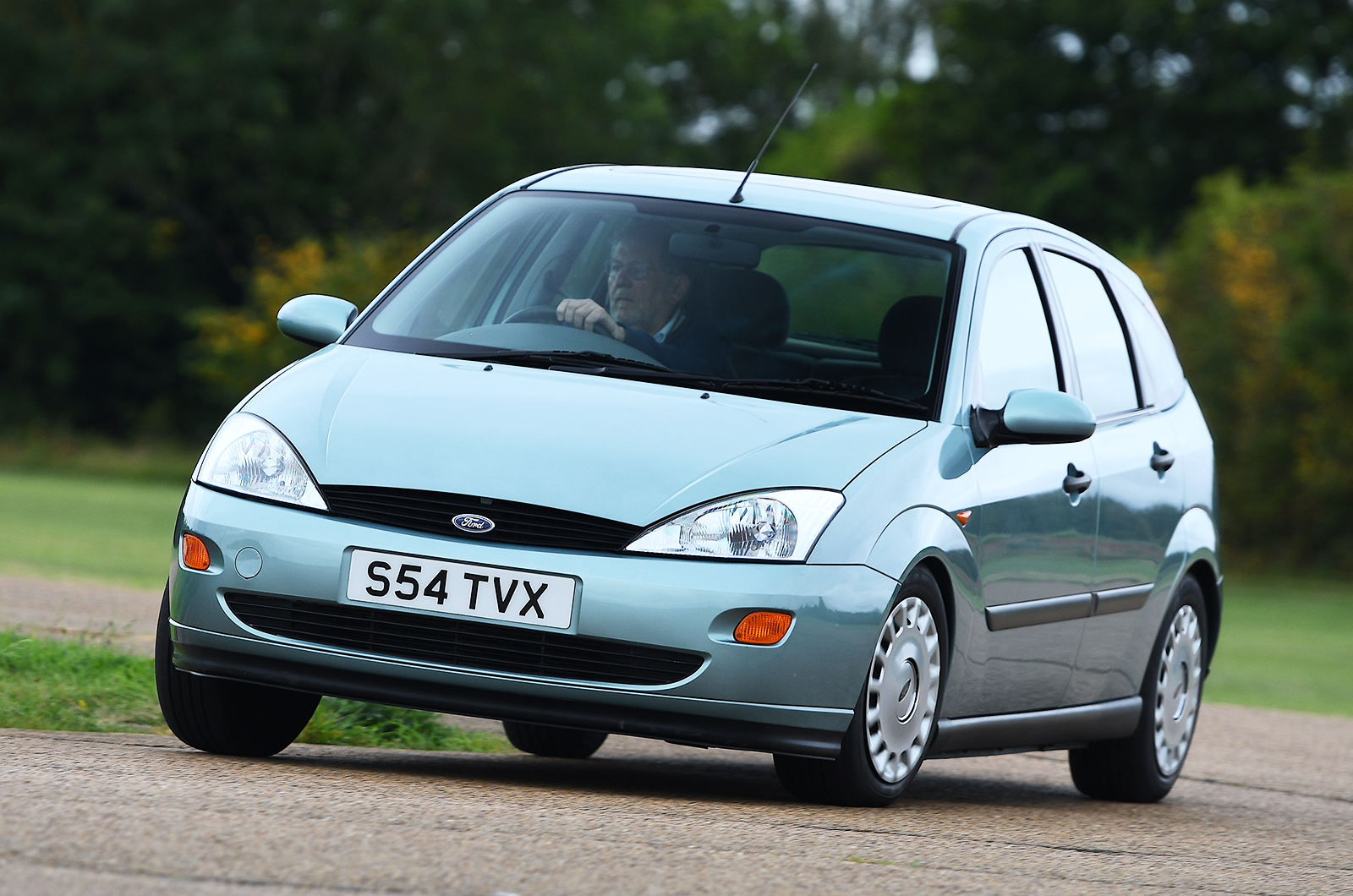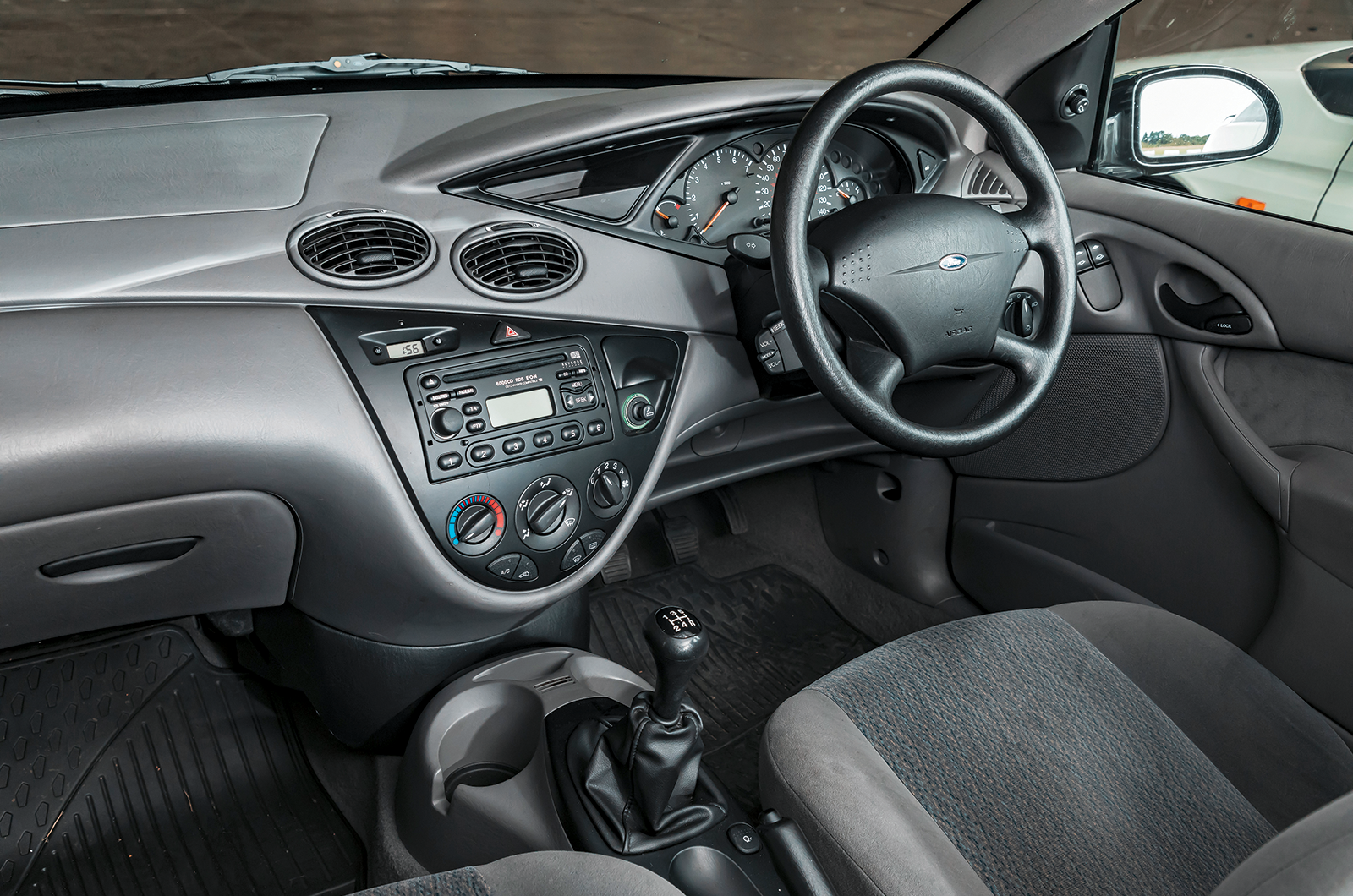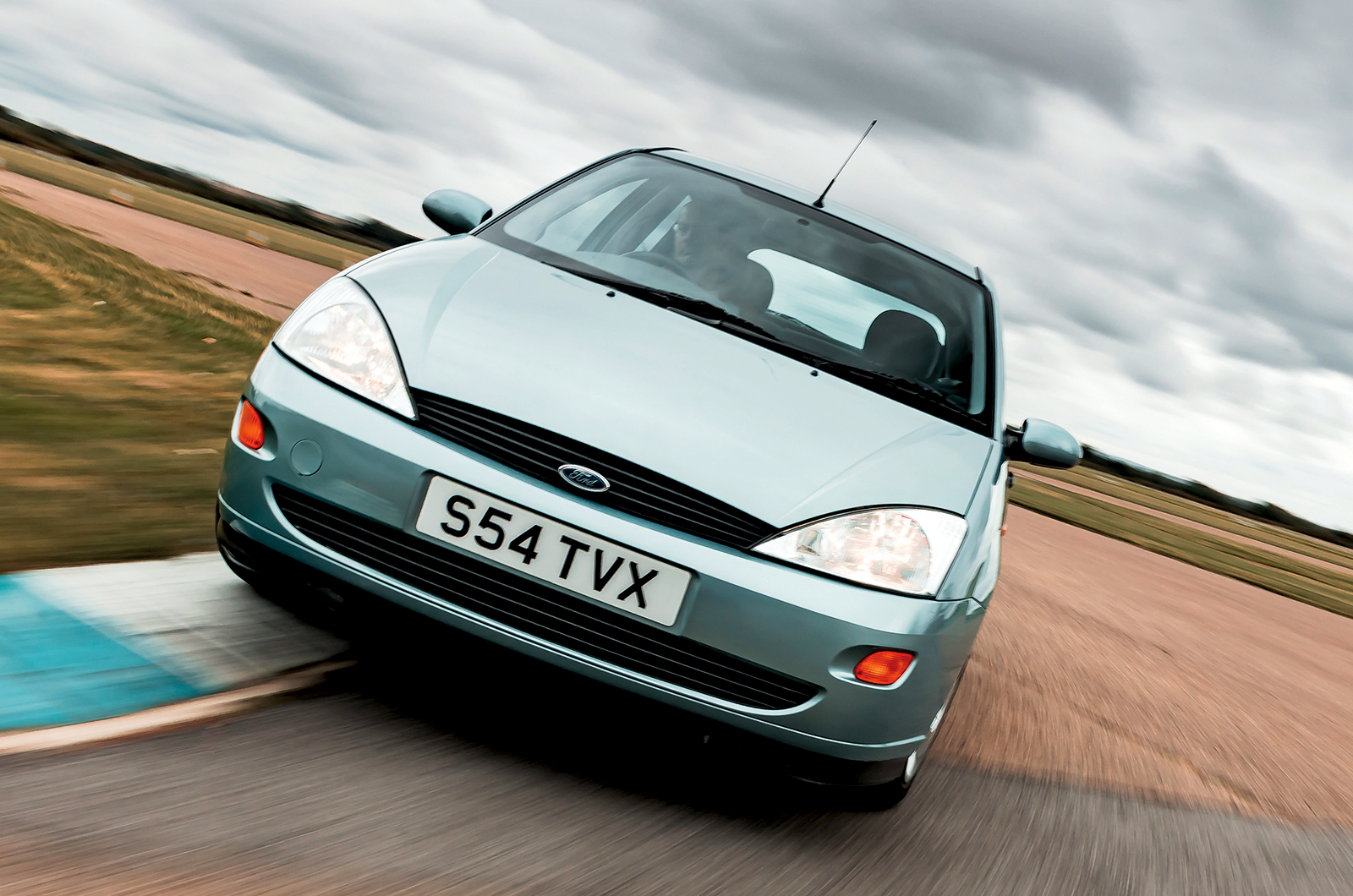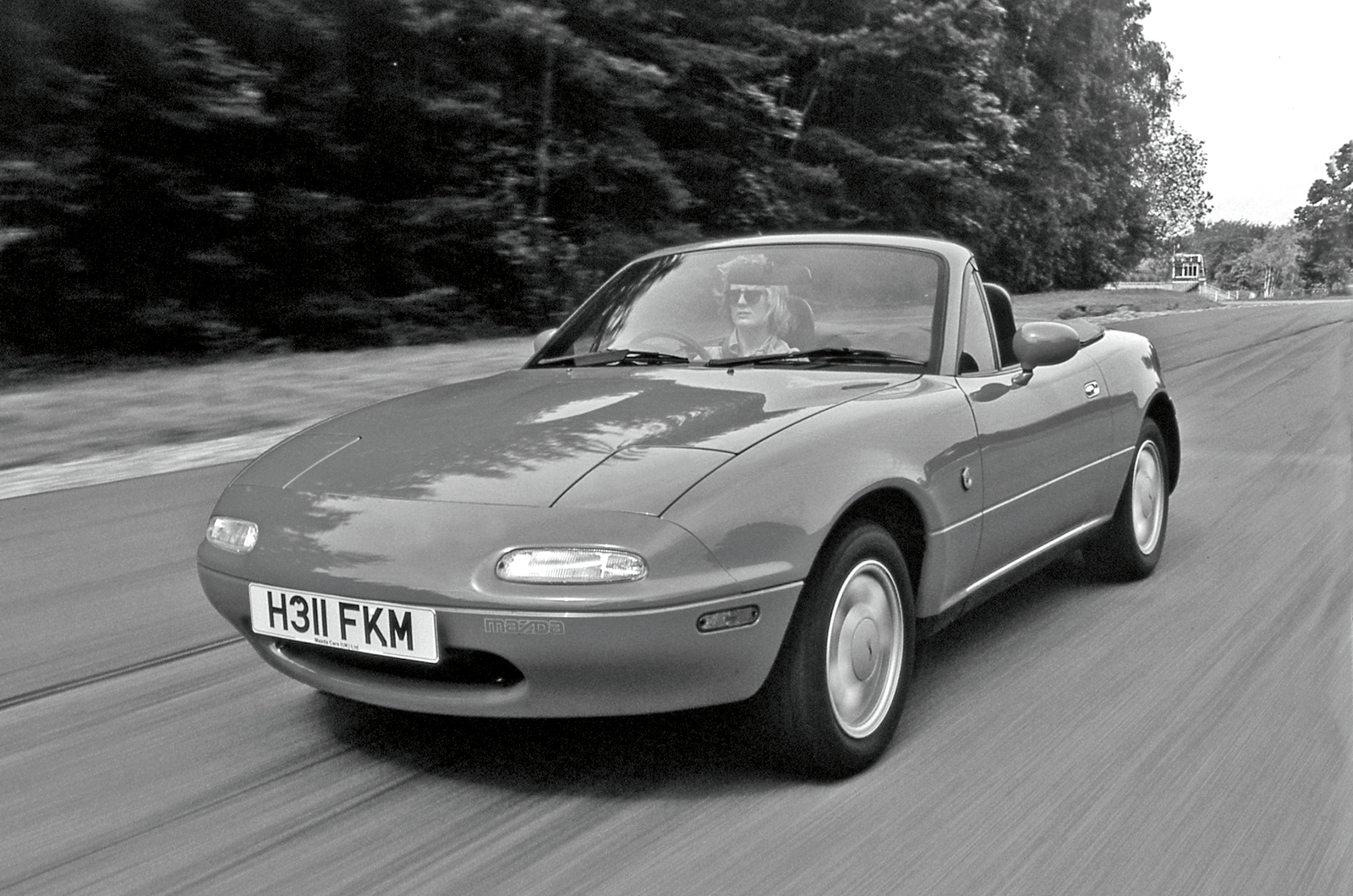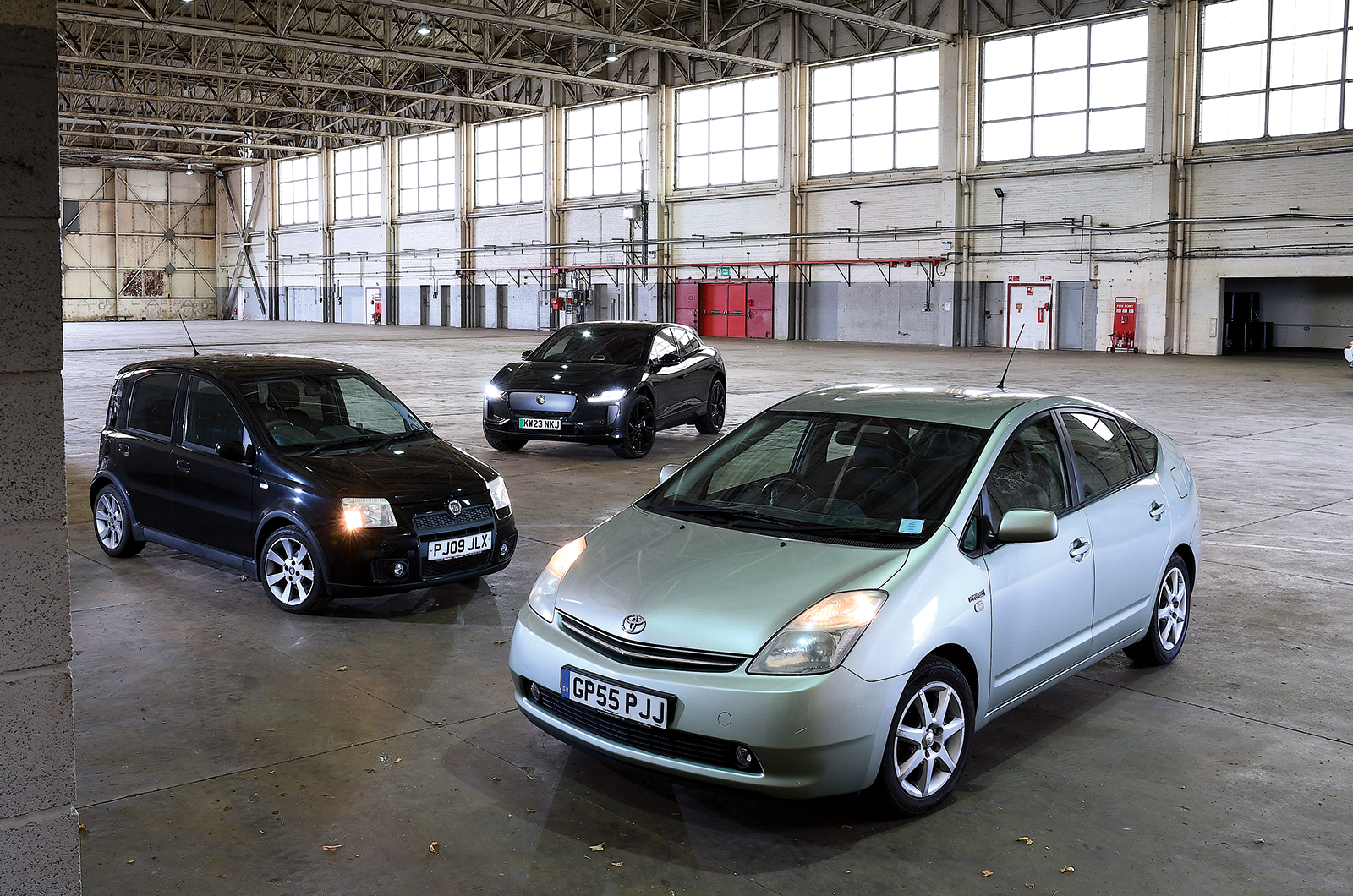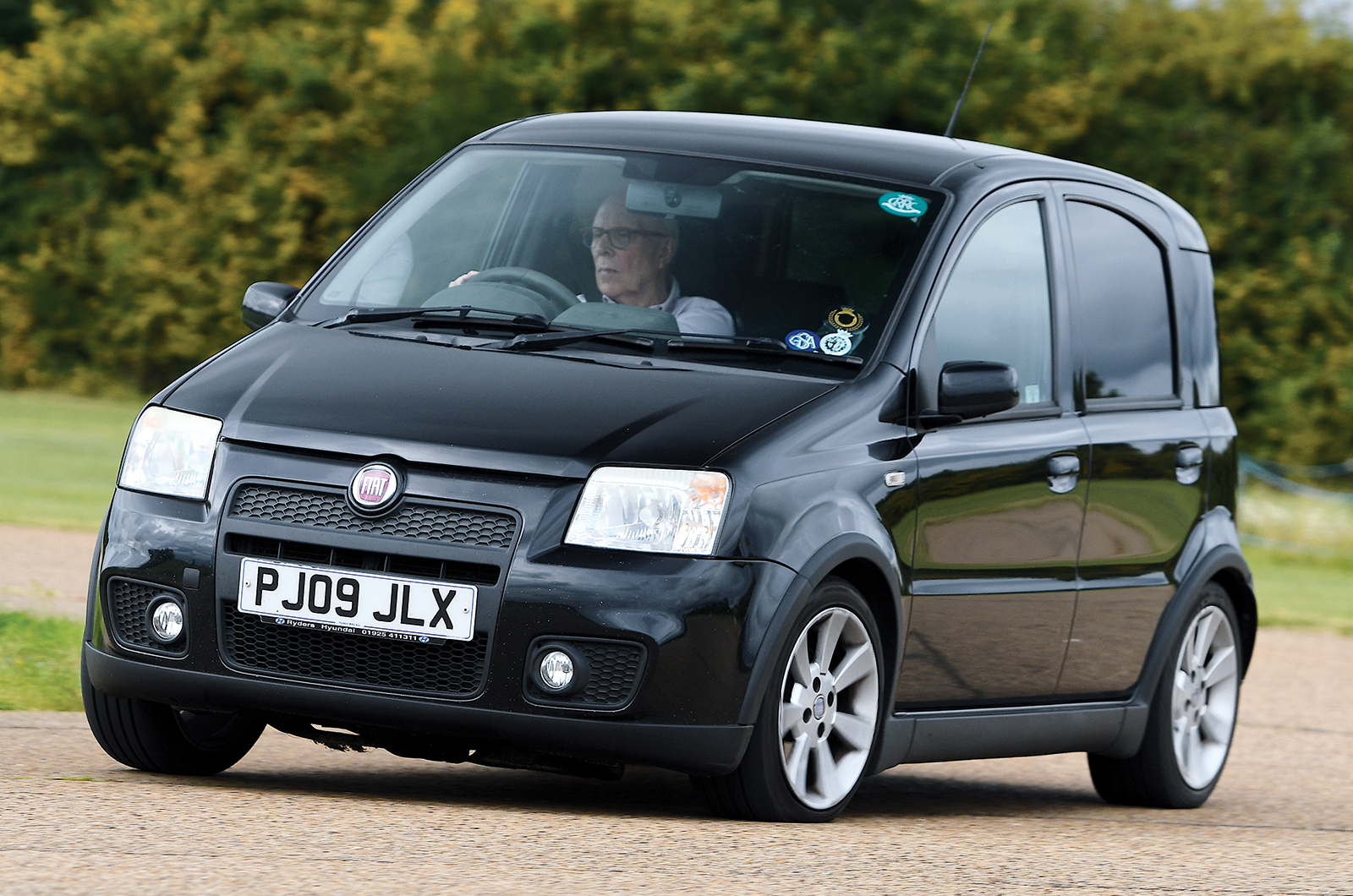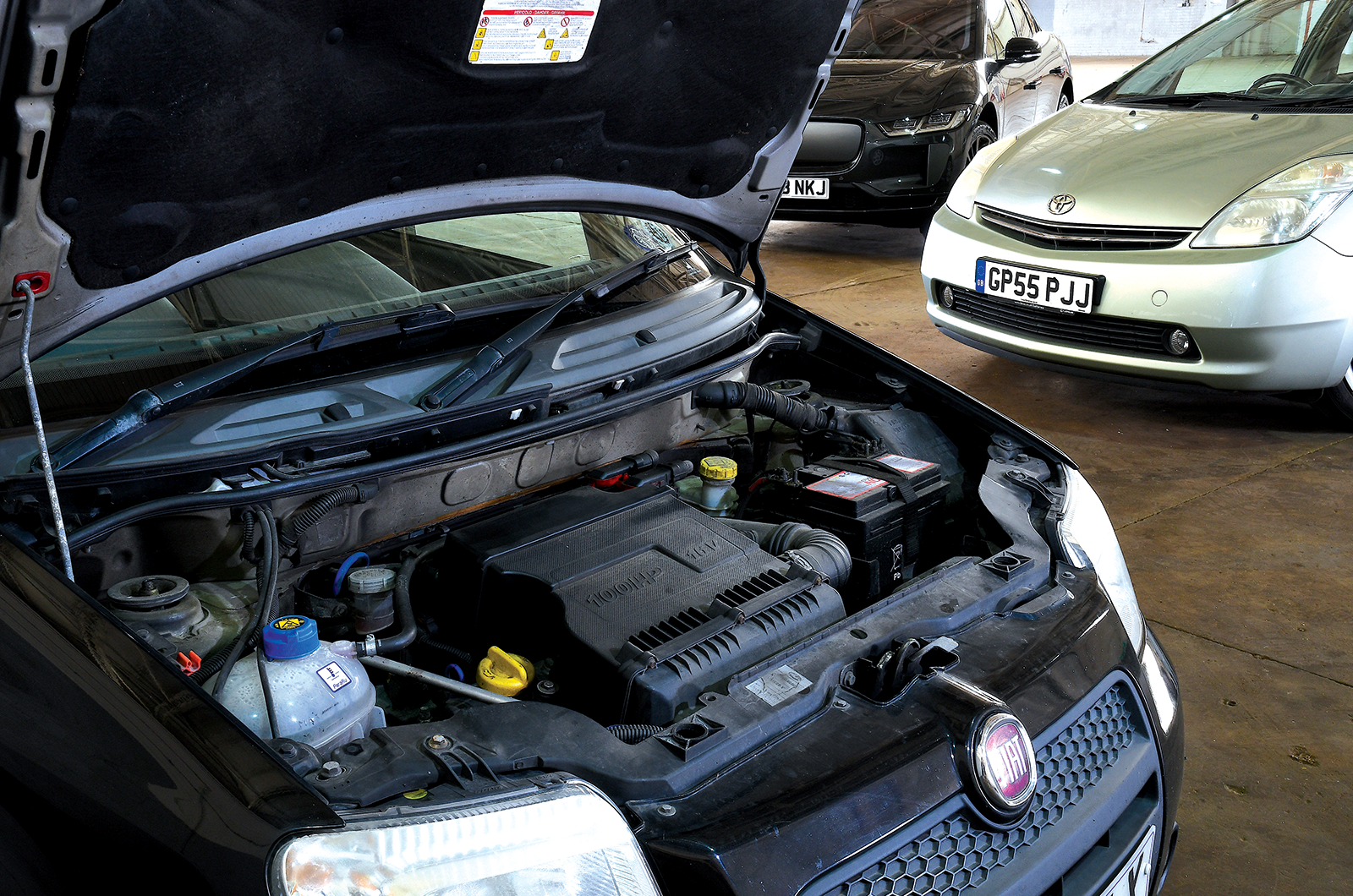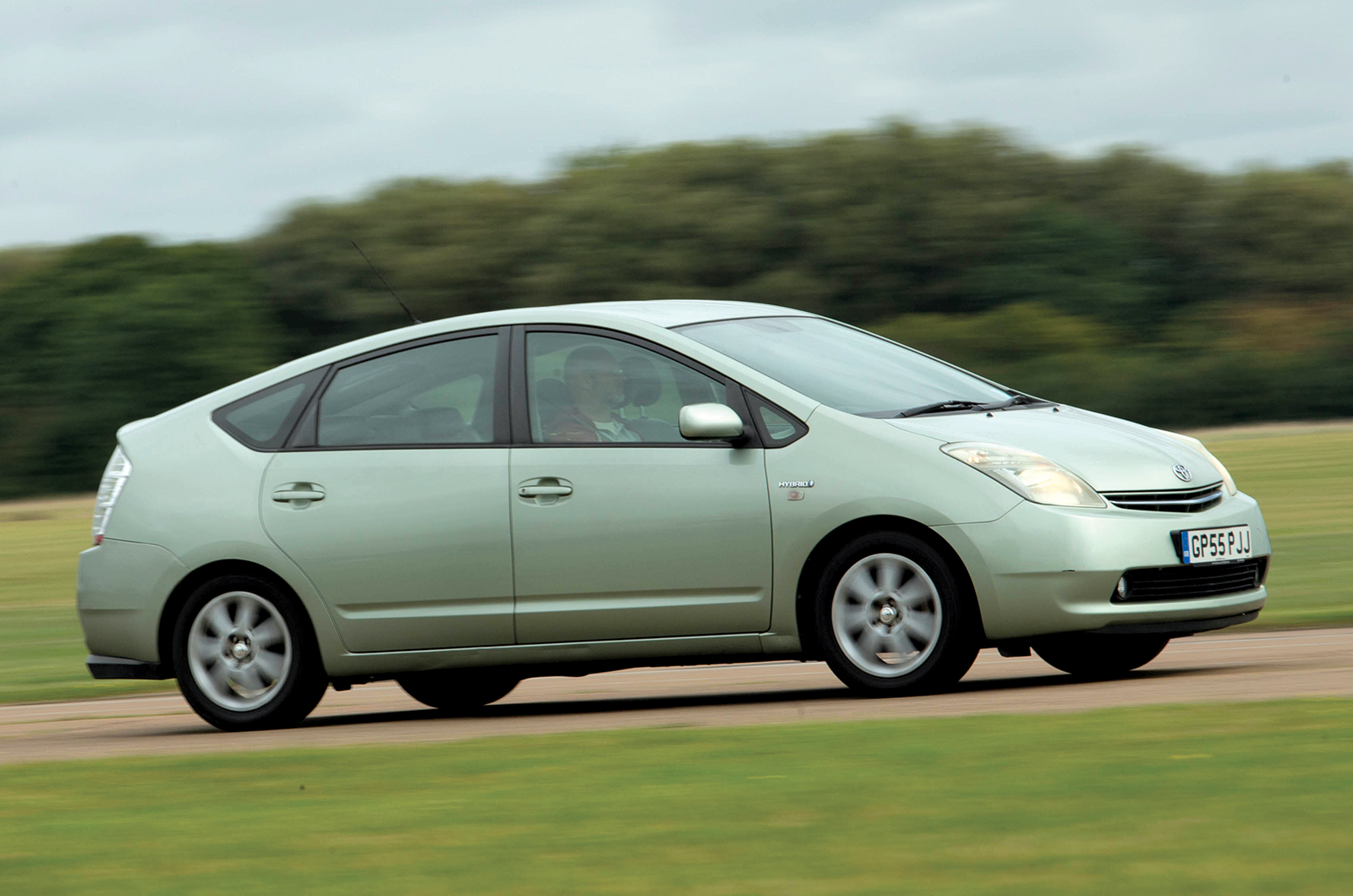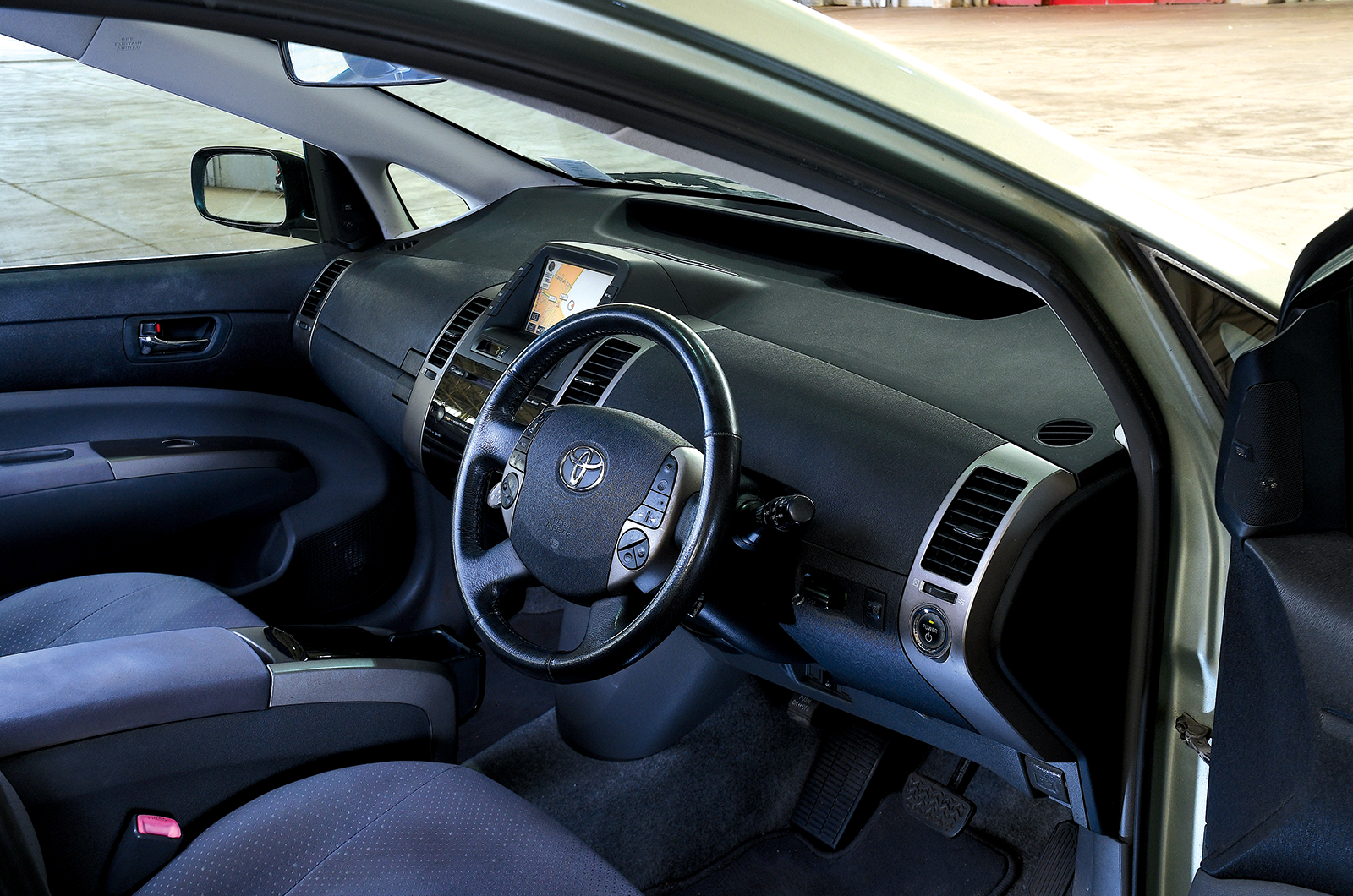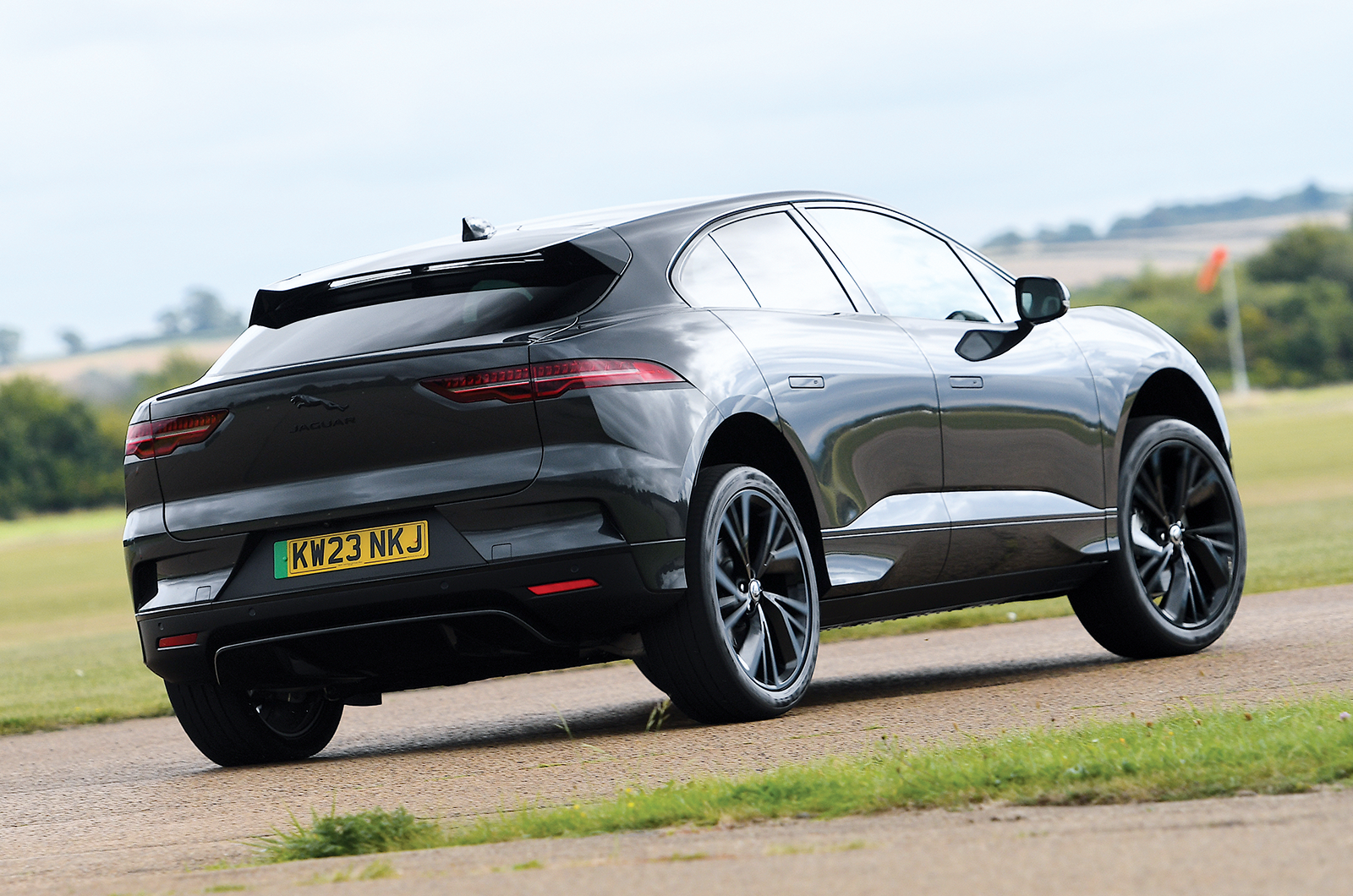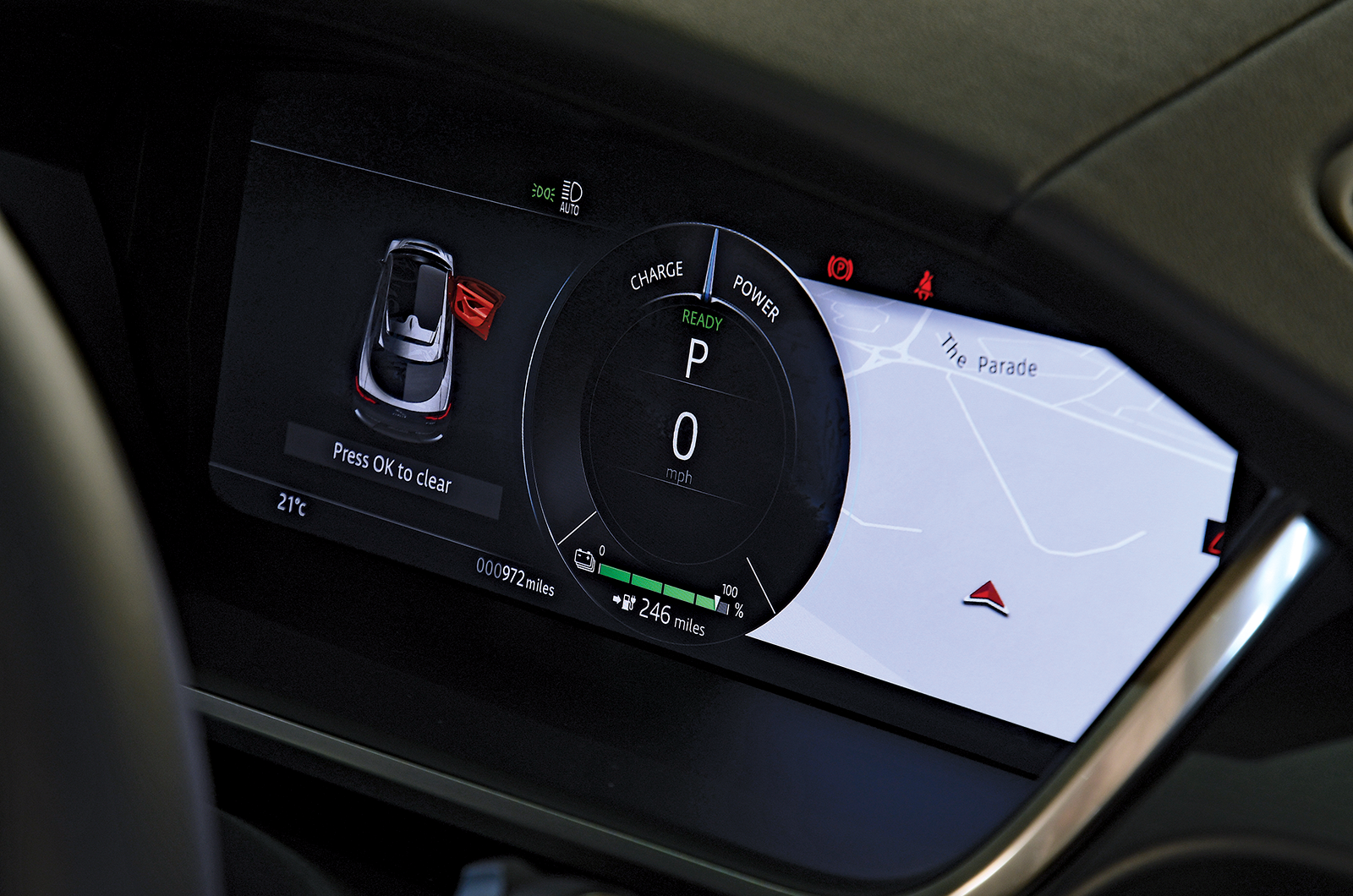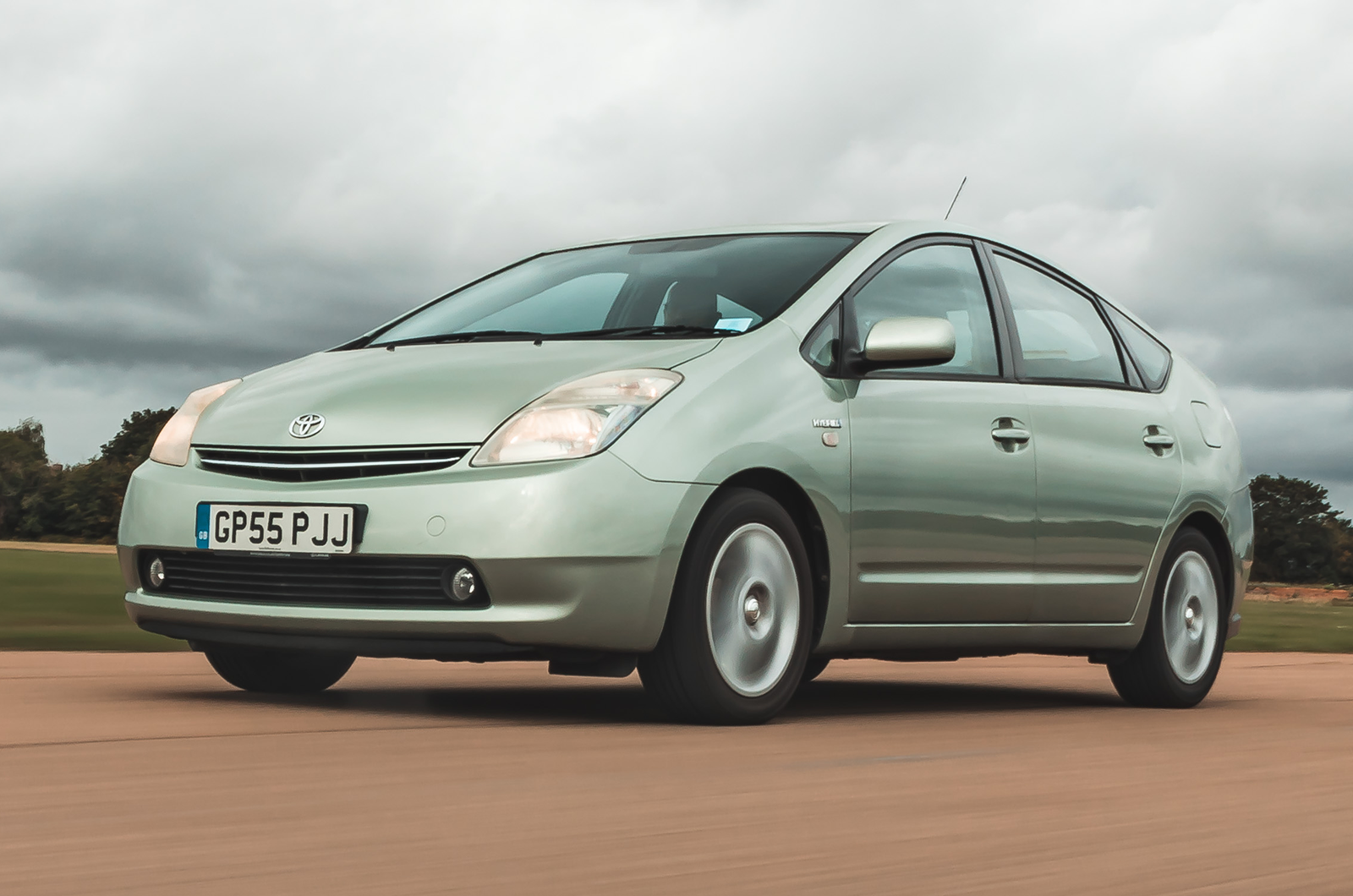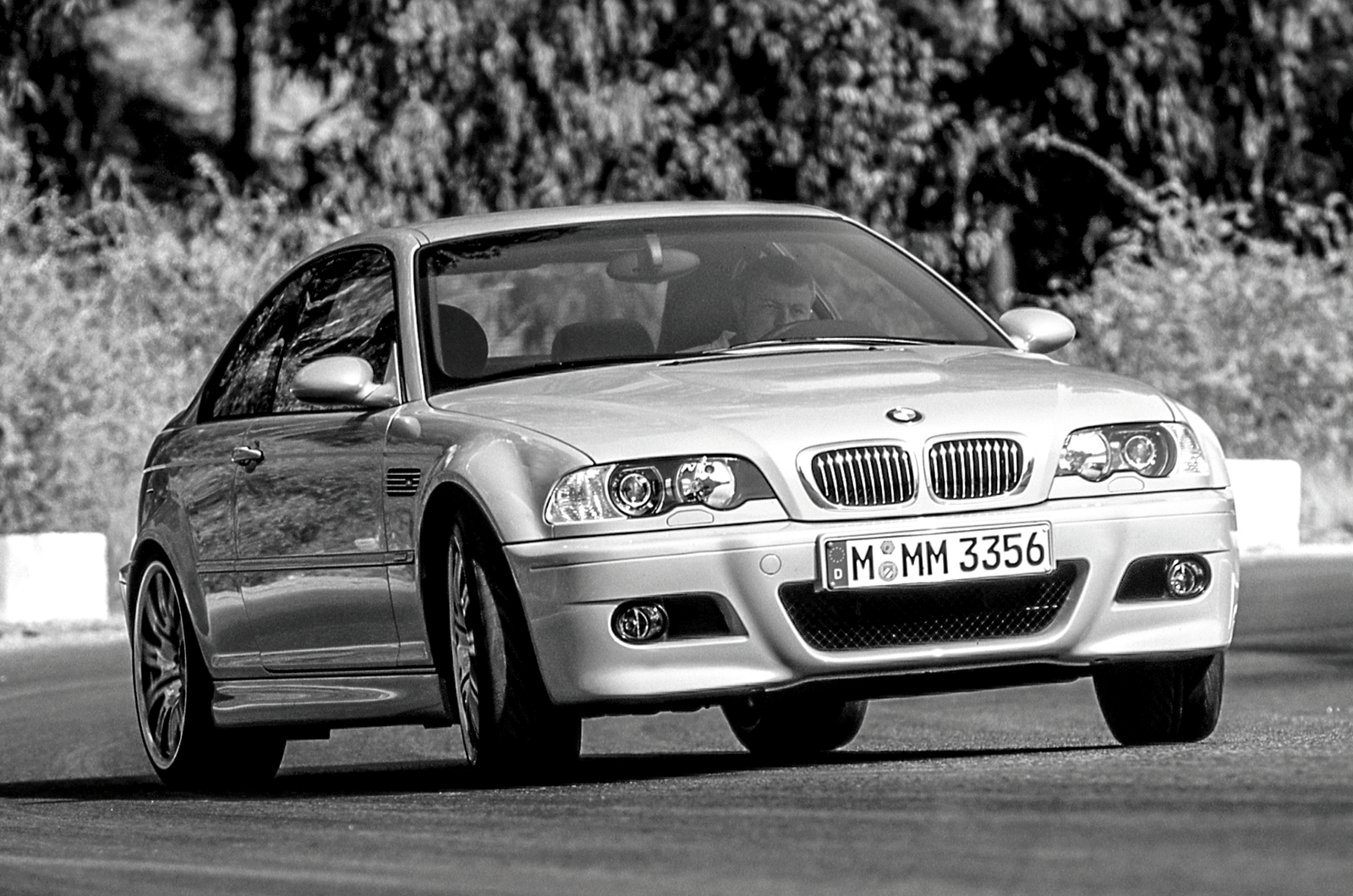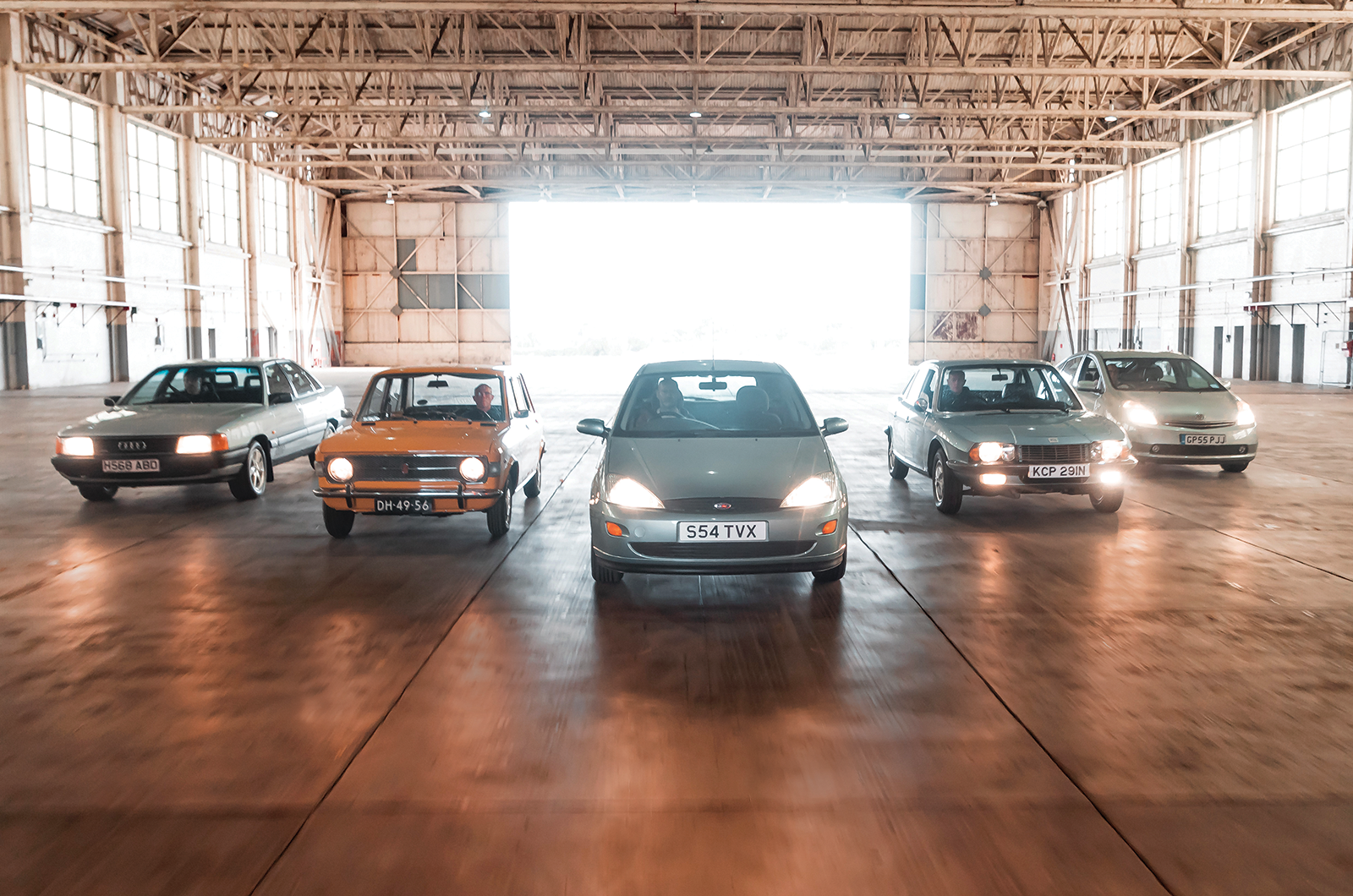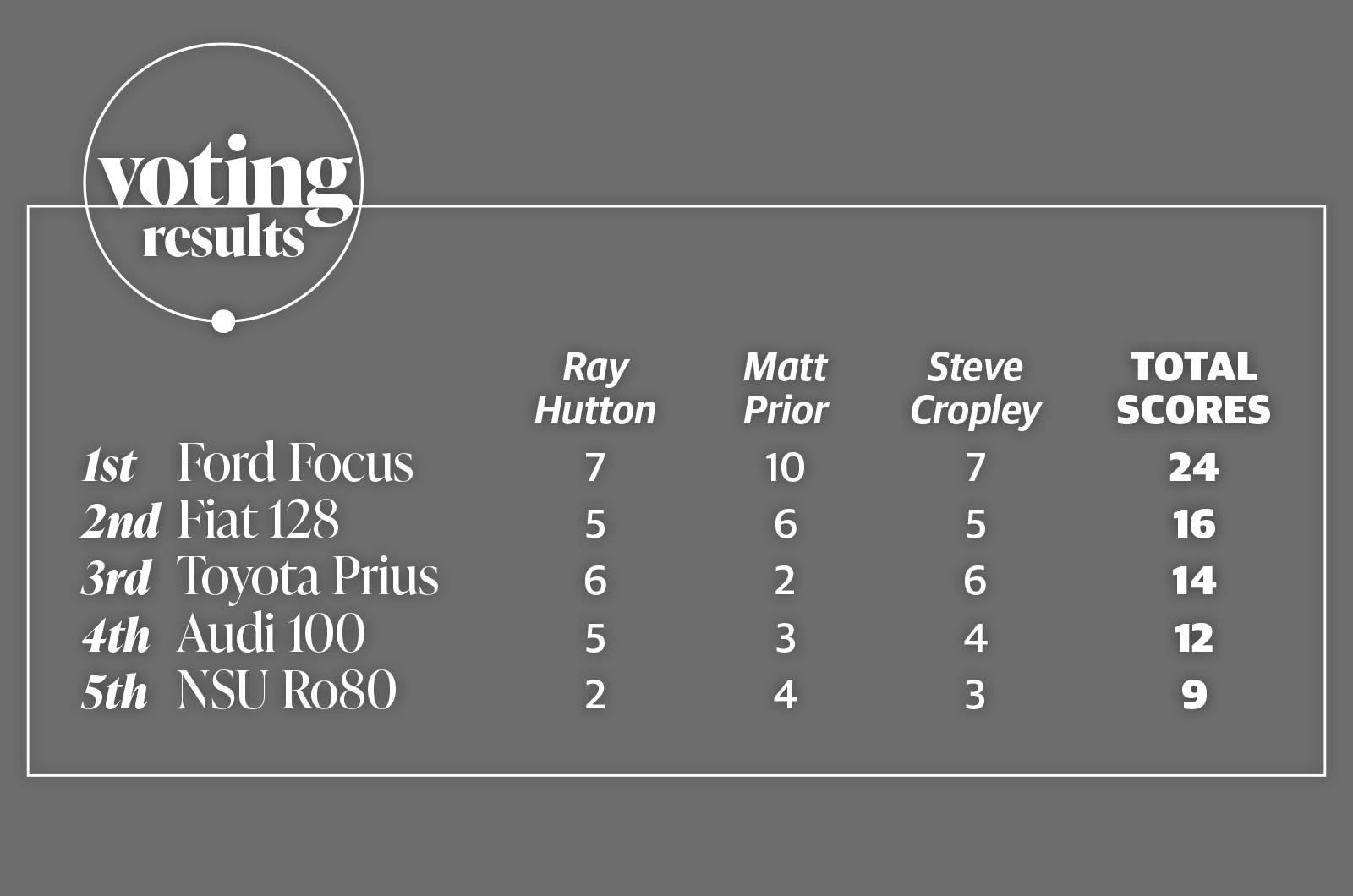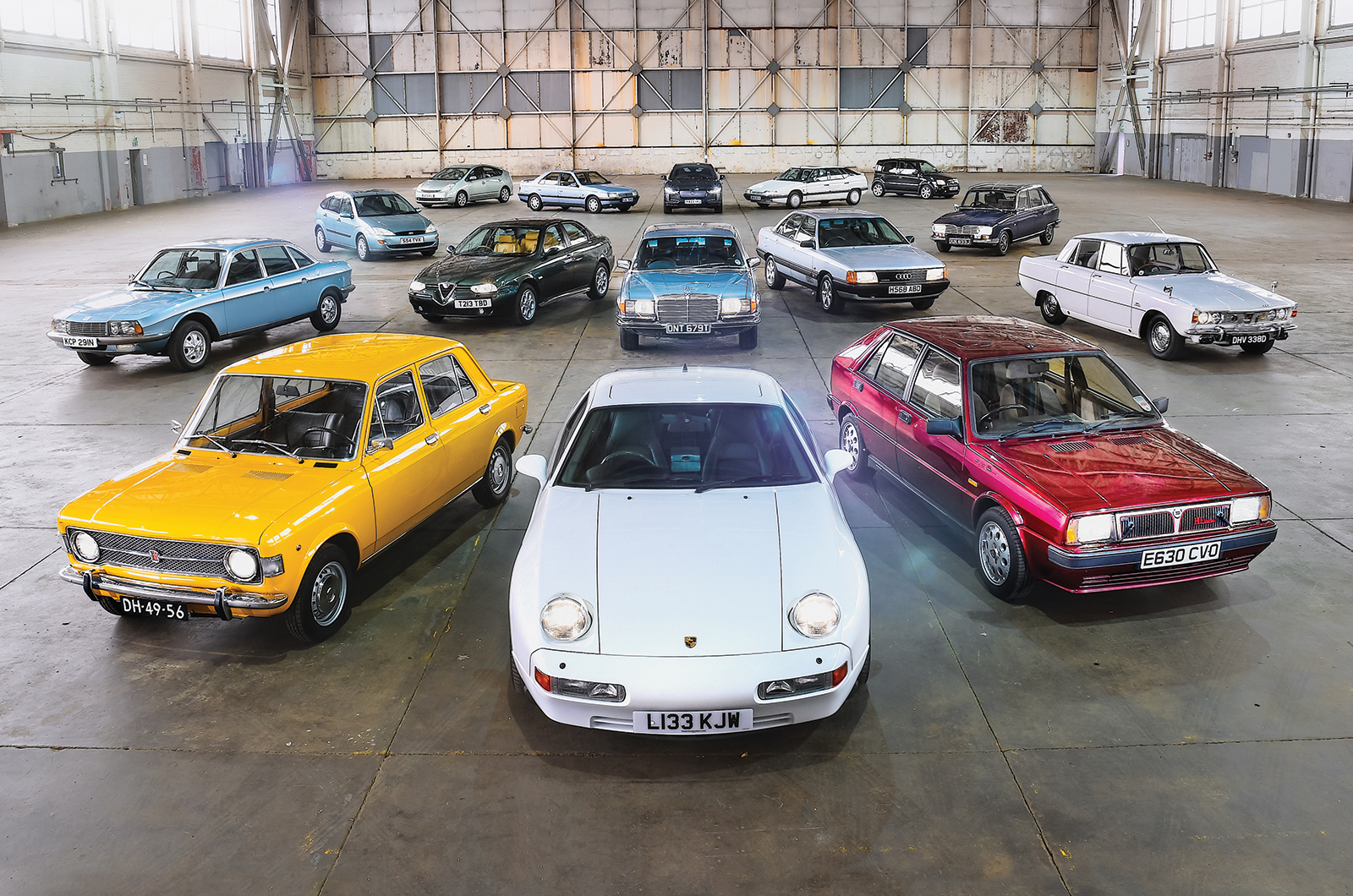All agree with Matt’s comment about the ride – “very sophisticated” – though Steve notes how much the engine asks of the driver: “You have to rev it, always.”
But Matt sums up the Ro80 best: “A real smoothie with a lot of charm.” Which is why it’s our first C&SC CotY finalist.
1960s rankings:
- NSU Ro80
- Renault 16
- Rover 2000
The Jaguar XJ6 missed out on the European Car of the Year podium
1960s wildcard: Jaguar XJ6
How could they have missed this one?
After the XJ was launched to great fanfare in September 1968, it didn’t even make that year’s CotY podium, with the worthy but unremarkable Fiat 125 and Simca 1100 ranking below the winning NSU Ro80.
But the Jaguar should have been there: it embraced CotY’s core criteria, offering an exceptional ride/handling balance from its all-independent suspension, refined with anti-dive geometry.
The XK ‘six’ saw service again, in 2.8- and 4.2-litre guises, and the XJ6 received rave reviews.
It was even great value – another CotY tenet.
Car of the Year: 1970s
Three very different classic cars represent the 1970s, with the big Mercedes-Benz (right) lasting only eight years to the Fiat’s (left) 16 and the Porsche’s 18
By the start of the new decade, CotY had established itself as a credible arbiter of good, bad and indifferent cars, with manufacturers of winners increasingly using the award as a powerful marketing tool.
The automotive landscape was changing, with hatchback models starting to make deeper inroads into the market, and Japanese manufacturers’ cheap and durable offerings challenging those that were often not, from Britain and Europe.
But with hindsight, the most prescient move – at least for smaller cars – was the gradual uptake of front-wheel drive.
So, it’s fitting that our first contender should be 1970’s winner, the Fiat 128.
While the Mini had popularised front-wheel drive more than a decade earlier, the 128 was the first to combine it with the other key technologies that were in their ascendancy: a single-overhead-cam four-cylinder engine, transversely mounted in line with its gearbox; MacPherson strut suspension; unequal-length driveshafts to help counter torquesteer; a front-mounted radiator with a thermostatically controlled fan; front disc brakes; and rack-and-pinion steering.
With this combination, Fiat’s legendary engineer, Dante Giacosa, not only created the template for almost all modern front-drive cars, but also a car that was ultra-spacious, with 80% of its footprint devoted to passengers and their luggage.
Fiat 128s are hugely rare in the UK nowadays, thanks to their body’s tendency to crumble at the first sign of a salt-encrusted British road.
But there are still good examples in Europe, hence why we have Ton van Zijl’s mint Positano Yellow first-series 128 with us, which he’s driven across from The Netherlands.
Fiat was at the top of its game in the early 1970s (left); the interior is remarkably spacious for such a small car
“It drives like a modern car,” laughs Ray. “Remarkably space-efficient – it even has the spare wheel under the bonnet.
“I recall that in 1970 it won CotY by a big margin over the similarly laid-out Autobianchi A112.”
Matt quickly warms to the 128’s driving characteristics: “It’s so precise, with a lovely gearshift and great vision; compact and sprightly, too.”
Steve is also a fan: “A spacious, airy, sweet-handling car that belies its age.
“Brilliantly styled, given that it had to be boxy. Nice, uncorrupted steering and a precise, old-school Fiat gearchange. Loved it.”
No pressure for our next contender, then.
The Mercedes-Benz W116 Sonderklasse was launched in 1972, but it wasn’t until it received the larger, 4520cc M117 V8 engine the following year that the 450SE/450SEL became a proper CotY contender for the 1974 title, beating the Fiat X1/9 and Honda Civic into second and third respectively.
And with safety being a prime CotY focus, the big Merc had all the right answers.
With its heavily reinforced body structure, crumple zones front and rear, padded dashboard and ribbed wraparound rear-light lenses that reduced dirt build-up, the 450 wasn’t just a large, powerful luxury saloon, but a great car in which to have a crash.
The Mercedes-Benz 450SE’s torquey 4520cc V8 engine provides plenty of grunt, while inside there’s a massive steering wheel and flat seats that aren’t sporty
Stylist Friedrich Geiger’s conservative design had a welcome dose of modernity, and featured sophisticated, all-independent suspension, with anti-dive, zero-offset geometry and new rear trailing arms, plus hydropneumatic struts on top models.
By early 1970s standards, the 450SE was an urbane-looking hot-rod, too – something the CotY judges clearly warmed to – producing 222bhp, and with a 0-60mph time of 8.5 secs on the way to a 130mph top speed.
However, the response from our collective today is less enthusiastic after driving Gohar Raja’s recently acquired late-model 450SE.
“It says ‘tank’ on the fuel gauge and that about sums it up,” says Matt.
“Are the seats meant to move around like that? [Apparently so…] It’s like a tray on four springs.
“No fun in corners, but a smashing, smoking old barge.”
Steve recalls the big Benz from early road tests: “It has aged more than I expected.
“I remember it feeling advanced for its era, but the old-school seats and the unresponsive steering are a surprise.
“Mind you, quality and longevity were promised and they are still there.”
The Porsche 928 is the only sports car to win the European Car of the Year award (left); the cabin felt futuristic for 1978
That’s something Ray picks up on, too: “It was well engineered, and still feels strong and solid.
“A big old lump and, with the Porsche 928, among the last expensive and exclusive cars to win CotY.”
It seems only right to complete that pairing today, with the only sports car ever to receive the gong.
Conceived as a more usable, benign replacement for the Porsche 911, the 928 also aimed to take the fight to Mercedes and BMW in the GT class.
That meant a greater focus on safety, comfort, efficiency and ergonomics, which brought it under CotY’s spotlight despite its cost and perceived exoticism.
Having an engine up front – along with clever rear-axle geometry that quelled oversteer – allayed any handling fears.
Better still, the 928’s torque tube and rear transaxle gave near-perfect 51:49 front-to-rear weight distribution.
An efficient, water-cooled 4.5-litre V8, with K-Jetronic injection, gave 150mph-plus, but with enough range for transcontinental schleps.
Then there was Wolfgang Möbius’ breathtaking design: sleek and aerodynamic, with aluminium doors, bonnet and front wings, and pop-up headlights that lay flat when not in use.
The boxy Fiat 128 has chic Minimalism and timeless looks
It was an enticing package, garnering 261 points in 1978, but does the 928 cut it today?
“Heavy controls and rather coarse behaviour mean it doesn’t drive as well as it looks,” says Steve, and this despite ‘our’ 928 being a much later S4.
“This was supposed to replace the 911; no wonder buyers continue to prefer the icon.”
Ray, who joined CotY shortly after the 928’s win, believes the jury was persuaded by its advanced technology, especially the ‘Weissach axle’:
“But this one felt heavy, the engine lazy and the auto ’box sluggish.”
Matt agrees about the control weights, but strikes a more positive note: “Cor! Really cool and corners flat, but so not a 911 replacement – and so not a CotY car.”
Which, along with the lukewarm reception to the Mercedes, means that there’s a decisive finalist from our 1970s trio: the Fiat 128.
1970s rankings:
- Fiat 128
- Porsche 928
- Mercedes-Benz 450SE
The Volkswagen Golf, inspired by the Fiat 128, would’ve been a worthy winner, too
1970s wildcard: Volkwagen Golf
Perhaps not such a wild card, since the Volkswagen Golf was runner-up to 1975’s winner, the Citroën CX.
But its launch the year before had not come too soon as sales crumbled of the VW Beetle it effectively replaced.
It captured the emerging trend for compact, front-drive hatchbacks perfectly, though some technical inspiration may have come from our decade’s finalist, as observed by designer Giorgetto Giugiaro when he spotted a disassembled Fiat 128 in the Wolfsburg factory.
Nonetheless, the VW Golf was an immediate success, with UK sales of 19,000 in 1975, its first full year.
Car of the Year: 1980s
Italy, Germany and France give a truly pan-European flavour to our 1980s finalists, with Britain notable by its absence
The car industry’s focus on front-drive engineering in the mainstream sector continued unabated throughout the 1980s.
That was borne out by 22 out of the 30 top-three CotY cars through the decade being so driven, representing a near 80:20 split – figures that you could have pretty much reversed for finalists from the 1960s.
Hatchbacks also underwent significant growth, with 20 of those podium-placing CotY cars having a fifth door.
That wasn’t confined to small cars, either, with the Renault 25 (second in 1985) and Ford Scorpio (CotY in ’86) bucking the trend for large, four-door saloons.
The 1980 European Car of the Year embraced both of those shifts.
Designed by Giorgetto Giugiaro, the Lancia Delta was presented as a premium small car at its Frankfurt show launch in 1979.
Today, the base model is somewhat overlooked compared with the Delta’s HF and Integrale flag-bearers, which is a shame, given its original CotY success.
Sitting below the mid-sized Beta in Lancia’s range, the Delta took the hard points of its Fiat-family platform from the Strada (which in turn had been developed from the 128).
Along with all-independent MacPherson strut suspension, the Delta also inherited the Strada’s 128-derived, oversquare, overhead-cam engine, which initially came in either 1.3-litre 74bhp, or 1.5-litre 84bhp forms.
The Lancia Delta’s front-drive layout follows the ’80s zeitgeist (left); funky trim in the cabin
A twin-choke Weber carburettor and a new inlet manifold and exhaust system provided a lift in power versus the Fiat, and also helped justify the Delta’s higher price over its lowlier sibling.
Back in 1980, the Lancia – which clinched victory ahead of the new Vauxhall Astra and Peugeot 505 – impressed the CotY judges with its comfort, roadholding and spacious cabin, and today those qualities (almost) appear to hold true among our panel.
However, Graham Whyatt’s Delta is a little more special, being an HF Turbo model, which didn’t appear in the range until 1985 and brought with it a leap in power to 138bhp.
“Fast and a bit unruly,” is Ray’s take on the Lancia, though it’s clear that he enjoys piloting this Delta around Bicester’s demonstration track.
As does Matt – “fantastic steering and agility, I loved it” – while acknowledging that other Deltas he has driven in the past had not felt quite so together as this one.
Steve is also taken by the Lancia’s charms: “Nice handling, but I was a bit surprised by its low levels of grip.
“It’s the perfect size, though, and a rather brilliantly optimised iteration of the much bigger-selling Fiat Strada/Ritmo.”
Contrasts don’t come much greater than with our next CotY winner, the Audi 100.
Only this, the third-generation 100, captured the jury’s interest enough to award it full honours in 1983, and it was obvious why.
The Peugeot 405’s Pininfarina lines have aged well (left); soft velour in the family-friendly cabin
Gone were the previous versions’ angular body lines, replaced by a shape that looked more like a concept car for the next-generation 100.
It was super-slippery, too, with a drag coefficient figure of 0.30Cd, helped by flush-fitting side windows and a roof shorn of rain gutters.
This, along with an unfeasibly low 1100kg kerbweight for such a large car, meant that it only required relatively small engines to haul it along, ranging from a four-cylinder 1.8-litre to a turbocharged five-cylinder 2.2-litre unit, plus two turbodiesels.
Even after all-wheel-drive quattro models were added to the range soon after launch, the 100’s virtuous circle of low weight and small-capacity engines meant class-leading economy.
CotY’s jury president, Paul Frère, said it was “the worthiest Car of the Year for a long time”.
It also gave impetus to Audi boss Ferdinand Piëch’s Vorsprung durch Technik mantra that gained so much marketing traction for the brand (remember the TV ads?).
Our test car is a late, 1991 model in 2.2-litre petrol quattro spec, which still weighs in at a relatively sylphlike 1350kg.
Coming from Audi UK’s heritage fleet, it’s a well-used car, with 150,000 miles showing, but you’d never guess to look at it. Or to drive it.
Despite having a worn synchromesh on second gear, this 100 still feels supremely solidly built and together on our test track.
Inside and out, the Audi’s quality is superb (left); the 100’s turbo ‘five’ was shared with the legendary quattro
“It drives remarkably well,” agrees Ray, who was on the CotY judging panel when the Audi landed its title.
Steve also believes that the model’s appeal has endured: “It’s a car whose former excellence is proved by the fact that it still feels durable and capable today.
“There are some ergonomic weirdnesses, but it has kept its integrity.”
That’s something Matt picks up on, too: “It’s a likeable car, if not as ergonomically sound as I remember, with a big wheel, plus springy pedals and gearshift.
“It’s quite agile, though, and must have felt very advanced at the time.”
Which was certainly true of our final 1980s contender.
Peugeot’s 405 romped to a well-deserved win in 1988, leaving the Citroën AX and Honda Prelude in its wake.
Thanks to 54 out of 57 judges awarding it maximum points, it was the most decisive victory in CotY’s 24-year history.
With its sharp Pininfarina lines and well-balanced front-wheel-drive chassis – something for which Peugeot was becoming renowned after the successes of the smaller 205 and 309 hatchbacks – the 405 brought a welcome dose of panache to the staid family saloon segment, following its competent but rather dowdy-looking 305 predecessor.
At launch an efficient set of 1.6- to 1.9-litre petrols was complemented by Peugeot’s punchy but refined 1.9- and turbo 1.8-litre diesels, which, for fleet drivers, were becoming ever more appealing.
Despite its staid looks, the Audi 100 has the heart of a quattro, and it’s all the better for it
Paul Gritton’s late-model 405 GTX automatic still cuts a sharp swathe among our CotY cohort today, with Ray admitting that it has aged particularly well.
“It was the epitome of the family/business saloon in 1988,” he remarks.
Matt agrees: “It’s just what a family car of the age should feel like – simple, good to drive and relaxed, with great steering.
“I really liked it – and it passes the ‘50m test’ brilliantly.”
Steve is yet another fan: “Still desirable and refined, with space and superb dynamics.
“An easy car to drive, live with and love, even now – and that’s before you talk about the terrific Pininfarina styling.”
All the same, the Peugeot’s undoubted charms – along with the Delta’s agility and space-efficiency – don’t sway our judges quite as much as the technical tour de force that is the Audi 100.
So it is Ingolstadt’s finest that goes forward to our final five.
1980s rankings:
- Audi 100
- Peugeot 405
- Lancia Delta S1
Renault’s popular people carrier missed out on a European Car of the Year accolade
1980s wildcard: Renault Espace
Ray recalls that CotY’s jury felt the Renault Espace was just too different to be considered after its launch in 1984.
The concept had already suffered a long and tortuous gestation, starting with Matra in the early ’70s before finally being productionised by Renault.
Radical in its construction, with a glassfibre body around a galvanised steel spaceframe, the Espace initially took time to find its footing.
But its inherent appeal as a lifestyle carrier with room for up to seven soon caught on.
CotY missed a trick, but redressed the balance when the Renault Mégane Scénic won in 1997.
Car of the Year: 1990s
Not all 1990s car designs were bland Euroboxes: the Ford Focus (left), Citroën XM (middle) and Alfa Romeo 156 encompass retro, contemporary and futuristic cues
Ray is certain that, had European Car of the Year been active in 1955, the Citroën DS would have been the hands-down winner.
Its democratisation of advanced technology for the masses symbolised everything that the CotY jury would have supported, and few other cars in that year – or indeed that decade – came close.
So perhaps it is no surprise that both of its successors – the Citroën CX in 1975 and the XM in 1990 – secured the crown.
Representing this decade, the XM was still very much in the classic mould of a large, technically eccentric Citroën.
Launched in 1989, its sharp Giugiaro lines juxtaposed the more rounded styling of its forebears, and presented a magnificent 13-window glasshouse, making for a light, airy cabin ambience.
The wedge-shaped front end and tiny headlights improved aerodynamics, and, when mated to one of its four-cylinder engines – a 2-litre turbo petrol and a rather agricultural 2.1-litre turbodiesel – the XM was remarkably fuel-efficient for such a large car.
But the real USP of what Autocar labelled ‘the best riding car in the world’ was its newly evolved ‘Hydractive’ suspension.
Retaining the CX’s hydropneumatic set-up, with nitrogen gas spheres and liquide hydraulique minéral-filled dampers, the XM added a series of computer-controlled sensors detecting everything from wheel speed and braking effort to body movement and steering angle.
Not only would drivers benefit from a large Citroën’s famed pillowy ride, but also far tighter body control.
The Citroën XM is a touch floaty around Bicester Heritage’s test track (left); the interior feels like a DS for the 1990s
Rob Draper’s immaculate former Citroën heritage fleet example still looks pleasingly avant-garde today to some eyes, though Steve is not completely sold on the XM: “It’s a car to love if you’re keen on the singular behaviours of the hydropneumatic suspension, but the interior and exterior design are nowhere near as good – or as special – as the CX that preceded it. Quality is not a strength, either.”
Matt describes the XM as “nicely weird” after his first drive.
“Though it’s less plush than I imagined,” he continues, “and has a bit of a van-like driving position. But I like it.”
Ray suggests that the XM was probably the last truly oddball CotY winner: “It had some interesting ideas, such as switchgear on the wheel, to go with the traditional DS/CX features. It’s a nice, gentle car for long journeys.”
Many worthy CotY winners – the 1994 Ford Mondeo and 1995 Fiat Punto, to name but two – were crowned before we come to our next contender, the Alfa Romeo 156.
Launched in 1997 at the Frankfurt show, the 156 was 1998’s Car of the Year – the first Alfa Romeo to receive the accolade.
It was entirely justified, too, since the model marked a complete turnaround for Fiat-owned Alfa, which had been languishing in the doldrums for many years.
Alfa’s head of Centro Stile, Walter de Silva, was responsible for the 156’s design, which avoided the 1990s trend for retro pastiches, yet paid subtle homage to iconic Alfas from the past, such as the Giulietta and Giulia.
Gorgeous detailing helps the Alfa Romeo 156 to stand out (left); the V6 sounds glorious
A coupé-like roofline, hidden rear doorhandles and that offset front numberplate housing set the 156 apart from its many vanilla rivals plying the ’90s roads.
It would outperform most of them, too.
At launch, three Twin Spark four-pot engines, from a 120bhp 1.6-litre to a 155bhp 2-litre, sat below the range-topping 24-valve, 2.5-litre V6.
It was a compelling line-up, and complemented the Fiat-based (but highly evolved) chassis, with front double wishbones and MacPherson struts at the rear.
When votes were cast, 40 out of 56 jurors gave the 156 top marks, relegating the competent but dull VW Golf Mk4 to the runner-up spot, and the new Audi A6 to third.
By the sound of it, nothing much will change for our panel today after driving David Worrall’s V6-engined model.
“It’s one of those cars that seems to get better as it ages,” says Steve, “apart from the fact that it continued to be dogged by then-traditional Alfa Romeo reliability gremlins.
“Styling, size, sounds and handling are all great for the era. There aren’t enough still on the road.”
The Ford Focus shows most here a clean pair of heels in the corners (left); the Ford’s high driving position is one of the only flaws inside
Ray is also a sucker for its charms: “The 156 was the start of a new generation of Alfas that drove as well as they looked.
“This one is a peach, and stands up well today as a compact sports saloon.”
Matt agrees: “From the moment you push the big door button you know this car is out to please you.
“And it still drives really well, even if the driving position is poor. But this is a good-looking, car.”
Our final 1990s competitor was another turnaround model after its predecessor.
Taking the final CotY trophy of the century, the 1999-winning Ford Focus was nothing short of revelatory.
Available as a three- or five-door hatch, estate and four-door saloon, its ‘New Edge’ design was fresh, modern and easy on the eye, while its front-wheel-drive chassis – including Ford’s much-vaunted ‘Control Blade’ multi-link rear suspension – set a new class benchmark.
That Ford had achieved what it had with the Focus, while still making it appeal in multiple markets (it was the company’s first true ‘world car’), makes its impact as a CotY winner all the more impressive.
Ford Heritage’s low-mileage 1.6-litre Zetec hatch represents the core of the Focus range when new.
‘The Ford Focus is one of the few cars to receive hardly any criticism from our judges after returning from the test track’
It’s also one of the few cars so far to receive hardly any criticism from our panel after returning to Bicester’s main hangar.
“The Focus was such a huge step forward from the Escort,” says Ray.
“It showed the benefits of detail engineering and development by having perfect steering, and being the best-handling car of its class, combined with neat styling and good packaging.”
Steve is equally impressed: “An amazingly complete car at the time. Its supple ride still feels modern, but lighter than today’s offerings.
“Astonishing progress, given the inadequacies of its predecessor.”
And Matt sums up what all three judges feel: “The Focus is so good, it just redefined everything we expected from family hatchbacks.”
Enough said. The Ford is our final 20th-century finalist.
1990s rankings:
- Ford Focus
- Alfa Romeo 156
- Citroën XM
The Mazda MX-5 is one of the best affordable driver’s cars, but it didn’t catch the attention of European Car of the Year judges
1990s wildcard: Mazda MX-5
By the ‘90s, European Car of the Year unashamedly favoured mainstream cars.
But, given that Mazda sold a million MX-5s globally between its launch in 1989 and 2016, it’s about as mainstream as a two-seater, rear-drive open sports car can get.
The MX-5 also embraced many of the qualities sought by CotY – functionality, economy, attractive design, fine handling, value – while its compact dimensions and light weight would have proved that complexity and lots of kit shouldn’t always be the path to a CotY win.
The ‘90s also hosted two MX-5 generations, so no excuses, really.
Car of the Year: 2000s
The Toyota Prius (closest) and Jaguar I-Pace (furthest) were at the forefront of automotive technology, whereas the Fiat Panda is a competent, engaging hatchback
Think what you will about the modern market’s love for SUVs (sports utility vehicles) and crossovers, but CotY’s jurors have predominantly favoured hatchbacks and saloons this century, with only the 2007-winning Ford S-Max MPV bucking that trend before 2017.
Despite its mini-SUV overtones, our first contender, the 2004-winning Fiat Panda, was still a proper five-door hatchback.
Perhaps not quite as radical and innovative as Fiat’s 1980 original, the second-generation model was based on the all-new ‘Fiat Mini’ platform, which went on to underpin the second coming of the Ford Ka, as well as Fiat’s own 500 of 2007 (another CotY winner).
In one of the closest contests in the competition’s history, the Panda narrowly pipped the Mazda 3 and VW Golf to the top spot, with judges falling for its compact dimensions, spacious cabin, great ergonomics, and the option of Fiat’s ultra-frugal 1.3-litre Multijet diesel.
A design collaboration between Bertone’s Giuliano Biasio and Fiat’s Centro Stile, the Panda was an instant sales success in standard guise, and spawned a variety of derivatives until it finished its run in 2012.
And one of those variants is with us today.
Gary Axon’s Panda 100HP – a daily commuter, showing more than 100,000 miles – is a model launched in 2006, spicing up the range with a 99bhp, 1.4-litre, 16-valve ‘FIRE’ motor from the larger Punto, mated to a six-speed gearbox.
The 100HP’s chassis was also beefed up, with uprated springs and dampers, and disc brakes all round.
The Fiat Panda 100HP is a bit of a ringer here, but lots of fun (left); the venerable ‘FIRE’ motor packs a punch
“It’s a hoot to drive,” laughs Ray, “and has worn well considering it has more than 100,000 miles on the clock.”
But perhaps not for much longer, reckons Matt: “It doesn’t feel as if it’ll be around at 120,000, which is probably how it’ll still feel at 200,000!
“But I remember why I like them so much now. It has all the Italian city-car charm a car such as this should have – and it really wants to be driven hard.”
Steve agrees: “It’s the kind of car that puts a grin on anyone’s face.
“Distinctive design inside and out, which was flexible enough to be just as effective as a baby sporty car as a city runabout.
“Such a lot of car for the size and money, too.”
While our next contender might have lacked the Panda’s fun-factor, as a bellwether for automotive technology it led the way.
The 2004 Toyota Prius was to become Car of the Year for 2005, making it the first hybrid-powered winner in the competition’s history.
The second-generation Prius had evolved substantially from the original, which was launched as a four-door saloon in 1997, and went on sale in the UK and Europe in 2000 as the world’s first mass-produced electrified car.
The new model was repackaged as a five-door hatchback, and at a stroke was more powerful, faster, cleaner and more economical than its predecessor.
The Toyota Prius became a hatch for its second generation (left); the interior is dull but typically well made
Key to the car’s improvements was Toyota’s new Hybrid Synergy Drive (HSD), which changed the powertrain’s balance between its petrol and electric motors.
Instead of relying on the car’s petrol engine for peak performance, with the electric motor as an ancillary, the 50kW unit now had 50% more power and played a bigger role in boosting the 76bhp, 1.5-litre petrol engine’s performance.
In conjunction with a new battery, which was lighter, with fewer cells and a higher output, the Prius could reputedly achieve 65.7mpg, yet still accelerate from rest to 60mph in a commendably brisk 10.9 secs.
Judge Ray has skin in the game here, because he is actually the long-time owner of ‘our’ Prius, for the past 16 years.
“It has proved reliable, easy and relaxing to drive,” reports Ray.
He also believes that it is among the most prophetic winners in CotY’s history, which is borne out by comments from his colleagues.
“It makes the technology so easy and not-weird,” remarks Matt. “It’s strange to think how it has become such a rather likeable staple.
“I’m genuinely sad we don’t get the new one here.”
Steve recalls that there was perhaps too much obsessing at the time about the complexity of its powertrain: “The Prius’ terrific levels of economy and refinement were overlooked because the mechanical layout was still considered ‘funny’.”
The Jaguar I-Pace is hugely competent but feels weighty (left); the cabin is loaded with technology
“But it was simple to drive, very comfortable and historically durable,” continues Steve, “which is why so many of them are still out there on the road.”
Will the same be true of our final CotY contender, the Jaguar I-Pace, 20 years from now?
I’m not so sure, given how quickly all pure BEVs (battery electric vehicles) have progressed in the six years since the I-Pace was launched.
Nonetheless, when it became Car of the Year in 2019, its blend of innovation, a credible driving range, the ability to fast-charge and fine chassis dynamics won over the panel (but only just, with the glorious reborn Alpine A110 sports car a tantalisingly close runner-up).
Dual motors – one for each axle – provided the Jaguar with all-wheel drive, and a rather tasty 394bhp and 512lb ft of torque gave a 0-60mph time of 4.5 secs, on the way to a top speed of 124mph; not bad for a nearly 2.2-tonne, five-seater electric SUV.
But since Jaguar has changed its EV strategy in recent times, plans for a lighter, two-wheel-drive I-Pace, as well as a performance derivative, have hit a brick wall, meaning that – other than a bit of cosmetic tweakery last year – Jaguar’s first BEV will not evolve any further.
Steve picks up on this after his drive: “A very well-resolved car, but it already shows how manufacturers of the earliest EVs needed to overload them with technology to justify their high prices.
“You wonder what a 250bhp, two-wheel-drive version would have been like. Still, terrific looks and dynamics.”
It’s hardly fun, but the Toyota Prius is a truly significant car
Matt isn’t quite so complimentary about the car today, having driven it extensively when it was new: “It’s amazing how much more wooden and heavy it feels compared to a Prius.
“In a way, it’s dynamically less sophisticated. But it’s impressively luxurious and capably fast.”
Ray has never previously sampled an I-Pace, but comes away disappointed: “It looks great, and can go quickly, but it feels its weight while cornering, and is unsettled on uneven surfaces thanks to those huge 21in wheels.”
If you were expecting a slam-dunk for the newest (and only current) model in our midst, think again.
The Toyota drives into our finalists’ enclosure, leaving the Jaguar EV in last place.
2000s rankings:
- Toyota Prius
- Fiat Panda
- Jaguar I-Pace
Somewhat surprisingly, BMWs rarely make it to the CotY final
2000s wildcard: BMW 3 Series
BMW has rarely been a European Car of the Year finalist since the 1970s, its products perceived as too expensive and exclusive.
That’s a glaring omission, given that all three generations of 3 Series launched this century have become the default premium, mid-sized saloon/estate/coupé/cabrio for c7m drivers globally.
Consistently fine dynamics, peachy build, first-class ergonomics and handsome, understated design should have ticked many judges’ boxes.
The next-gen 3, in 2025, will represent BMW’s roll-out of mainstream EV tech, but will that be enough to appear on CotY’s radar?
European Car of The Year megatest: the final five
It’s Audi vs Fiat vs Ford vs NSU vs Toyota (left-right) in the final five
Had it not been for their desire to push boundaries, the manufacturers of our five finalists would have left the car industry – and mainstream car buyers – in a far poorer place.
And while the European Car of the Year didn’t always back the right winner, its recognition of these particular cars added to each one’s game-changing gravitas.
In many ways, the NSU Ro80 had more potential than most to set new benchmarks.
Our judges all applauded its modernity, despite it being the oldest car in our final quintet.
Its wedge profile was a glimpse of the future, and all agreed that its sublime ride quality, surprisingly deft handling and powerful brakes represented a huge leap forward in its class.
Alas, its flawed diamond of a rotary engine means that it goes to the back of this admittedly high-performing pack.
Our fourth-place taker, the Audi 100, may well have taken a leaf from the Ro80’s design book, though, after NSU came into Ingolstadt’s clutches from the 1970s.
All of our judges acknowledged that it’s the 100’s slippery shape and class-leading aerodynamic performance that made such an impact on future large-car design, enabling the use of smaller and lighter engines.
Clever safety technology also showed Audi’s emerging grip in this area. But a driver’s car? Not on this showing.
Rather, a car to be admired for its deep-rooted engineering excellence and benchmark design.
Proving that the newest cars in our original group weren’t necessarily the ones that shifted the dial forward the most, our first podium star, the Toyota Prius, beat the 100 by just two points.
The results are in…
The second-generation Prius was recognised by our panel for being the first production car to bring electrification to the masses.
Overlay that with its respectable performance and packaging, and it’s not hard to see why it is arguably one of the most significant cars to launch this century.
Even so, it was still pipped to the runner-up spot by a car 35 years its senior: the brilliant Fiat 128.
No judge came away without a smile on his face after driving the Fiat, and marvelling at its light and precise controls, zesty overhead-cam engine, and bright and roomy cabin.
And while it wasn’t the first car to use many of the advanced technical solutions it employed, it was arguably the first to bring them together in one intelligently designed package, making it the template for the modern front-wheel-drive car.
And so to our overall winner, the Ford Focus.
All of our judges awarded it more points than any other finalist, with Matt gifting it a maximum 10.
Like the little Fiat, the Focus was enamoured by everyone who drove it, but added generous layers of late-20th-century refinement, impressive build quality and safety, all wrapped in a body that still looks fresh and modern 26 years after it first appeared.
This was Ford’s riposte to the by-then unloved Escort, and its engineers and designers went overboard to make sure it was the best and most complete mainstream car on the market.
And, boy, did they succeed. The Focus Mk1 is not only our top Car of the Year, but a guaranteed future classic, in all its forms.
Factfiles
1960s
NSU Ro80
- Sold/no built 1967-‘77/37,402
- Engine iron-block, twin-rotor 995cc Wankel, two twin-choke Solex carbs; 113.5bhp @ 5500rpm; 117lb ft @ 4500rpm
- Transmission three-speed semi-auto, FWD
- Weight 2632lb (1196kg)
- Mpg 15-23
- 0-60mph 12.6 secs
- Top speed 113mph
- Price new £2444 (1970)
- Price now £6500-21,000*
Renault 16
- Sold/no built 1965-’80/1,851,502 (all)
- Engine all-alloy, ohv 1470cc ‘four’, single Solex carburettor; 59bhp @ 5000rpm; 78lb ft @ 2800rpm
- Transmission four-speed manual, FWD
- Weight 2161lb (980kg)
- Mpg 32
- 0-60mph 16.9 secs
- Top speed 88mph
- Price new £919 (1966)
- Price now £4500-9000*
Rover 2000
- Sold/no built 1963-‘73/208,875
- Engine iron-block, alloy-head, sohc 1978cc ‘four’, single SU carburettor; 89bhp @ 5000rpm; 108lb ft @ 2500rpm
- Transmission four-speed manual, RWD
- Weight 2760lb (1252kg)
- Mpg 22-29
- 0-60mph 14.6 secs
- Top speed 104mph
- Price new £1264 9s 7d
- Price now £4500-10,000*
1970s
Fiat 128
- Sold/no built 1969-’85/2,776,000 (Italian-built saloons)
- Engine iron-block, alloy-head, sohc 1116cc ‘four’, single Weber carburettor; 55bhp @ 6000rpm; 57lb ft @ 3400rpm
- Transmission four-speed manual, FWD
- Weight 1698lb (770kg)
- Mpg 33
- 0-60mph 15.7 secs
- Top speed 87mph
- Price new £861
- Price now £2500-8000*
Porsche 928 (Technical data for S1)
- Sold/no built 1977-‘82/17,669
- Engine all-alloy, sohc-per-bank, 4474cc V8, Bosch K-Jetronic fuel injection; 240bhp @ 5500rpm; 257lb ft @ 3600rpm
- Transmission five-speed manual or three-speed auto, RWD
- Weight 3236lb (1468kg)
- Mpg 15
- 0-60mph 8 secs
- Top speed 138mph
- Price new £19,499
- Price now £15-40,000*
Mercedes-Benz 450SE
- Sold/no built 1973-‘80/473,035 (all W116s)
- Engine iron-block, alloy-heads, sohc-per-bank, 4520cc V8; Bosch K-Jetronic fuel injection; 222bhp @ 5000rpm; 278lb ft @ 3000rpm
- Transmission three-speed auto, RWD
- Weight 3836lb (1740kg)
- Mpg 19.5
- 0-60mph 8.5 secs
- Top speed 130mph
- Price new £15,440 (1978)
- Price now £15-45,000*
1980s
Audi 100
- Sold/no built 1982-‘91/1.1m (est)
- Engine iron-block, alloy-head, sohc 2226cc ‘five’, Bosch K-Jetronic fuel injection; 138bhp @ 5700rpm; 138lb ft @ 3500rpm
- Transmission five-speed manual, FWD
- Weight 2858lb (1296kg)
- Mpg 30.1
- 0-60mph 10 secs
- Top speed 120mph
- Price new £16,541.07 (1988)
- Price now £3-12,000*
Peugeot 405
- Sold/no built 1987-‘95/1.5m (Phase 1)
- Engine all-alloy, sohc 1580cc ‘four’, single twin-choke Solex carburettor; 92bhp @ 6000rpm; 99lb ft @ 2600rpm
- Transmission five-speed manual, FWD
- Weight 2268lb (1028kg)
- Mpg 30.7
- 0-60mph 10.9 secs
- Top speed 108mph
- Price new £8535
- Price now £1500-3500*
Lancia Delta S1
- Sold/no built 1979-’91/n/a
- Engine iron-block, alloy-head, sohc 1498cc ‘four’, single twin-choke Weber carburettor; 84bhp @ 5800rpm; 91lb ft @ 3500rpm
- Transmission five-speed manual, FWD
- Weight 2138lb (970kg)
- Mpg 30
- 0-60mph 8.5 secs
- Top speed 100mph
- Price new £5145 (1982)
- Price now £8-30,000 (HF Turbo)*
1990s
Ford Focus (Technical data for 1.8 TDCi)
- Sold/no built 1998-2004/2,007,229 (all)
- Engine iron-block, alloy-head, sohc 1753cc diesel ‘four’, direct injection, turbocharger; 115bhp @ 3800rpm; 207lb ft @ 1850rpm
- Transmission five-speed manual, FWD
- Weight 2873lb (1303kg)
- Mpg 44.3
- 0-60mph 9.8 secs
- Top speed 110mph
- Price new £14,550 (2001)
- Price now £1-5000*
Alfa Romeo 156 (Technical data for 2.0 Twin Spark Veloce)
- Sold/no built 1997-2007/673,435
- Engine all-alloy, dohc 1970cc ‘four’, Bosch multi-point sequential fuel injection; 155bhp @ 6400rpm; 138lb ft @ 3500rpm
- Transmission five-speed manual, FWD
- Weight 2877lb (1305kg)
- Mpg 24.6
- 0-60mph 8.3 secs
- Top speed 129mph
- Price new £19,574 (2000)
- Price now £2-10,000*
Citroën XM (Technical data for Turbo SD)
- Sold/no built 1989-2000/333,405
- Engine iron-block, alloy-head, sohc 2088cc diesel ‘four’, mechanical injection, turbocharger; 110bhp @ 4300rpm; 183lb ft @ 2000rpm
- Transmission five-speed manual, FWD
- Weight 3718lb (1717kg)
- Mpg 32
- 0-60mph 13.1 secs
- Top speed 111mph
- Price new £20,640 (1992)
- Price now £1-10,000*
2000s
Toyota Prius
- Sold/no built 2003-‘09/1,192,000 (est)
- Engine iron-block, alloy-head, dohc 1497cc ‘four’, plus electric motor; 76bhp @ 5000rpm (petrol) plus 67bhp @ 1200-1540rpm (electric); 85lb ft @ 4000rpm (petrol) plus 295lb ft @ 0-1200rpm (electric)
- Transmission epicyclic, FWD
- Weight 2866lb (1300kg)
- Mpg 65.7
- 0-60mph 10.9 secs
- Top speed 101mph
- Price new £19,995 (2004)
- Price now £2500-7500*
Fiat Panda (Technical data for 1.3 Multijet diesel)
- Sold/no built 2003-‘12/2,168,491
- Engine all-alloy, sohc 1248cc diesel ‘four’, fuel injection; 69bhp @ 4000rpm; 107lb ft @ 1500rpm
- Transmission five-speed manual, FWD
- Weight 2175lb (986kg)
- Mpg 51.5
- 0-60mph 12.6 secs
- Top speed 97mph
- Price new £7895
- Price now £1-4000*
Jaguar I-Pace
- Sold/no built 2018-date/n/a
- Engine two 197bhp, 256lb ft electric motors (one per axle), permanent magnet synchronous drive, lithium-ion, liquid-cooled 90kWh battery; 394bhp (total); 512lb ft (total)
- Transmission epicyclic, 4WD
- Weight 4702lb (2133kg)
- Range 292 miles (WLTP)
- 0-60mph 4.5 secs
- Top speed 124mph
- Price new £69,995
*Prices correct at date of original publication
Enjoy more of the world’s best classic car content every month when you subscribe to C&SC – get our latest deals here
READ MORE
25 of the best European Car of the Year winners
Fiat 128: a family affair
Buyer’s guide: Rover P6
Simon Hucknall
Simon Hucknall is a senior contributor to Classic & Sports Car
